YEARBOOK ECONOMIC REPORT
Congo 2023 - 2024
Together, let’s continue the march
INVEST
ECONOMICS
BANKS AND INSURANCES
AGRICULTURE
BIODIVERSITY TOURISM HYDROCARBONS
HYDRAULICS
DIGITAL ECONOMY
MINES TRANSPORTS
HEALTH




Together, let’s continue the march
INVEST
ECONOMICS
BANKS AND INSURANCES
AGRICULTURE
BIODIVERSITY TOURISM HYDROCARBONS
HYDRAULICS
DIGITAL ECONOMY
MINES TRANSPORTS
HEALTH



Together, let’s continue the march
The

23,
du Roule 75001 Paris
Tel.: (+ 33) 1 82 83 38 70
Fax: (+33) 1 82 83 38 71
E-mail: Info@ldmdev.fr
Publication
Editor in Chief:
152,
Executive
Director
Tel.:
E-mail:
20 Interview with Mr. Hocine Benkhaled, Deputy Director General of the BCI
21 Increase private sector production
22 Interview with Mr. Ludovic Itoua, Director General of the TP
23 A new impetus for public-private partnerships (PPP) Invest
26 The Investment Promotion Agency (API)
28 Interview with Ms. Annick Patricia Mongo, Special Advisor to the Prime Minister, Director General of API-Congo
30 A reference meeting: the Investors’ Breakfast
32 Tropics Business Summit
34 Interview with Mr. Michel Djombo, President of Unicongo
35 Establishing a presence in Congo with the support of API services
40 Interview with M. Fernand Gaboumba Moukengué, Director General of LCB Capital
41 A strategic shift in PPPs
42 Interview with Mr. Jean-Marc Thystère Tchicaya, Minister of Special Economic Zones and Economic Diversification
45 The construction of the Pointe-Noire Special Economic Zone (SEZ)
46 Interview with Mr. Nicéphore Antoine Thomas Fylla Saint Eudes, Minister of Industrial Development and Private Sector Promotion
48 Industrial development
50 The development of VSB/SMBs
52 Interview with Ms. Delphine Édith Emmanuel Adouki, Minister of Higher Education, Research and Technological
54 Human resources and teaching
56 Interview with Professor Ange Antoine Abena, President of Denis Sassou Nguesso University (French acronym UDSN)
57 Useful contacts
Banks & Insurances
60 Portrait of Mr. Jean Baptiste Ondaye, Minister of Economy and Finance
61 The Congolese banking and financial system
64 Interview with Mr. Dieudonné Ndinga Moukala, Director General of MUCODEC
65 Microfinance establishments
66 Interview with Mr. Mwandza Ibata, Deputy Director General of AGC
67 Towards an expansion of the insurance market
70 Interview with Mr. Joël Ellah, General Manager of NSIA subsidiaries in Congo
71 Le Congo, member of CIMA
Agriculture, livestock, fishing & agro-industries
74 Portrait of Mr. Paul Valentin Ngobo, Minister of Agriculture, Livestock and Fisheries
75 Considerable advantages in agriculture
77 Protected agricultural zones
80 The agropastoral and fishing sectors
81 Cross-interview with Ms. Nasrine Mabonzo, Mr. Hugues-Henry Ngouelondele, Mr. Gilles Latran Ngabangui, Co-founders of AGER Aliment
82 Fishing and aquaculture, two growth areas
86 Agro-industry, one of the pillars of the NDP 2022-2026
Biodiversity & sustainable development
90 Interview with Mrs. Arlette Soudan-Nonault, Minister of the Environment, Sustainable Development and the Congo Basin
93 A real government project 95 The Blue Fund for the Congo Basin
98 The Three Basins Summit 99 Sustainable waste management
The wood sector
102 The advantages of the forest economy
104 Interview with Mr. Georges Bitar, General Director of Bois et Veneers de Lopola
105 Wood processing on the national territory
Tourism & Culture
110 Interview with Ms. Lydie Pongault, Minister of Cultural, Tourist, Artistic Industry and Leisure 112 Ecotourism, a sector with considerable potential still untapped potential
114 Interview with Mr. Driss Chafiq, General Director of the International Conference Center and the Grand Hôtel de Kintélé
116 Promote Tourism and hotel investments
118 The very influential Poto-Poto school
Major works & Land development
122 Interview with Mr. Jean-Jacques Bouya, Minister of State, Minister of Territorial Planning of Infrastructure and Road Maintenance1
25 Modernization of the Road Fund 126 PPPs: resources for infrastructure
127 A concerted territorial project
Mines
130 Significant mining potential
131 The development of the mining industry
132 The CSR approach of mining companies
133 The Mining Code
Hydrocarbons
136 Interview with Mr. Bruno Jean Richard Itoua, Minister of Hydrocarbons
138 Interview with Mr. Serge Ngono Mbole, Director General of X-OIL Congo
139 National oil production
142 A natural gas production and liquefaction megacenter
Hydro-electric power
148 Improving the rate of access to electricity
150 Interview with Mr. Jean Bruno Danga Adou, Director General of E2C 151 Hydroelectric dam projects
152 Exploitation of renewable energies
154 Improving access to drinking water
157 Interview with Mr. Jean-Serge Sita, General Director of HPCI Sanitation projects
Transports
160 Interview with Mr. Honoré Sayi, Minister of Transport, Civil Aviation and the Merchant Navy
164 Optimization of road infrastructure
166 The Autonomous Port of PointeNoire (French acronym PAPN)
168 Air transport
169 Freight and rail infrastructure
170 Interview with Mr. Guy Georges Mbaka, Minister of River Economy and Waterways
172 Modernization of river transport
Digital Economy
176 Portrait of Mr. Léon Juste Ibombo, Minister of Posts, Telecommunications and Digital Economy
177 The Digital Transformation Acceleration Project (French acronym PATN)
179 Interview with Mr. Louis-Marc Sakala, Director General of ARPCE
182 The “Digital-Congo” strategy
183 The emergence of start-ups
184 Interregional connections thanks to optical fiber
186 Interview with Mr. Calixte Tabangoli, Director General of Banque Postale du Congo (BPC)
187 Digital inclusion, a pillar of economic development
Construction & habitat
190 Real estate, a priority sector
194 Interview with Mr. Serge Pereira, President of the Startstone Group
195 Brazzaville and Pointe-Noire with local urban planning plans
198 Universal Health Coverage (French acronym CAMU)
200 Interview with Mr. Evariste Ondongo, Director General of the National Social Security Fund (French acronym CNSS)
201 The socio-economic consequences of the health crisis
202 Better prevention of the state of health of the population
204 Towards local production of medicines
Under our GREEN – YELLOW – RED, together let us continue the march towards development, guided by the compass of our beautiful and noble motto UNITY – WORK – PROGRESS.
Message to the nation from His Excellency Mr. Denis Sassou Nguesso, President of the Republic, Head of State on the occasion of 63th independence anniversary on August 15, 2023..

I am delighted to see the growing interest of the private sector – and in particular international actors – in the Republic of Congo and its economy.

Interview with Anatole Collinet Makosso, Prime Minister, Head of Government, since May 12, 2021. Reappointed as head of the Congolese government after the legislative elections in September 2022, he continues to clean up public finances.
Where are we in the implementation of the 12 battles, the government’s action program?
Thank you for your interest in the action of the Government of the Republic of Congo. On June 21, 2021, we presented to deputies, what everyone calls the 12 battles, the government’s Action program. 12 battles which are a set of commitments made to implement the social project of the President of the Republic which was translated into a national development plan. There are 82 of these commitments. 46 are considered acquired, 26 are in the process of being acquired and 10 are not yet acquired simply because we are in the process of setting up the mechanisms to enable us to launch their implementation. We have planned 5 years to achieve our goals. You understand from this that it is a process. It simply remains to establish the impact of everything we do on society, on populations, and this is the work to continue.
You are said to be committed to good governance. What are your actions against corruption?
Against corruption, and therefore to establish good governance, we have adopted several texts, such as the constitution to remind us of our obligation to declare assets for example, which imposes on us a certain number of attitudes to observe in public matters.
We have all the control institutions. The Court of Auditors and Budgetary Discipline, the law currently being adopted, has been strengthened to enable this institution to play its role correctly. You have the commission for the transparency of public finance management. You have a number of decrees with the strengthening of the law on corruption and the decree on the prevention of conflicts of interest. Remember, Congo my country issued a
decree in December 2022 to redefine the operating and organizational conditions of the procurement unit. You have a decree which had also just been taken in 2022, defining the list of controls and inspections in order to avoid abusive controls by state agents on private operators. In my opinion, we have an important textual system, both legislative and regulatory, a system which can already serve as a dissuasive and repressive element. We can also emphasize that from January 1, 2024, the Republic of Congo will align itself with the best international standards in terms of public finance governance, through the implementation of the budget in program mode. This new practice should profoundly change public governance in our country by implementing a results-based management method, which will undoubtedly contribute to making public action more effective with a view to improving the well-being of populations.
First of all, I am delighted to see the growing interest of the private sector – and in particular international actors – in the Republic of Congo and its economy. This interest reflects the considerable efforts we have undertaken to make Congo more attractive. Under the leadership of the Head of State and with the decisive support of the government team, we have worked tirelessly to create an environment favorable to investments and to implement essential structural reforms. We have taken decisive steps to improve governance, strengthen the transparency and efficiency of our institutions, and implement responsible tax and economic policies. These actions have helped to strengthen the confidence of private and international

players in our country as an attractive destination for investments. Together with relevant stakeholders, we have put in place a robust framework to facilitate public-private partnerships and encourage investments in strategic sectors such as infrastructure, industry and agriculture. We have worked on legislative and regulatory reforms to simplify procedures, speed up approvals and guarantee greater legal certainty for investors. These efforts have paid off, as evidenced by the public-private partnership agreements we have signed with internationally renowned companies such as Abu Dhabi Port and Arise IIP.
The agreement signed with Abu Dhabi Port for the establishment of a new multimodal quay at the autonomous port of Pointe-Noire, representing an investment of $500 million, demonstrates our commitment to developing quality infrastructure to facilitate trade and strengthen our position on the international scene.
The contract with the Lusis-Eco Global group for the mobilization of property tax throughout the national territory is an important step in the mobilization of internal resources. This demonstrates our desire to strengthen
our financial capacities to finance crucial development projects.
Finally, the arrival of Arise IIP in Congo with projects to develop special economic zones in Pointe-Noire and Ouesso is a remarkable opportunity. These special economic zones will help diversify our economy, create jobs and attract foreign investment, in line with our National Development Plan. Another partnership is being developed with Arise IIP for the structuring of the Congolese poultry sector, with a view to reducing our imports and better meeting national demand.
These partnerships are essential to stimulate economic growth, mobilize resources and create jobs. They also allow us to benefit from private sector expertise, mobilize additional financial resources and adopt international governance standards. In a broader vision, PPPs offer us the opportunity to unlock the economic potential of our country by encouraging targeted and sustainable investments. This is why we strongly encourage private sector actors, national and international, to continue to engage in partnerships with the Congolese government.

We are committed to continuing our efforts and thank all those who contribute to these initiatives. Together, we are building the future of our nation and working for sustainable and inclusive development for all.
When do you expect to achieve the debt reduction targets of the Central African Economic and Monetary Community (CAEMC)?
If I understand your question correctly, it is about respecting one of the convergence criteria defined within CAEMC, which is to display a public debt rate less than or equal to 70% of Gross Domestic Product (GDP)? On this subject, today, the management of the Congolese public debt is led by the medium-term debt management strategy in accordance with regulation n°12/07-UEAC-186-CM-15 of March 19, 2007, adopted by CAEMC countries. We will note for you that, among the requirements of the said regulation, there is the obligation for Member States to develop global guidelines in terms of internal and external public borrowing and debt management. These guidelines will therefore make it possible to determine a public debt
strategy. It is within this framework that the government’s action falls to meet the convergence criterion which consists of displaying a public debt rate of less than 70% of GDP. In a difficult international economic context linked to health crises and conflicts in the West, the Republic of Congo is making progress in reducing its public debt, after a peak in the debt rate at 116.05% of GDP, or 8,130.56 billion of FCFA observed in 2021 and a level of 92.5% in 2022.
Today, the 2024-2026 medium-term budgetary framework presented by the government, last August before the national representation, shows a trajectory of the public debt rate oriented towards achieving this objective of the level set by CAEMC. Thus, the forecasts for the years 2023, 2024, 2025 and 2026 of the public debt rate respectively display the rates of 98.9%, 92.4%, 82.5% and 73.7%. You can clearly see that the trend in the level of the public debt rate is downward for the coming years and the government’s desire for it to comply with community standards and give the government more comfortable budgetary room for maneuver.

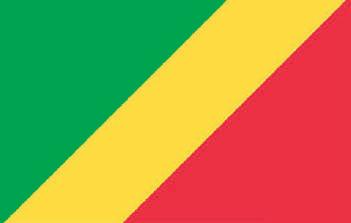
The Republic of Congo is a country in central Africa, located on both sides of the equator. Its neighboring countries are: Gabon, Cameroon, Central Africa, DR Congo and Angola. The country stretches for more than 1,200 km. It has a maritime coastline of 170 km between the enclave of Cabinda (Angola) in the south and Gabon. It also has a road network that serves the entire territory and 5,000 km of waterways. The administrative and political capital is Brazzaville and the economic capital is Pointe Noire. These two cities concentrate nearly 55% of the total population and 90% of the urban population. Nearly two-thirds of the territory is covered with dense forests and crisscrossed by waterways. On the eastern side of the country, the Congo River and the Oubangui almost act as natural borders with the DRC. Thanks to its forest and peatlands, Congo is an important carbon sink for the planet.
Official name: Republic of Congo
Head of State: President Denis Sassou Nguesso. Re-elected as president of the Republic of Congo in March 2021, Denis Sassou Nguesso had already led the country between 1979 and 1992; returning to power in 1997, he has won every presidential election since 2002.
National holiday: August 15
Population: 5.7 million inhabitants in 2022, 47% of whom are under 18 years old.
Area: 342,000 km²
Density: 14.8 inhabitants/km²
GDP growth: 3.2% in 2022; 3.5% in 2023 (e) and 3.6% (e) on average for the period 2024-2025. (source: World Bank)
GDP/inhabitant: $2,547 USD in 2022
Primary school enrollment rate: 96.5%
Official languages: French (Kikongo and Lingala have the status of national languages)
Currency: CFA Franc (XAF) 1 euro = 655.957 (fixed parity)
HDI: 0.571 in 2021
Date of accession to the UN: September 20, 1960
Date of ratification to the African Continental Free Trade Area (AfCFTA): February 7, 2019
Membership of regional economic groupings: Central African Economic and Monetary Community (CAEMC) and Economic Community of Central African States (CEEAC)
Religions: Christianity 85.9%; Agnosticism and Atheism: 9.0%; Popular religion 2.8%; Islam: 1.2%; Others: 1.1%.
Congo is divided into twelve departments:
- Bouenza (12,260 km2), capital of Madingou
- Brazzaville, the capital is the city of Brazzaville, the commune having the rank of department,
- Basin (74,850 km2), capital Owando
- Cuvette-Ouest, chief town Ewo
- Kouilou (13,650 km²), capital of Loango
- Lékoumou (20,950 km²), capital of Sibiti
- Likouala (66,044 km²), capital Impfondo
- Niari (25,925 km2), capital of Dolisie
- Plateaux (38,400 km2), capital Djambala
- Pool (33,955 km2), capital Kinkala
- Pointe-Noire, 510 km from Brazzaville, the capital of which is the city of the same name (departmental municipality);
- Sangha (55,795 km²), capital of Ouesso; The urban communes are Dolisie, 110 km from Pointe-Noire; Nkayi, 70 km from Dolisie; Mossendjo; Ouesso and Owando.
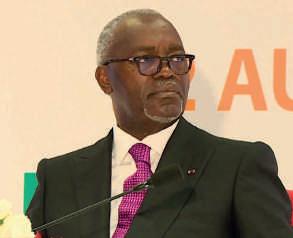
Interview with Hugues Ngouelondélé, Minister of Youth and Sports, of Civic Education, Skills Training and Employment since August 22, 2017. He was previously mayor of Brazzaville.
What are the main axes of the Employability Skills Development Project (French acronym PDCE)?
The PDCE is a Government project which was implemented with technical and financial support from the World Bank. It should be noted that the project was closed on June 30, 2023. Its objective was to promote the acquisition and strengthening of employment and entrepreneurship skills for vulnerable young people living in urban areas, in order to enable them to enter the labor market. It was composed of 4 main axes:
- The first concerns professional training, professional integration, support for entrepreneurship and support for vulnerable young people with the condition of being aged 17 to 30 and having a level less than or equal to the class of Terminale without Bac. The young people in this sub-component had been oriented to public and private training centers. The theoretical and practical training at the center is supplemented by a three-month advanced training course within a company or a professional specializing in the training sector.
- Axis 2 targets professional training for microentrepreneurs with the condition of being aged 18 to 39 and having an AGR in the informal sector. Young people in this sub-component benefited from technical capacity building in their field of activity within companies or clusters and from business management training.
- Axis 3 targets functional literacy and learning courses for young adolescents not in school and out of school with the condition of being aged 16 to 24, having or not a level less than or equal to 5th grade . Young people in this sub-component benefited from apprenticeships with master craftsmen - workshops -
or specialized professionals. Transversal training on daily life skills (French acronym CVC) had also been developed for the beneficiaries. - Concerning axis 4, the Competitive Fund aimed to support and finance on a competitive basis the entrepreneurial initiatives presented by young people trained as part of the initial project. At the end of the three training cohorts: 12,276 vulnerable young people benefited from direct interventions - training and learning - from the project, including 6,153 women, or 48%.
One in four young Congolese graduates is unemployed. Isn’t there a major course choice problem?
For the employment of young people in higher education, the results of the Survey on the Transition to Active Life (French acronym ETVA) Congo 2022 showed that around 1 in 4 young graduates are unemployed and only 16% of graduates of higher education have completed their transition. On the other hand, 48% have not started their transition and 36% are in transition. In addition, 84% of young higher education graduates hold informal jobs. This is due to many factors including: poor career guidance; the inadequacy of training programs in relation to the needs of the productive sector; the absence of a labor market information system; the narrowness of the job offer; weak partnerships between the education system in general and the productive sector.
The general objective of the “Mosala” project is to contribute to matching the training offer for young people with the skills needs of businesses and to contribute to the implementation and management of active policies in favor of employment, particularly aimed at reducing gender

inequalities in terms of professional integration. As such, it sets two main specific objectives, namely:
- improve the availability, relevance and quality of the public and private training offer in line with the prospects of integrating young people and, in particular, women into the labor market;
- support young people, and particularly women, through reinforced intermediation services to better inform them, guide them in their choice of training and support them in their professional integration process.
It also aims to strengthen the public employment service system and provide qualified personnel for the key sectors of the National Development Plan (NDP) 2022-2026. The “Mosala” project will start in the near future.
How do you plan to attract the talent pool represented by the European diaspora?
The upcoming opening, in Paris, of an orientation and information agency of the Congolese Agency for Employment
will allow the Congolese diaspora in Europe to be aware of the job opportunities offered by companies, from the public and private sectors, installed in our country. The main mission of the Congolese Employment Agency is to ensure intermediation between The main mission of the Congolese Employment Agency being to ensure intermediation between the suppliers and the job seekers, we hope that the opening of the Paris office will contribute to creating a dynamic towards a return. To attract talents from the Congolese diaspora, a set of incentive measures will necessarily be required, for example the possibility of accessing the property of an accommodation. This possibility exists.
The Government of the Republic will examine all the needs that will be expressed, in this respect, by the Congolese of the diaspora, as part of the exchanges that we will have with those concerned.
Located in the heart of central Africa, the Republic of Congo has great natural and human resources. According to the Ministry of Finance, economic growth is expected to average 4.2% over the period 2023-2024.
27.7% GROSS INVESTMENT RATE
8,144 billion OF CFA NOMINAL GDP
2.3% OVERALL GDP GROWTH RATE (NATIONAL COMMITTEE ECONOMIC AND FINANCIAL))
4.4% OIL GDP GROWTH RATE
3.3% INFLATION
6,397 billion OF EXPORT
2,953
Source: General Directorate of the Economy (Ministry of the Economy and Finance)
The good performance of the oil and non-oil sectors serves as a catalyst for the growth of Congo’s economy, which should be established at an average annual rate of 4.2% over the period 2023-2024. Economic growth in the Republic of Congo is expected to be 4.6% in 2024 compared to an estimated rate of 2.3% this year.
This dynamic is due to the strong recovery of the oil sector and the very good performance of non-oil GDP, which will show average growth of 5.5% and 3.9% respectively during the period (2023 and 2024).
According to the Ministry of Finance, the growth of the oil sector is explained by the entry into production of the
Bouatou field, with a production of 1.4 million barrels per year and the completion of new drilling on the old fields. In terms of the non-oil sector, the primary sector will increase from 3.9% this year to 6.4% in 2024, driven by the “Agriculture, livestock, hunting and fishing” branch, which will be at 5.8% on average. over the period studied. The secondary sector is expected to grow at 4.5% on average over the period 2023-2024 with an increase in building and public works activities (6.7%) due to the acceleration of the implementation of the National Development Plan 2022-2026.
Commercial, catering and hotel activities, for their part, will experience virtual stagnation, going from 3.9% in 2023 to 4% in 2024, bringing the tertiary sector to an average of 3% over the same period.
For the Congolese government, the implementation of the economic and financial program, under the Extended Credit Facility of the International Monetary Fund (IMF) and the acceleration of the implementation of the National Development Plan (NDP) 2022-2026 are factors that will positively impact the aforementioned economic outlook.
Note that the IMF’s growth forecasts for the Republic of Congo are slightly up over the period studied with 4.1% for 2023 and 4.6% for 2024.
In 2022, the dynamic of the recovery of the Congolese economy is already underway with positive growth of 0.4% compared to -1.5% in 2021.


Interview with Théodore Ikemo, Director General of the Congolese Sinking Fund (CSF), a public administrative establishment. The CSF is responsible for managing public debt.
What are the main missions of the CSF?
The Congolese Sinking Fund of Loans subscribed by the Republic of Congo - in the acronym CSF - is the technical body which assists the Government in the negotiation and management of loans subscribed by the State in the medium and long term.
The CSF is, among other things, responsible for all debt securities issuance operations, in foreign currency, on the international market and maintains public debt statistics.
The Congolese Sinking Fund is a public administrative establishment, with legal personality and financial autonomy. It is placed under the supervision of the Ministry in charge of Finance and benefits from the guarantee of the Public Treasury for its operations.
The initial 1971 text was updated in the early 2000s. Ordinance No. 6-2001 of February 5, 2001 takes into account the various legislative and regulatory developments that have occurred both at the sub-regional and national level, by modifying and supplementing the provisions of the original text.
The national public debt committee (French acronym CNDP), for which the CSF provides the permanent secretariat, coordinates public debt management activities. The Congolese Sinking Fund ensures the transparency of debt data.
The CSF also carries out, on behalf of the State, medium and long-term loans on the national and international market and ensures their management. It offers the government to the government a debt public
policy in accordance with the guidelines of the national economic and social development plan and fiscal resources.
The settlement of arrears of entrepreneurs’ debts is one of the requirements of the International Monetary Fund (IMF). Is the domestic debt soon to be cleared?
The clearance of the domestic debt follows a process which includes 3 stages: the centralization of all data at the CSF, a stage which has been carried out; the carrying out of audits of all debt by private firms currently being completed; the establishment of a clearance plan which is currently being adopted by the competent authorities. Pending the adoption of the clearance plan, payments were made to certain categories of creditors. Indeed, during 2022, the Government has undertaken to pay commercial arrears. The first phase made it possible to settle all audited and validated debts of an amount less than or equal to 10 million. The second phase consisted of paying the debts of the upper tranche up to 50 million FCFA. As part of the payment of this tranche, the creditors had the choice between a 35% haircut on the validated debt and full payment of the balance after haircut; or spreading the payment of the debt over 5 years with payment of the first installment during the year 2023. In March 2023, the government settled the debts with tranche amounts of up to 80 million FCFA. The treatment chosen for this category was the same as that of the second phase.
What is your role in investment projects financed by borrowing?
In addition to its original mission of managing external loans, the legislator added to the CSF in 1979 the execution of State investment expenditure. With this new mission, the CSF played the role of accountant assigned to the investment budget and therefore a player in public investment spending.
Taking into account developments and reforms, the management of public investments is currently shared by three authorities (public procurement regulatory authority, general delegation for major works and general management of public procurement control). The CSF no longer assumes the mission of responsible accountant for the investment budget and is therefore no longer involved in public spending in this area.
Congo is a member of the Central African Economic and Monetary Community, like Cameroon, Gabon, Equatorial Guinea, the Central African Republic and Chad. The Congolese Head of State is the dedicated President of the CAEMC Economic and Financial Reforms Program (EFRP-CAEMC).
CAEMC achieved the best continental performance in terms of inflation, with 5% on average, a gap of 9 points compared to the average for sub-Saharan Africa. With growth of 2.9% in 2022, which will accelerate to 3.3%, the region must face certain challenges such as the weakness of local production, the infrastructure deficit penalizing trade, and the low valorization of resources natural.
The last Conference of Heads of State paid tribute to the regional champion of reforms, Denis SassouNguesso. The Congolese president has, in fact, piloted the EFRP-CAEMC, the economic and financial reform program, an instrument put in place urgently in 2019 to coordinate responses to crises, guarantee the structural transformation of economies and strengthen resilience. This mechanism has contributed significantly to the resilience and recovery of the region’s economies. CAEMC is now working to create the conditions for effective free movement in its space to implement the AfCFTA.
The 11 priority integrating projects selected for the period 2023-2028 give pride of place to road and rail
corridors, including the famous road-rail bridge which should connect, by 2028, the capitals of the two Congos, Brazzaville and Kinshasa. 70% of CAEMC integrating projects presented at the Paris round table in 2020 actually started in 2023.
The Central African Economic and Monetary Community must also resolve the problem of currency transfer with the Bank of Central African States (French acronym BEAC).

One of the priorities of the Republic of Congo is the development of the national strategy for the sea and continental waters, the training of personnel and their acculturation to the concept of (French acronym AEMEC), the creation of the Institute of Advanced Maritime and Fluvial Studies in Brazzaville, equipment and training of AEMEC coordination centers and advanced posts. Congo is a member of the West and Central African Maritime Organization whose headquarters is in
Abidjan but, in CAEMC, there is no school of advanced maritime and river studies. This project will therefore, ultimately, be regional.
The EU is prepared to provide its expertise for the implementation of the national strategy for State Action at sea and in continental waters. This strategy will allow the government to strengthen the promotion of maritime and river areas so that they can contribute effectively to the economic development of the country.







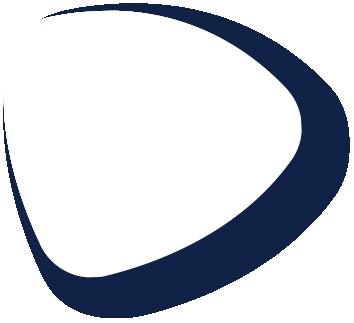


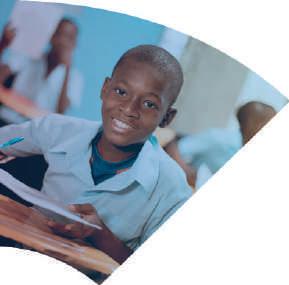
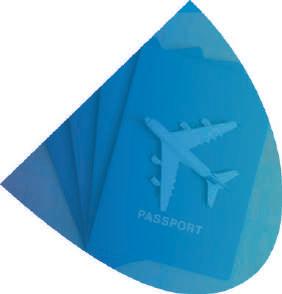



Interview with Isidore Ondoki, National Coordinator of the Commercial Agriculture Development Support Project (French acronym PDAC), benefiting from a financing agreement amounting to $100 million, over a period of five years, between the Republic of Congo and the World Bank.
Can you give us the main axes of the PDAC?
The development of the Project is due to the financing of the production, marketing, processing and mechanization business plans of producer groups and microenterprises, through a financial instrument called the shared cost fund. But also the rehabilitation of rural access roads, including waterways; construction of crossing works; the electrification of production areas; governance and reforms in the agricultural sector. It also involves strengthening the capacity of private actors and public institutions and carrying out strategic studies of the agricultural sector.
The PDAC will be closed on December 31, 2023. What preliminary assessment do you draw up?
Pending an impact study and a completion report in November 2023, the project’s results are more than honorable with nearly 15 billion FCFA in business plan subsidies; more than 1,600 kilometers of rural service roads rehabilitated and maintained, including 248 km of waterways and 3 electrified production basins. Let us also quote:
- an agropastoral center;
- two fish farming stations rehabilitated for the production of fry;
- an in vitro culture laboratory;
- a SAH laboratory currently being installed;
- a gene bank under construction;
- a seed control laboratory currently being installed;
- a crop disease control laboratory currently being installed;
- research and reinforced varietal conservation of cassava, peanuts, corn and soya and beans;
- a farm school set up at the Ecole Nationale Supérieure d’Agronomie et de Foresterie (ENSAF);
- Multifaceted support in public agricultural high schools. PDAC funding has generated significant positive effects on subsidized business plans, the rehabilitation and maintenance of agricultural roads, the electrical connection of production basins, the development of reforms and capacity building. There was a strengthening of food security thanks to the increase in yields and cultivated areas: 360,760 tonnes of agricultural products and 274,241 tonnes of processed products were marketed thanks to the financed business plans. We note the creation of approximately 11,3700 direct jobs including 3,120 permanent jobs and the opening up of 403 villages or 306,757 inhabitants. Access to electricity could promote the creation of companies and other business opportunities, the better functioning of health, administrative and educational structures, the improvement of State revenues, the comfort of the populations and the feeling of national belonging. The project undoubtedly retained young men and girls in rural areas thanks to the creation of jobs in rural areas.
Do you advocate sustainable agriculture that certainly feeds the population but limits its impact on the environment?
The Republic of Congo has significantly regressed in its food production capacity, despite enormous potential. According to our authorities, in particular Mr. Paul Valentin Ngobo, Minister responsible for Agriculture, every effort must be made to reduce the bill for food imports. The strategy for establishing Protected Agricultural Zones meets, among other things, this objective. In a country where environmental protection is a high priority for the highest authorities, the PDAC was implemented in compliance with the environmental and social safeguard policies of the World Bank and the Government. Overall, the PDAC was classified as a category “B” project, whose negative impacts are moderate and manageable. This was confirmed by environmental and social studies of business plans and infrastructure. Several safeguarding tools have been developed and applied with the aim of mitigating the potential negative impacts inherent to project activities.
The NDP 2022-2026 is structured around the development of six strategic pillars: agriculture in the broad sense, industry, special economic zones, tourism, digital economy and real estate development.
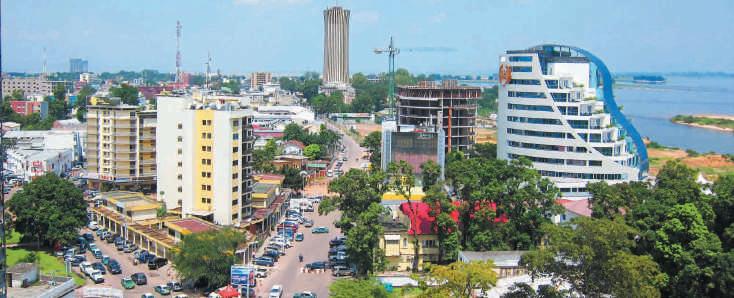
The NDP 2022-2026 represents the benchmark for the conduct of the government’s public development policies. Through this five-year program focused on inclusive growth, the executive intends to lay the foundations for a strong, diversified and resilient economy. Its implementation involves a set of coherent programs and actions contributing to the achievement of the objectives of the strategic axes defined by the Economic and Social Policies Task Force: the development of agriculture in the broad sense; industrial development; the development of tourism; the development of the digital economy; real estate promotion and the development of special economic zones. These programs and actions are contained in the Multiannual Priority Actions Program (PPAP). Developed with the aim of operationalizing the strategic orientations retained in the NDP, this planning tool, essential for piloting and assessing program performance, aims in particular to control public spending, stabilization and relaunch of national economy.
The National Development Plan, adopted by the government, includes 343 projects valued at 8,962 billion 59 million CFA francs. To finance this NDP, the government relies on its
own resources and on external resources (donations and bequests; loans and public-private partnerships). As part of its implementation, a portfolio of so-called priority or emergency projects was established by the government, taking into account the country’s capacity to mobilize both internal and external resources. These projects were targeted taking into account their significant impact and ripple effect. However, the government is late in operationalizing the 2022-2026 NDP and in taking into account several issues related to priority planning and the mobilization of development partners. It intends to launch a communications offensive aimed at its partners and the private sector, in order to mobilize more financial resources, as the national budget is not sufficient to finance the projects. The available resources represent barely 24% of the overall cost of the program, or 2,161 billion FCFA. In August 2023, the Congolese government succeeded in mobilizing the country’s main banks to support the implementation of the National Development Plan (NDP) 2022-2026. The executive thus hopes to make up for the delay observed in the execution of the priority projects of this five-year program focused on economic growth.

Interview with Hocine Benkhaled, Deputy General Manager of Banque Commerciale Internationale (BCI), a subsidiary since 2019 of the Banque Centrale Populaire (BCP) group, the 6th largest pan-African banking group by the size of its assets.
What is your Strategic Roadmap?
The BCI validated its Strategic Roadmap in 2020, broken down into a Medium-Term Plan 2021 – 2024. This translates into a global ambition highlighting the concept of Universal Bank with a balanced positioning on the Corporate and Retail markets, with an opening to new segments: young people, professionals, Very Small Businesses, associations, institutions. This addressing makes it possible to densify the portfolio according to market potential and opportunities. This ambition is also supported by the repositioning of the BCI as a key player in the top 5 of the Congolese banking sector through its expertise, the quality of its service and the comprehensive coverage of the needs of its clients. To do this, this SEO is carried out around three (03) main attributes:
- An expert bank through a service model with a proactive approach, a personalized relationship, and expert advice for “complex” customer operations;
- Better quality of service both at the commercial (responsiveness) and operational (reliability) levels, for key moments of the “Customer” relationship;
- Complete ranges covering all customer banking needs and precursor of new offers in Congo, thanks to the support of the BCP Group.
What services do you offer to businesses?
BCI has changed to better support its customers with new quality services and even more innovative products. For the specificities relating to Corporate Banking, our offer mainly concerns loans, deposit collection, investments, digital
products, Trade Finance, Cash Management, Cash Advance, International Trade operations... Among the innovations, we will not refrain from mentioning: BCINET, BCI Scan, partnerships with mobile telephone companies, the concept of Agency Banking organized as a franchise network, extending banking services in areas with high potential, not served by banks. In conjunction with the specialized subsidiaries of the BCP Group, we offer our institutional and corporate clients financial trading rooms; and national or regional banking pools, syndicated financing.
How does the BCI support the development of the Republic of Congo? And what is your development strategy?
Financing the economy is a noble mission assigned to credit institutions. This support involves setting up mechanisms to financialize populations. The BCI occupies good positions in terms of market share on receivables on the economy, with a proven presence for financing individuals, SMBs and large public and private companies. Added to this is an increasing desire to finance structuring projects within the framework of Public Private Partnerships. It is in this context that the BCI positions itself among the key players in financing the economy in line with the social project «the march towards development» dear to His Excellency Denis Sassou Nguesso, President of the Republic, Chief of the State, and translated into practice within the framework of the National Development Plan (NDP) 2022-2026.
Our development strategy is organized around the major axes and levers, drivers of growth and generators of GNP with a view to achieving the assigned objectives through the implementation of a new customer approach, an enrichment of the offer and an acceleration of digital transformation. Also, numerous cross-functional projects have been undertaken to improve processes, organization, the distribution network, information systems, risk management, customer satisfaction and dense and targeted communication. Faithful to its values of PROXIMITY, CITIZENSHIP, PERFORMANCE and INNOVATION, the BCI addresses several major transversal issues to improve its positioning on the national financial scene.
The private sector is called upon to play a major role in the diversification of the Congolese economy. Over the medium term, non-oil private sector production is expected to grow in line with employment and income levels.

The government intends to take actions to strengthen business creation. National economic players should be encouraged to seize the investment opportunities that their offers the National Development Plan. The private sector must now realize that it is at the center of global economic development strategies.
According to figures from the first General Census of Congolese Businesses (French acronym Regec) published in March 2022, the national private sector weighs more than 4,611.8 billion CFA francs in overall turnover, with a strong disparity between the large industrial groups and very small businesses, as well as local small and mediumsized businesses (SMBs). The formal sector constitutes 82.8% of overall turnover; on the other hand, informal actors very present in the Congolese economy (94%) do not generate significant turnover. Economic activities are largely concentrated in urban areas, with the exception of the departments of Kouilou, Pool, Plateaux, Cuvette, Cuvette-Ouest and Likouala where productive activities are in rural areas. In eight departments, turnover is dominated
by economic units in the tertiary sector. In Likouala, the primary sector accounts for 72.9%, while in Kouilou and Sangha, it is the secondary sector which provides the largest share of turnover.
This first Regec made it possible to identify 79,775 active companies, including 92.6% very small companies, 5.8% SMBs and 0.1% large companies. The investigators were also interested in the profile of the promoters of these Congolese companies (78% men compared to 29.5% women and 70.5% nationals) and social leaders (75.1% men compared to 24. 9% women, for 69.3% nationals and 30.7% foreigners).
Overall, nine out of ten companies are created with initial funds from the promoter, with a strong influence of young companies whose average age at creation varies between 3.8 and 7.2 years. In terms of volume of jobs, the informal sector employs 58.4% of active people in Congo, while four out of five jobs are created by economic units operating in the tertiary sector, with the secondary and primary sectors providing, respectively, 18 .6% and 3.2%. For the Congolese government, the results of this Regec constitute a real
compass for the public policy in favor of the national private sector and the implementation of the National Development Plan 2022-2026. This data will guide the government in its reforms, particularly in terms of improving the business climate. One of Congo’s main partners, the World Bank finances numerous projects linked to the development of the private sector and the strengthening of the national statistical system. The development of the national private sector also involves the creation of value chains, like the twenty-four clusters benefiting from the Commercial and Entrepreneurial Capacity Building Program (French acronym PRCCE).II) whose main donor is the European Union (EU).
These clusters, a group of 343 entrepreneurs, are spread across three value chains: corn and poultry, fruits/vegetables/non-timber forest products and wood/ carpentry. These producers are present in Brazzaville and Pointe-Noire, but also in the departments of Bouenza, Lékoumou, Niari, Pool and Sangha. Launched in 2017, EU support has already promoted the emergence of a generation of competitive Very Small Enterprises/ Small and Medium Enterprises, through the concept of clusters. To date, the clusters have benefited from equipment valued at nearly 1.6 billion FCFA and two laboratories for analyzing agri-food products worth 490 million FCFA.

Interview with Ludovic Itoua, Director General of the Directorate General of Taxation and Property (DGTP), the technical body which assists the Minister of Economy and Finance in the exercise of his responsibilities in tax matters.
Can you give us the main axes of the TP’s 2022-2025 strategic action plan?
The 6 strategic axes 2022-2025 of the TP are:
- Improving tax policy, by finding the necessary balance between establishing an attractive, competitive, comprehensive tax system capable of generating the majority of budgetary resources and maintaining it socially equitable and promoting creation jobs and economic growth;
- Effective management of the taxpayer register, expanding the number of active taxpayers, ensuring the integrity of
the taxpayer file, improving taxpayer identification and formalization activities;
- Improving the quality of services provided to users, through the establishment of a relationship of trust and incentive for the voluntary fulfillment of tax obligations by taxpayers, including by improving the monitoring of performance and user satisfaction, and by publishing key monitoring data;
- Strengthening the basic functions of the tax administration, through the reorganization of services and support for key functions such as declaration, payment, control, handling of disputes and recovery;
- The structural reorganization of the TP, by re-clarifying/ redefining the distinction between the missions of the central services and those of the operational structures, by strengthening the segmentation of taxpayers and the application of the principle of single tax contact, by integrating within the operational structures all tax functions, including collection. It also aims to establish a performance-based training and human resources management program, and the simplification and digitalization of services.
-The modernization of the TP’s infrastructure, to be a player in harmonious development through the modernization of infrastructure in order to effectively contribute to improving its image in line with the policies it develops.
The government has decided to accelerate the diversification of the economy. This political will was reflected in the establishment of a Ministry of International Cooperation and Public-Private Partnership in May 2021 and then by law of December 30, 2022 relating to PPP contracts.
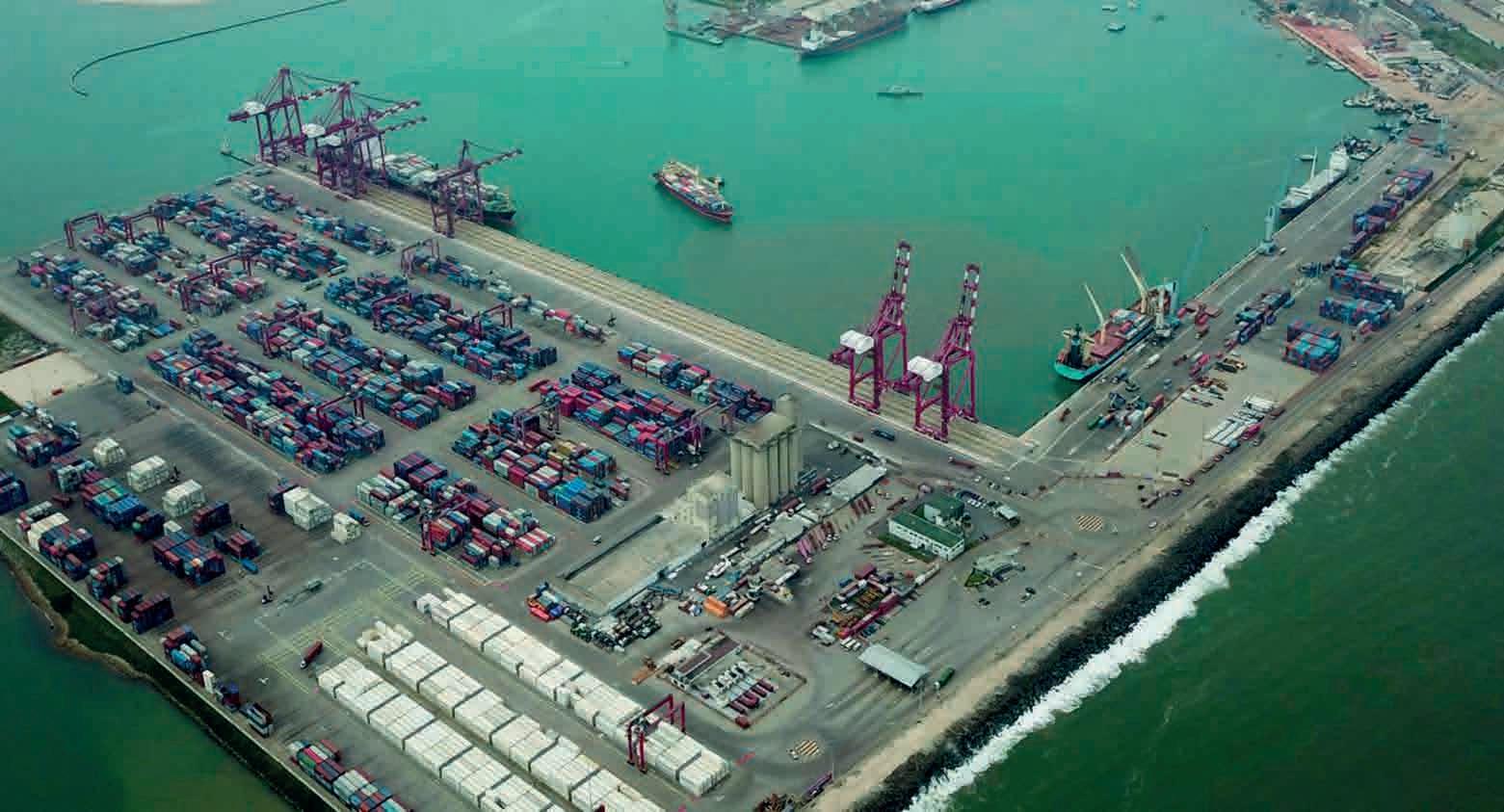
Congo has dedicated a ministry focused on PPP projects to attract foreign investors. Intending to develop public-private partnership initiatives to boost certain eco-sectors economics of the country, this ministry has launched into the promotion of the Congo destination to international investors. New impetus was given with the law of December 30, 2022 relating to public-private partnership contracts. It explicitly aims to attract new investors in order to finance the infrastructure of the National Development Plan (NDP). This plan plans to raise 8,000 billion FCFA (12.2 billion Euros) for the benefit of six priority sectors. Several projects are already managed under PPP, including the special economic zones of Pointe-Noire,
Oyo-Ollombo and Ouesso, with the Arise group, or the new container dock at the Autonomous Port of PointeNoire, under development with the Emirati group Abu Dhabi Ports.
Generally speaking, in a PPP, the state retains ownership and defines the degree of participation of the private sector who is paid for providing an asset or facility. PPPs thus constitute an innovative method of financing and an alternative to public debt for the Republic of Congo. To form partnerships and invest, the conditions require a favorable business climate. To do this, Congo has set up a one-stop shop for business creation, a public-private dialogue committee and the vote on the law on the creation of the High Authority for the fight against corruption.
Improving the business climate and consolidating the legal and judicial system of the productive sector, creator of wealth, should accelerate and make our country more attractive to partners.
Excerpt from the speech of the President of the Republic Head of State, Denis Sassou Nguesso, on the state of the Nation before the Parliament meeting in congress on January 3, 2022.
Thanks to the NDP 2022-2026, the projection of economic growth is 3.5% in 2023 with a pool of opportunities. The strategic objective of attracting more foreign investors involves the ongoing operationalization of Special Economic Zones (SEZ).

As the gateway for investors, API welcomes, informs, assistance and support to foreign and domestic investors throughout the setting up their investment projects.

The API’s mission is to implement the government’s investment policy through activities to promote and facilitate private investments; to contribute to improving the business environment; to design and promote a brand image likely to attract potential investors in Congo.
The API also provides investors with assistance, particularly in obtaining the visas necessary for the stay of foreign personnel in Congo and authorizations allowing the implementation of the execution of investment programs. It helps develop partnerships between Congolese and foreign companies and supports Congolese companies in expanding their activities. Foreign investors can also rely on the API in
their research and development of growth drivers in Congo. Present in the organization of economic and commercial events, the API provides investors with reliable information on investment opportunities and other economic, commercial and technical data. It supports investors in carrying out identification, feasibility, monitoring and evaluation studies of investment projects.
A public establishment of an administrative nature, endowed with legal personality and financial autonomy, the Investment Promotion Agency (French acronym API) was created by law n°19-2012 of August 22, 2012 and officially launched its activities in July 2014. It is administered and managed by a Steering Committee and a general management.

In the National Development Plan (NDP) 2022-2026, what are the priority economic sectors for investments?
The National Development Plan (NDP 2022-2026) is the variation of the social program of His Excellency the President of the Republic Denis Sassou Nguesso, “Together, let us continue the march” which places economic diversification and the objectives of a sustainable, resilient and inclusive economic growth at the heart of its concerns. It is for this reason that, from the point of view of API-Congo, in connection with the mission which is ours, as prescribed by law 19-2012 of August 22, 2012, and which includes the promotion of Congo as a destination for investments and the facilitation of private investments with a view to increasing investments in all sectors of economic activity, the priority sectors for investments fall within the main strategic priority axes retained by the NDP 2022-2026 and also cross-cutting areas that support the development of these strategic sectors.
From this point of view, we generally encourage and support investors who direct their investment decision in Agriculture in the broad sense, industry, tourism, digital technology, Special Economic Zones, Real Estate, infrastructure base and more generally the sectors of transversal activities which contribute to the achievement of the objectives of the NDP 2022-2026 such as energy and other basic infrastructures.
What is the place of the private sector in the implementation of the NDP 2022-2026?
Due to the socio-economic objectives pursued by the NDP 2022-2026, the private sector is called upon to play a leading role in the implementation of this plan.
Indeed, the State expects a lot from the private sector which was, to a certain extent, associated with the development of this plan and made aware on several occasions on this question of the expected participation of the private sector in the implementation of the NDP . Obviously, there is no question of the private sector investing completely at the convenience of the State. This would be nonsense because the private sector is expected to expect a return on investments from its investments. Also, for the State, it is a question of creating the conditions to encourage the support of the private sector in the realization of the expected investments in the priority sectors of the NDP 2022-2026 and for the private sector, it is a question of seizing the opportunities presented by the mature projects of the NDP 2022-2026. The participation of the private sector is expected up to 70% of investments in the financing of NDP projects, including within the framework of investments in the form of Public Private partnership. The importance of the place given to the intervention of the private sector in the achievement of the objectives of the NDP can be summed up in the declaration of the Prime Minister, Head of Government who said in one of his speeches that «the Government will be judged to its capacity to mobilize private investors for investment in the sectors of the NDP 2022-2026’’.
The authorized bodies of the AfCFTA have finalized the legal examination of the three main protocols of the AfCFTA, including the protocol on investment. What will the latter bring to Congo in terms of FDI?
Congo is a state party to the African Continental Free Trade Area (AfCFTA) agreement which it signed on March 18, 2018,

ratified on December 27, 2018, and the law promulgated on February 7, 2019. Since then, the Government is working to raise awareness among economic actors on the issues of the AfCFTA through the popularization of the national strategy for the implementation of the AfCFTA.
The provisions of this protocol on investment, of which API-Congo was associated with the negotiation on behalf of the Congo, are likely to encourage investments and intra-African trade, but also to make Africa a destination for investments both for investors outside Africa and for African investors to invest in other countries on the continent.
A certain number of provisions relating to investment are now common throughout the continent.
The integration of the notion of sustainable development into this protocol is now the vision shared by all. That is to say that the States Parties agree to best facilitate investments which take into account, while reconciling, the concerns of countries aimed at their economic and social development and the protection of the environment.
Another innovation: the establishment of a Pan-African Agency for Trade and Investment Promotion intended to give a new dynamic to the national investment promotion agencies of the AfCFTA member countries, and create the conditions for attraction and increased growth in sustainable intra-Africa investments.
The Congo, which already has a tradition of attracting foreign investments, particularly in the oil sector, intends to redouble its efforts and optimize the necessary reforms to align with best practices in attracting and retaining investments in a manner to position the country among the preferred destinations for investors and investments from all horizons, including in non-oil sectors, conducive to the deepening of the diversification of the national economy.
You are now Special Advisor to the Prime Minister. What does your mission at the Prime Minister’s office consist of?
Indeed, I benefit from the confidence of the Prime Minister Head of Government who was kind enough to appoint me
Special Advisor, responsible for Promoting Investments and improving the Business Climate. My mission is to assist the Prime Minister Head of Government so that he takes measures adapted to the needs of our private sector in terms of improving the business climate.
I must say that it is an exhilarating task but very restrictive and arduous in terms of obligations of expected results. Because, as you know, the business climate in particular is everyone’s affair and the problem is transversal.
Reforms and texts are developed, if everyone wherever they are, in the sphere of business and in administration and as a general rule in the investment environment, does not participate in the effective application of the texts taken and to the effective implementation of the reforms undertaken, all our efforts will be in vain, and it is precisely at this level that the task is difficult.
My mission at the Prime Minister’s office therefore includes an important part of raising awareness among stakeholders in the business climate and the investment environment on the importance and urgency of becoming aware of the issues inherent to the climate. business and the promotion of investments and therefore the marketing of our country as a breeding ground for opportunities just waiting to be exploited and as a destination for investments in all directions. Among other things, in the background, there is the public investor dialogue that must be constantly encouraged and weaved by all means, so as to bring closer and maintain permanent consultation between public administrations and investors, and create thus the conditions which make it possible to continually improve the business climate and the attractiveness of our country. It is at this price that the Congo will be able to effectively align itself with international developments, by providing itself with increased capacities to attract and retain useful and innovative investments, favorable to the economic diversification advocated.
This is what we are working towards and it is in consideration of this vision of things that the first edition of the “Investor Breakfast” was organized on February 25, 2023. This brought together investors and legal companies Congolese around the Prime Minister and certain members of the Government, with a view to a direct and frank dialogue which was well appreciated by the companies. This event, which is the first of its kind, will have allowed investors established in Congo to frankly and directly express their grievances to the government on the one hand, and on the other hand, it will have led to resolutions likely to significantly improve
the business climate and the investment environment on several aspects. Furthermore, the Prime Minister, Head of Government, has issued several circulars to public administrations in order to prohibit certain behaviors criticized by the private sector.
Eight women are currently members of the government out of 37 ministers. Is the place of women in Congo more important in the business world?
To date, we have around 20% women in Government. Which is not so bad even if we are still below the rule of 30% women in the decision-making sphere. There are many large countries, so-called developed, which have a rate lower than that of Congo.
I would also like to take the opportunity that you offer me through this question to point out a fact which is not so often mentioned and which is to the advantage of our country, namely equality between men and women in terms of salaries. . We don’t say it often enough: we are one of the countries that stands out for the fact that men and women, with equal skills, earn the same salary. The question of gender does not even arise when it comes to the remuneration of employees or managers. As you well know, this is not the case in many countries, including some developed countries. As for the place of women in the business world, it is very important and there are many women in business in Congo. And if to these affairs we had to add the social dimension, I would even say that women are the basis of the businesses that really feed the population in Congo, because they are the ones who are the owners of very small and small businesses, both in the informal sector and in the formal sector of the crafts, which provide jobs, including in the form of self-employment. Everyone knows how these sectors of activity form the basis and the crucible of very small and SMBs constituting the bulk of the Congolese economy. Considering only the formal sector, based on statistics from the Congolese Business Creation Agency (French acronym ACPCE), on an annual average, between 2015 and 2021, 26% of businesses created were created by women.
The Congo therefore has a significant potential for women entrepreneurs and it is no coincidence that the 12th edition of the International Forum of Entrepreneurial Women (Fied) bringing together more than twenty (20) countries under the theme «Let’s support African businesses to strengthen the capacities of the processing sectors, accelerators of “Made in Africa”, was held in Congo, in Brazzaville, from July 31 to August 5, 2023, under the high patronage of Ms. Antoinette Sassou Nguesso, wife of the Head of the State.
The first edition of the Investors’ Breakfast, organized by the Prime Minister’s Office under the theme «Together let’s improve the business climate», was held in February 2023. A direct and frank dialogue has thus been established between the government and investors in the Congo.

Initiated to become the reference meeting between the government and investors, this first edition of the Investors’ Breakfast brought together around the Prime Minister Head of Government Mr. Anatole Collinet Makosso, eight ministers, more than 70 national business leaders , international as well as the presidents of the employers’ unions, Uni Congo and Unoc. Several sectors were represented including foresters, farmers in the broad sense, miners, traders, industrialists, transporters, freight forwarders, airport assistance companies, hoteliers, companies in the digital and audiovisual fields. , as well as those in the field of health, construction and public works. Prior to this meeting, Ms. Annick Patricia Mongo, Special Advisor to the Prime Minister, Head of Government in charge of the business climate and Director General of the Investment Promotion Agency (French acronym API) was tasked with carrying out a survey on the perception of business leaders on the business climate.

This investigation demonstrated that judicial insecurity, tax harassment, administrative delays, the absence of basic infrastructure, the absence of dialogue between the government and the private sector, put a brake on the development of the private sector.
Among the proposals made to the government are the creation of a real taxpayer charter and the construction of basic infrastructure across the entire territory. Reasons for satisfaction also emerge from this report, notably the broad attribution by the State of establishment agreements, the tranquility and peace reigning in the Congo, the improvement in the economic situation of the country, the good prospects and the reforms undertaken. or in progress. The face to face with investors, creators of wealth and jobs, constituted a moment during which the members of the government concerned were able to respond to the concerns raised such as the internal debt,


the Universal Health Insurance Fund (French acronym CAMU), the price of fuel, log exploitation and the prices of basic necessities.
To respond to the concerns of the private sector, the Prime Minister, Head of Government, concluded by taking eight resolutions. These include the establishment of a team under the authority of the Minister of Finance, responsible for rationalizing or reducing tax and customs controls, managing tax controls still open, examining the issue of fund transfers; then the establishment of an appropriation workshop on the question of production sharing in the context of timber exploitation as well as the establishment of a monitoring team on the questions of judicial abuse. The Head of Government promised to examine the question of the subsidy put in place for the import of wheat and the price of bread and will work on the establishment of fuel storage depots in landlocked areas. Ultimately, the Prime Minister intends to organize


as soon as possible the inaugural session of the National Consultation Committee.
The second edition will take place in Brazzaville, either at the end of the year or in February 2024.
- A corridor in the heart of Central Africa
- A stable country
- The abundance of natural resources
- Access to a market of more than 174 million consumers
- A non-discriminatory legal and regulatory framework
- Tax incentive measures
- 4 special economic zones
- An effective development strategy
- Continuous improvement of the business climate
From November 15 to 18, 2023, Brazzaville hosts the 7th edition of the Tropics Business Summit (TBS) & Trade Expo. Under the theme “Green investments, investments and entrepreneurship”, this summit aims to promote intra-African and foreign investments and to reposition Africa globally.
The Tropics Business Summit is the largest investment forum for development on the continent. He wants to fill the financing gap between the English-, French-, Portuguese-, Arabic- and Spanish-speaking public and private sectors for the industrialization of Africa. Having become the premier summit of entrepreneurs, innovators, investors, family offices and champions of public-private partnership, the TBS wants to accelerate the era of intra-African trade and promotes win-win bilateral cooperation with the rest of the world.
Since its inception in October 2017 in South Africa, the organizing committee has remained committed to engaging with delegates through a results-driven agenda. It facilitates networking and business opportunities for investors to explore concrete projects for sponsors and partners. In terms of impact, the last Tropics Business Summit attracted an envelope of 500 million dollars of investments thanks to the mobilization of investors in Africa, Europe and South-East Asia.
This 7th edition of the Tropics Summit will take place in Brazzaville in the Congo Basin, the lungs of Africa. The summit has a capacity to connect over 800 speakers and panelists, over 75 governments and over 100 investors

and with a global audience of almost 500,000 digital participants in Africa and beyond across a variety of public and private sectors.
The government wants to raise awareness and mobilize Congolese abroad about the benefits of entrepreneurial support schemes. Access to credit can prove to be a barrier, due to the demand for loan guarantees, the high cost and real security, the Ministry of SMBs, Crafts and the Informal Sector relies on the Guarantee and Support Impulse Fund (French acronym FIGA). This tool
provides assistance directly to companies in creation, resumption of activities or development, faced with problems of access to financial, material and intangible resources. In addition, through the ACPCE, a one-stop shop for administrative formalities, the government offers facilities in terms of administrative procedures and exemptions for project leaders. Business creation formalities only last 48 hours
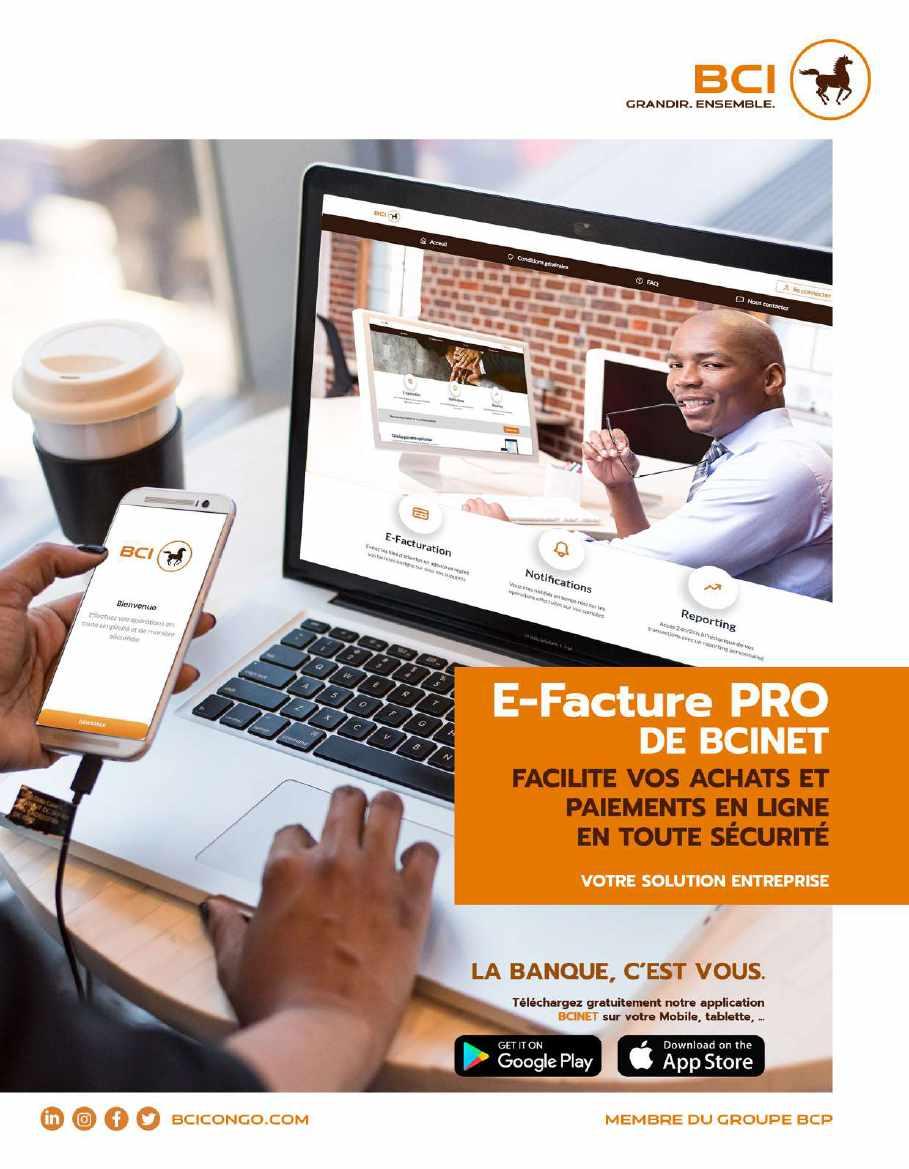

Interview with Michel Djombo, President of the Union Patronale et Interprofessionnelles du Congo (Unicongo) since November 22, 2022. This employers’ association represents private sector companies in Congo and defends their interests with public and institutional authorities.
How is Unicongo structured?
Unicongo, as the main employers’ union in the Republic of Congo, assumes the mission of representing and defending the interests of employers and businesses operating in the country’s formal economy. Unlike a confederation, Unicongo does not bring together professional associations, with companies joining this union directly. Our broad membership base extends from very small businesses (VSBs) to large groups, grouped within 15 distinct sectoral federations. To fully fulfill our role, we have assigned ourselves five main missions:
- Conduct of collective negotiations with worker unions: Our Union is the only one authorized by public authorities to negotiate working conditions, wages, social benefits and other aspects of labor relations in the various sectors of the national economy. Our goal is to reach agreements that are fair and mutually acceptable to all parties.
- Advocacy with public authorities: Our daily commitment consists of advocating for policies supporting businesses and promoting the economic development of the Republic of Congo.
- Quality source of information: We provide our members with essential information regarding labor legislation, best practices in human resources management and other relevant topics.
- Representation before the courts: Several of our members occupy positions as assessor judges in the Labor and Commercial courts, we serve as employer representatives in
the commissions dealing with disputes related to dismissals for all companies, members or not of Unicongo.
- Research and analysis: We carry out economic studies and research to provide our members, international institutions and the government with relevant data and analysis. This information helps businesses make informed decisions and anticipate market developments.
In short, Unicongo plays a central role in promoting the interests of employers and businesses in the Republic of Congo, ensuring the defense of their rights, their representation in negotiations and the creation of a favorable business environment. and economic growth.
What is your strategy, particularly with regard to improving public-private dialogue?
We strive to avoid the situation where we passively wait for measures to be implemented before expressing contradictory opinions, especially when we consider these measures to be counterproductive to improving the business climate. Instead, we take a proactive approach by maintaining constant dialogue with public authorities. In addition, in 2021, we developed a white paper which provided a clear diagnosis of the business environment in our country, proposing some possible solutions. In 2024, we plan to repeat this exercise, broadening our thinking to include proposals to truly diversify our economy.
What advice would you give to a future investor in Congo?
The advice we systematically give to new entrants to the Congolese market is to partner where possible with a local company, preferably a member of Unicongo. Investing with a local partner offers many benefits: market knowledge, networks, risk reduction, regulatory compliance, credibility, local resources, social responsibility, cultural adaptation and access to government incentives. However, the choice of partner requires due diligence and clarity of objectives. Ultimately, this collaboration can help foreign investors succeed in our sometimes complex market.
Member of several regional forums, Congo offers a favorable environment for international investors. Furthermore, this Central African country has planned a whole series of incentives unveiled to investors by the API services.

Congolese legislation creates a favorable climate for business development, in particular thanks to Congo’s membership in numerous regional and international organizations. The 2023 finance law removed twenty-four levies linked to import-export and agricultural companies benefit from an exemption from corporate tax and special corporate tax. These exemptions from duties and taxes are in line with the NDP 2022-2026. The main measures introduced in the finance law target parafiscal charges levied by several administrations during and after import operations. The API supports more than a hundred companies in Congo each year and promotes partnership between
local companies and multinationals wishing to set up in the country.
A member of the Central African Economic and Monetary Community (CAEMC) and therefore of the Franc zone, Congo benefits from a fixed exchange rate between the CFA Franc and the Euro.
Congo’s membership in the Organization for the Harmonization of Business Law in Africa (French acronym Ohada) makes applicable a set of clear and modern rules

which govern in particular company law and the other most important areas of business law in the seventeen member states.
The country is also a member of the African Intellectual Property Organization (AIPO), which standardizes the protection of intellectual and industrial property rights as well as the centralized filing procedure.
The Congo has ratified the CIMA treaty (Inter-African Conference on Insurance Markets), which creates a single regulation of insurance operations and establishes a single regional commission to control these activities.
The Congo has concluded three tax conventions, including one with France dated November 21, 1987. A convention is currently being negotiated with Morocco. A convention to prevent double taxation also exists within CAEMC, making it possible to reduce the tax burden between member states, except in terms of the transfer of dividends.
Congo has joined the ICSID (International Center for Settlement of Investment Disputes) and the MIGA (Multilateral Investment Guarantee Agency). However, it
has not ratified the New York Convention on the Recognition and Enforcement of Foreign Arbitral Awards.
Foreign companies can directly carry out an activity, without creating a company, by setting up a branch in Congo. However, it should be noted that any branch of a foreign company, whose head office is not located in a member state of Ohada, must be transformed into a company after two years of existence, unless extension granted by the Ministry of Trade.
The declaration formalities linked to the creation, transfer, extension, modification and cessation of commercial activities are carried out at this one-stop shop which is the Congolese Agency for Business Creation (French acronym ACPCE). The ACPCE brings together: the departmental commerce directorate for the establishment of authorization to exercise commercial activities; the departmental labor directorate for business opening registration; the registry of the commercial court for the establishment of the commercial and personal property credit register (French acronym RCCM); the Chamber of Commerce, Industry, Agriculture and Trades (French acronym CCIAM) for registration; the national social security fund (French acronym CNSS) for registration; the national statistics institute (French acronym INS) to obtain SCIET-SCIEN numbers. At the ACPCE, formalities are carried out in a single place, in a single payment, in a single document and in just a single hour.





The General Directorate of Taxation and Property (GDTP) is the technical body whose main mission is to assist the Ministry of the Economy and Finance in the exercise of its responsibilities in tax matters.
The main missions of the TP are to:
- Implement the Government’s tax policy;
- Develop preliminary drafts of legislative and regulatory texts and draft international tax conventions in tax matters;
- Determine the basis, ensure the liquidation and control of both direct and indirect taxes, registration fees, stamp duties, land registration fees and similar taxes;
- Understand tax and similar tax disputes;
- Identify and sanction omissions, concealments, inadequacies and, in general, tax infractions;
- Participate in the constitution and management of private movable and real estate assets of the State;
- Alienate State movable and immovable property;
- Ensure the management of curatorship, inheritances, vacant property and property placed under sequestration;
- Take legal action on behalf of the State in tax matters;
- Maintain, in collaboration with partner administrations, the national register of State land ownership;
- Ensure, in conjunction with partner public administrations, compliance with legislation regarding property registration.
Organization:
The general directorate of Taxation and Property is headed and managed by a general director. Mr. Ludovic Itoua has been Director General since 2019 with the mission of maximizing tax revenue and improving trust between taxpayers and the tax administration.
In addition to the management secretariat responsible for receiving mail and the IT service responsible for ensuring the operation and maintenance of IT applications, ten operational directorates are under national jurisdiction:
- the service control department;
- the regulatory and litigation department;
- the management of registration, land and property taxation;
- the large business tax department;
- the tax department for small and medium-sized businesses;
- the personal tax department;
- the oil tax department;
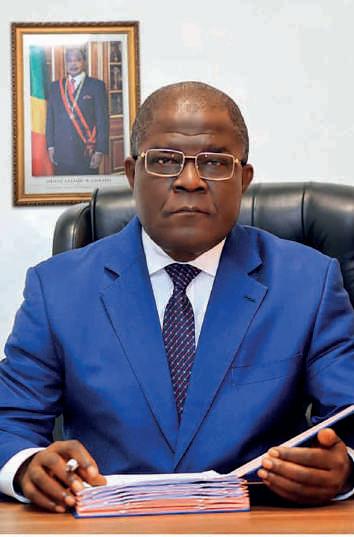
- the studies and forecasting department;
- the general audit and research department.
Congolese tax regime:
The Congolese tax system includes several tax regimes. Among the specific regimes, let us mention the flatrate corporate tax (French acronym ISF) which applies specifically to foreign legal entities which engage in industrial, commercial and other activities in the territory of the Republic of Congo. The tax rate has been 33% since 2020.
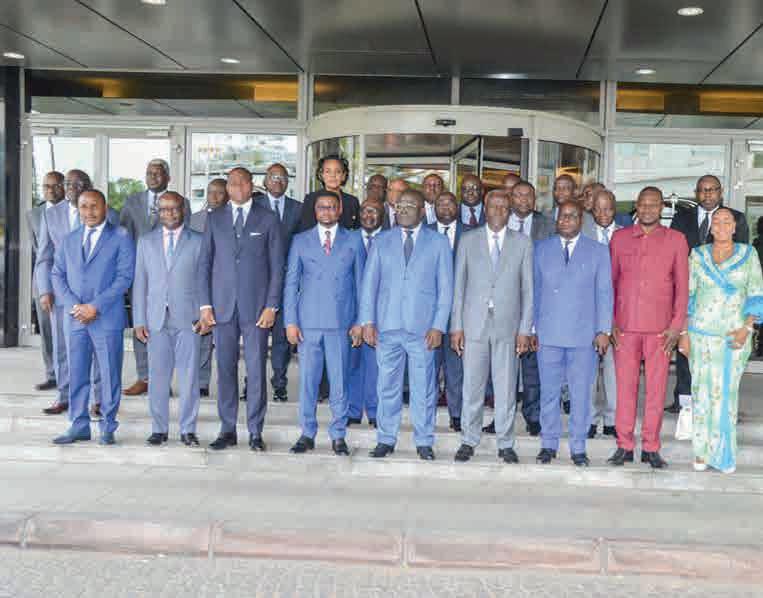
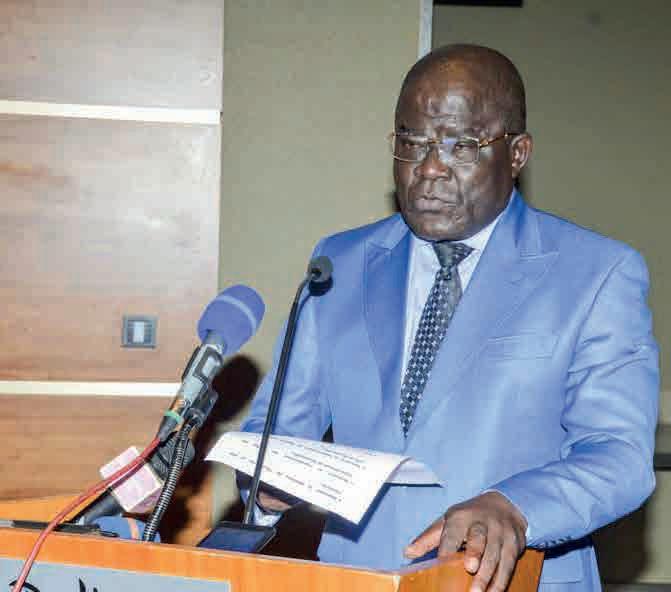
Other specific regimes offering particular advantages to national and foreign investments and guaranteeing a better return on investment are as follows:
- the regime for parent companies and subsidiaries;
- the tax regime for branches;
- the tax regime for company headquarters;
- the tax regime for holding companies;
- the tax integration regime for groups of companies;
- the tax regime of special economic zones;
- the tax regime for companies approved by the investment charter.
The investment charter provides for two regimes: privileged regimes and incentive measures. The preferred regimes consist of the General Regime G; of the Special Regime S and the Preferential Development Zone Regime.


The general regime G applies to companies which have made an investment greater than or equal to 100,000,000 FCFA. The “S” regime is a regime for the promotion of small and medium-sized enterprises. It applies to companies under Congolese law which have made an investment greater than or equal to 30,000,000 FCFA and less than 100,000,000 FCFA.
There is also a Tax Regime for Free Health Zones (LF2014).

A tax internet portal is available to facilitate all procedures, including customs: https://impots.gouv.cg/ portail-client-web/

Interview with Fernand Gaboumba
Moukengué, Managing Director of LCB CAPITAL, a subsidiary of LCB Bank. A graduate of Leeds Metropolitan University in London, he has managed this stockbroking company operating in the Central African financial market since 2015.
what is your development strategy?
Created in 2015, LCB CAPITAL is a stock exchange company approved by COSUMAF (French acronym for Financial Market Surveillance Commission) and active throughout the CAEMC zone and which offers its clients a varied and innovative range of investment solutions. and investment in financial markets.
LCB CAPITAL operates in particular in the areas of stock market intermediation, dematerialization and custody of securities and financial advice.
LCB CAPITAL stands out for its entrepreneurial independence, the performance and simplicity of its investment and placement solutions; all perfectly adapted to the specificities, needs and requirements of each of its clients.
Do you provide investment advice to investors?
Do you want to ensure your children’s future, prepare for your retirement or build up capital to pass on later? So many long-term projects for which you can consider diversifying your savings on the stock market. What precautions should be taken ? How to invest well? Tip #1: Be prepared before investing; Tip #2: Carry out the checks before signing any document with a financial intermediary; Tip #3: Track your investments after investing.
Stay in contact with your financial intermediary and with them, check that your investment still corresponds to your objectives and your profile.
How does LCB CAPITAL support the development of the Republic of Congo?
The role of financial market players including LCB CAPITAL is crucial in the development of the Congolese economy. Indeed, we are working to put in place financing solutions for both the State and the Private sector. By supporting companies and the State in their development projects, in their strategic and organizational choices, LCB CAPITAL contributes in some way to the development of the Congolese economy.
What impact will the recent capital increase of the Central African Stock Exchange (French acronym BVMAC) have?
Indeed, the capital increase by incorporation of debts enabled BVMAC to obtain a reduction in its debt. The idea behind the capital increase is above all to strengthen equity capital in order to accelerate the process of revitalizing the financial market, 2nd stage after the physical and institutional merger in 2019. This should be facilitated by the listing very soon on the stock exchange of state enterprises. Gabon, Congo, Equatorial Guinea and Cameroon have each already sent a list of public companies of which they wish to sell part of the capital on the stock exchange. The transmission of their lists should make it possible to invigorate the sub-regional stock market a little.
The law of December 30, 2022 on public-private partnerships (PPP) breathes new dynamism into investment in Congo. The new PPPs will be intended to finance NDP 2022-2026 infrastructure for the benefit of six priority development sectors.
The five-year plan plans to raise 8,000 billion FCFA francs, for the benefit of six sectors: agriculture, industrial development, special economic zones, tourism, the digital economy and real estate development. Desired by the Presidency of the Congolese Republic, the strategic shift towards public-private partnerships (PPP) resulted in the law of December 30, 2022, reflecting a real change of direction.
The State will refocus its funding on the essentials: government, public service missions, the extension of social protection, education. It will encourage the private sector and international investors to take over, by offering them a modern and attractive legal framework.
The first PPP contracts were signed in 2011, but the need to institutionalize, perpetuate and secure the use of this type of contract was becoming increasingly significant.
The law establishes the framework within which a PPP is signed between a public body and a private company with the objective of allowing a distribution of resources, risks, responsibilities and benefits between the two parties. These will most often involve contracts for the construction, maintenance and operation of public facilities (roads, hospitals, power plants, airports, railways, etc.) with a duration of 20 to 30 years. The Congolese legislator has been able to take advantage of foreign experiences, particularly French ones. It is established in the law that the PPP contract may entrust the private service provider with the operation of a public service.
The law distinguishes between PPPs with “payment by users” (the remuneration of the private partner comes from the operation of the work or public service), and PPPs with “public payment” (the remuneration comes from payments from the public entity).
The underlying framework of these PPP contracts will remain unique: financing of the infrastructure smoothed over time, remuneration of the co-contractor linked to the satisfaction of performance objectives set in the contract.

The law leaves great freedom to the parties to organize their relations. It provides for four types of procurement procedure: the call for tenders, the competitive dialogue, the spontaneous offer at the initiative of a private partner and the direct agreement which allows the public entity to directly initiate discussions. with a candidate preidentified in advance and then award the contract. A PPP contract award committee will choose the procedure chosen.
Several important projects are already managed under PPP: let us cite the concession and development contract for the special economic zones of PointeNoire, Oyo-Ollombo and Ouesso, with the Arise group, the BOT concession of the Congo Railway -Océan (CFCO), also with Arise, the Mourala and Nyanga dams, with the Sino-Congolese consortium Energaz-CGGC, or the development of the new container quay of the Autonomous Port of Pointe-Noire, with the Emirati group Abu Dhabi Ports. The Swiss company 3PRS, for its part, has just obtained the concession for the production of drinking water with La Congolaise des Eaux (LCDE), in the cities of Pointe-Noire and Dolisie.
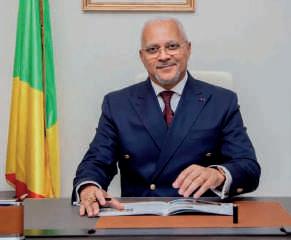
Interview with Jean-Marc Thystère Tchicaya, Minister of Special Economic Zones and Economic Diversification since September 2022, after having been Minister of Transport, Civil Aviation and Merchant Marine (2021-2022) as well as Minister of Hydrocarbons (2015-2021).
The National Development Plan (NDP) 2022-2026 emphasizes economic diversification. What is your action plan?
The strategic orientations of the NDP refer to the choice favoring the development of “a strong, diversified, resilient economy for inclusive growth and sustainable development”.
This choice is based on the following strategic pillars: agriculture in the broad sense, with the idea of making this sector a lever for the structural transformation of the economy, the basis of a strong and sustainable growth dynamic; industry, to expand the productive base of the economy and job creation opportunities; Special Economic Zones, with a view to strengthening industrialization, attracting more private investors, both national and foreign, and establishing an export base for processed local products; tourism, aiming to optimally exploit the national tourism potential; the digital economy, to increase the modernization and competitiveness of the economy; real estate, with a view to ensuring decent housing for all Congolese and building economic and commercial infrastructure.
It should be noted that the NDP 2022-2026 does not exclude activities not part of the strategic pillars, including health, education, defense, security and the environment. Concerning the Department for which I am responsible, we maintain that the Special Economic Zones must, relying on the other pillars of the NDP, be the lever for the irreversible promotion of a strong non-oil industrial fabric, creator of jobs and bring wealth.
The operationalization of this vision calls, at the
government level, for an effective strategy allowing better consideration of cross-cutting missions and responsibilities.
The implementation of this strategy involves the adoption of a National Strategic Plan and a law on Economic Diversification.
At the level of Special Economic Zones, the implementation of the 3 priority programs retained in the 2022-2026 National Development Plan concerns:
- the governance of special economic zones;
- the development and development of spaces in special economic zones;
- the development of industrial, commercial and tourist activities in the SEZs.
To achieve these performance objectives, the Department is committed, in addition to taking into account its responsibilities in terms of steering economic diversification, to an approach to developing special economic zones, which requires:
- the search for national or international developers for the development and development of SEZs;
- the mobilization of credible national and international private investors carrying sustainable and quality projects;
- obtaining from the State a pro-diversification budget and funds to enable the development and development of special economic zones;
- seeking foreign funding through the development of a partnership with bilateral or multilateral development partners with a view to financing high-impact projects;
- the involvement, within the framework of local content, of
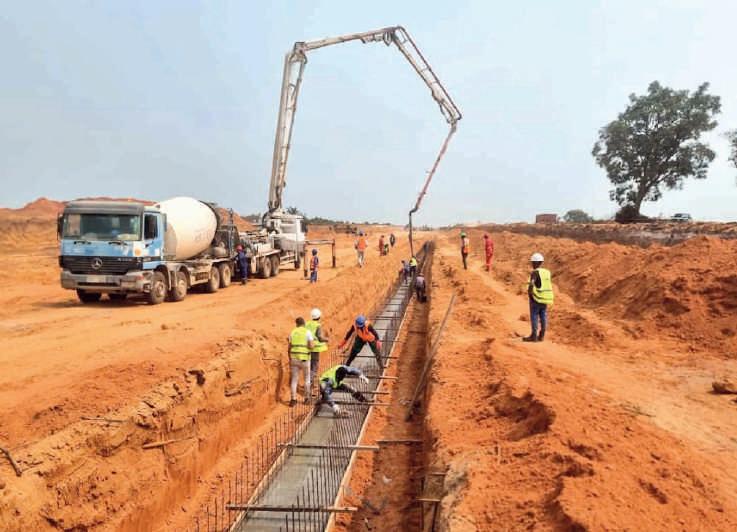
SMBs in joint ventures or by subcontracting international investors who would settle in special economic zones; - the development and implementation of an effective communication and marketing policy with a view to promoting special economic zones and economic diversification.
The launch of the activities of the Igné SEZ is it effective? Where are we with the development of the special economic zones of Pointe-Noire, Oyo-Ollombo and Ouesso?
The development of the Ignié SEZ was initiated with the rehabilitation of the Maloukou Industrial and Commercial Park, the concession of which was entrusted to the Macefield Congo Ventures SAS Company, a subsidiary of the Crystal Ventures group. Indeed, under the terms of the concession agreement signed between the Republic of Congo and the Crystal Ventures group, the Congolese subsidiary of this Group was entrusted with the development, operationalization and exploitation of
the Industrial and Commercial Park of Maloukou, thus giving this subsidiary the status of developer under the SEZ regime of this Park. To date, the rehabilitation work on this Park has been well executed in accordance with the specifications submitted to the developer. To this end, the commissioning period for this Park is set for the first quarter of 2024 with the operationalization of all the factories. Potential investors, particularly those operating in the agro-industry sectors and the manufacturing of construction materials, are invited to contact the Macefield company or the Agency for Planning, Promotion and Development of SEZs with a view to their installation in this Park. Besides the Maloukou Industrial and Commercial Park, investors are expected who could, like the Pointe-Noire, OyoOllombo and Ouesso SEZs, ensure the development of the Igné SEZ. Our main challenge in the development of this area lies in ensuring a stable, dedicated and high quality energy source. In terms of the development of the Pointe-Noire SEZ, the Republic of Congo and the Arise IIP
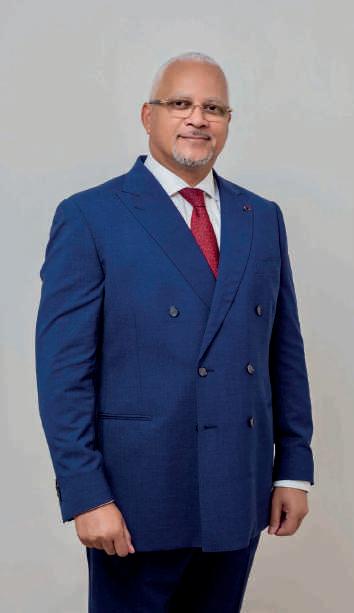
Group signed, on October 4, 2022, a framework agreement ratified by a development agreement signed between the Planning and Promotion Agency and Development of SEZs and the company Plateformes Industrielles du Congo Pointe-Noire (French acronym PICP), a Joint Venture born from the framework agreement signed between Congo and the Arise IIP Group.
In addition, several authorizations intended for the realization of this project were issued to the company PICP in order to allow it to begin this work; This includes obtaining the certificate of conformity for environmental and social impact studies, obtaining a forestry permit issued by the Ministry of Forestry Economy intended to ensure the supply of wood to the SEZs, orders under the Ministry of Energy and Hydraulics for the production of water and electricity.
The work of the Pointe-Noire SEZ is carried out in accordance
with the specifications submitted to the developer. To date, road construction, urban development and civil engineering work within the SEZ is nearing completion. The electricity network connection works are being carried out with regard to the first phase, including the lighting of the entire SEZ. The second phase of this work relating to the construction of a high voltage line began with the signing of an electricity supply contract between the Centrale Electrique du Congo and the PICP company. In view of the above, the construction of the Pointe-Noire SEZ is not a myth as some would believe.
Like the Pointe-Noire SEZ, the development of the OyoOllombo SEZ was entrusted to the Arise IIP Group with the Framework Agreement signed on October 4, 2022 with the Republic of Congo.
The only investor established to date in this economic zone is the company COFCAO Farming, specialized in the production of chocolate paste. The laying of the first stone for the construction of the factory took place in October 2022. Located in one of the strategic regions of the country, the Ouesso SEZ was also awarded to the Arise IIP Group for its development following a Framework Agreement signed between this Group and the Republic of Congo with a view to developing this SEZ.
Several industrialists, including SPECTECH, have expressed their interest in investing in this SEZ. Agreements and contracts are being drafted for final approval and award.
Which countries have you established partnerships with for the development of SEZs?
The Republic of Congo, as part of activities related to special economic zones, has developed partnerships with the People’s Republic of China, Mauritius, Gabon, Togo, Rwanda and Benin. Today, steps have been taken to join the African Economic Zones Organization (AEZO). This will allow us to broaden the basis of our partnership to other African countries developing Special Economic Zones.
With an area of 27,000 hectares, the creation of the Pointe-Noire SEZ will play a key role in the industrialization of Congo and will support the initiatives taken within the framework of the 2022-2026 National Development Program.

The Pointe-Noire SEZ is the result of a publicprivate partnership concluded in June 2022 between Congo and Arise IIP, a company present in Gabon, Benin and Togo. Arise IIP, specialized in the design, financing and development of industrial platforms, is also in charge of the development of the Ouesso SEZ.
President Denis Sassou Nguesso inaugurated, in November 2022, work in Loango in the Kouilou department, to make the diversification of the Congolese economy effective. With an area of 27,000 hectares, this SEZ will therefore be developed by the Arise Congo group. On this space made up of two zones, commercial, industrial and residential works will be built, including infrastructure and connectivity networks.
The Codimex group, through its subsidiary MBTP, leader in the construction sector in the Republic of Congo and Africa,
has been appointed to carry out the development work on the Special Economic Zone (SEZ) of Pointe- Black. The work, which has already started, is being carried out by a multidisciplinary team of 300 people.
This ambitious project aims to attract foreign direct investments estimated at one billion dollars, of which 150 million will be devoted to the development of the industrial ecosystem.
The activities selected are refined petroleum products; metals and engineering; chemical products ; the food and beverage industry; non-metallic mineral products; wood and wood-derived products; paper and paper products; production of plastic and glassware products.
This zone will generate, in its first phase, 24,000 jobs, including 8,000 direct and 16,000 indirect. These jobs will be governed by the Congolese labor code, and will, as such, give priority to local labor.

Interview with Nicéphore Antoine Thomas Fylla Saint Eudes, Minister of Industrial Development and Private Sector Promotion since May 15, 2021. Doctor in economic and political sciences, he has been a member of Parliament for Kinkala since 2017.
What are the Government’s priority projects concerning the industrial sector?
Industrial activity today is based on the oil, forestry and mining industries. The manufacturing industry remains underdeveloped.
To create a more competitive industrial sector, the Government has opted for the promotion of industrialization through priority projects, included in the National Development Plan (NDP 2022-2026), namely:
- the development of natural resources;
- the transformation of manufacturing, agri-food and agroindustrial products;
- industrialization by ensuring environmental protection in industrial parks;
- the strengthening of basic infrastructure and the exploitation of geographical and cultural assets;
- strengthening the capacities of local SMBs.
Shouldn’t industrial development first and foremost involve the establishment of industries for the extraction and processing of natural resources?
The Government’s objective is to diversify the economy, so as to no longer depend too much on the oil resource alone in its raw state.
However, Congo intends to take advantage of its natural resource potential by improving governance in natural resource management.
The process of economic diversification is underway. Indeed, forestry and the mining sector are evolving rapidly, and represent 39% of national GDP and nearly 73% of exports. In this perspective, the NDP 2022-2026 places emphasis on increasing the production of liquid and gaseous
hydrocarbons, the transformation of agro-pastoral and fishery products, the transformation of local materials and medical and forestry products.
It should be emphasized that the Government also places particular emphasis on agricultural value chains. Because agriculture is essential to industrial development. Thus, within the framework of the NDP 2022-2026, this essentially concerns the implementation of the integrated development project of value chains and the strengthening of operators in the agricultural sector within the framework of the value chain approach. . However, industrialization cannot develop without the strengthening of energy, water and transport infrastructures as well as support for the competitiveness of the private sector and the development of the quality of local products and standards for better positioning on the market. of the AfCFTA.
What place does the private sector occupy in the implementation of public policies?
The Government is aware that the private sector occupies a key place in the creation of wealth and jobs. Thus, the participation of the private sector in the NDP 2022-2026 is expected at 80% of the total cost of 8,935,118 million FCFA.
We are also aware that this participation of the private sector depends on a good business environment. Hence the establishment of the process for improving the business climate which is mainly based on two tools: the Interministerial Committee for the Improvement of the Business Climate (French acronym CIACA) and the National Consultation Committee between the private
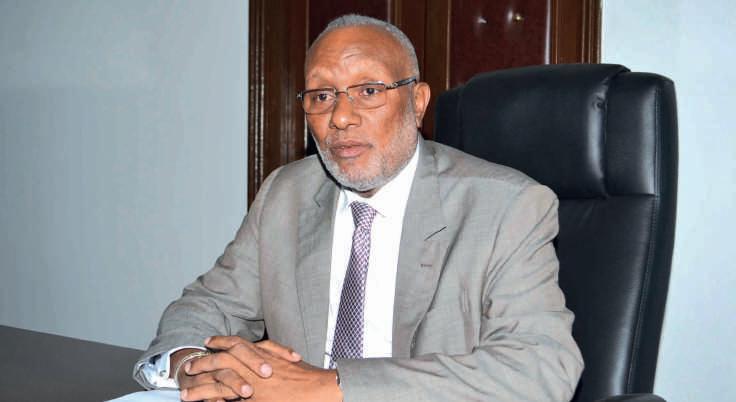
sector and public administrations (French acronym CNC).
The work of the technical committees of the National Consultation between the private sector and public administrations (French acronym CNC) is chaired by representatives of the private sector. This work resulted in the development of private sector proposals to enable the CIACA to approve the business climate reforms. Furthermore, our ministry which is the interface with the private sector (national or foreign) develops a permanent economic dialogue with the various stakeholders for the improvement of the conditions of exercise of the private sector and better management of relations between administrations. public and the private sector in order to encourage investments and support the development of the private sector in general.
What is the current status of the Maloukou industrial zone? Is it operational?
The Maloukou Industrial and Commercial Park is a component of the Maloukou Special Economic Zone which covers 224 km². For better profitability, management of the Maloukou Special Economic Zone was transferred to the Rwandan company Crystal Venture, established in Congo through the Congolese company named Macefield. This company’s mission is to improve the industrial zone, particularly on issues of electrification and water distribution.
The development of the Industrial Park is underway. Several companies have already started their activities on the site.
What advice would you give to an investor who wants to invest in PPP in your country?
The government has established a legal and institutional framework for public-private partnership contracts. Thus, the law of 30 December 2022 on PPPs, brings new dynamism to investment in Congo. This type of contract should also contribute to the financing of the NDP 2022-2026.
For an investor, the Republic of Congo presents economic advantages in terms of security of foreign investments; enormous potential of the soil and subsoil; special economic and tourism zones.
The Republic of Congo has a climate favorable to development. With a predominantly young, connected and largely educated population, the country imports more than 80% of its consumer products. It covers an area of 342,000 km2 and has around 5 million inhabitants. It is a strategic gateway to the Central African sub-region. Indeed, the country is located on both sides of the equator and fulfills a natural function of transit and transshipment platform for neighboring countries. It has a coastline that extends for approximately 170 km along the Atlantic Ocean, is home to a deep-water port which gives it a major geostrategic role and represents a considerable asset in terms of economic development.
The current five-year program allows the State to invest in the infrastructure necessary for the growth of industries. This political ambition gives pride of place to the industrial sector, which is expected to become a vector for the creation of wealth and jobs for young people.

The industrial sector contributes 23.5% to GDP and employs 21% of the active population. The oil, timber and mining sectors are the main drivers of the economy. However, the government is committed to diversifying the economy from agriculture in the broad sense; to develop Special Economic Zones and industrial zones, with a view to attracting investments and promoting the development of Congolese industries, oriented towards exports; promote trade and foreign direct investment; to promote local content through support for the creation of Congolese businesses; develop the national standardization and quality system; to make the units of the Maloukou industrial and commercial zone functional; to revive industries in the areas of foundry, cement, ceramics, solar energy and mining. In 2023, GDP growth of 2.3% is justified through the revival of investments in the oil sector
and that of the manufacturing industry. Congo is banking on agro-industry as one of the pillars of its 2022-2026 National Development Plan. This Plan places at the heart of the diversification process with agriculture in the broad sense as well as industry in the component linked to the processing of basic products.
In 2023, the Ministry of Industrial Development and Private Sector Promotion adopted a ministerial strategic plan. This is a comprehensive reform undertaken by the government with the support of the World Bank because, from January 1, 2024, the entire Republic of Congo will move to the program budget. This document sets the ministerial orientations for the next five years, therefore from 2024-2028. The transition to a new mode of budgetary management will ultimately make it possible to improve the performance of public actions and ensure results-based management.
An integrated ecosystem serving the
The Plateformes Industrielles du Congo (PIC) is a Public Private Partnership between the Republic of Congo Government (30%) and Arise IIP (70%) focused on the strategic development of the Congolese economy

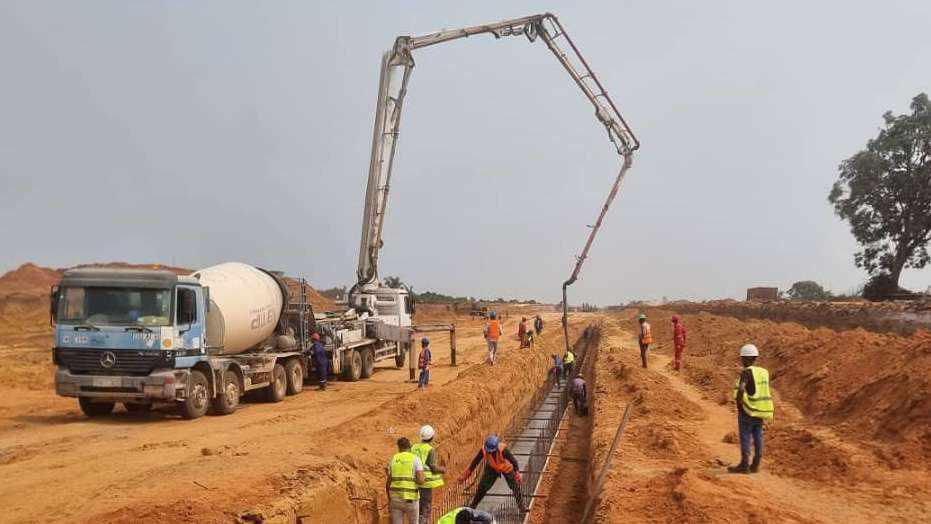

PIC aims to promote sustainable industrialization by clustering different businesses and creating synergies between them, thereby increasing their individual and collective efficiencies. The Industrial Platform provides a sustainable ecosystem for manufacturing businesses to flourish.
Plateformes Industrielles du CongoPointe-Noire, with a surface area of 2,700 hectares, is a well-integrated industrial zone with world-class infrastructure services forming a holistic business environment for manufacturing companies. The Pointe-Noire industrial zone is set to become a hub of industrialization and a center of economic activity in the country. The economic development of the central African country has been under way for many years. The industrial zone is meant to further boost this development by transforming raw materials in the country such as timber, natural gas, and minerals, as well as by creating local jobs. Many other sectors are also targeted.
Single window clearance for express-line processing of all business formalities.
Jetty inside the SEZ for direct access to Port (PNR SEZ)
Uninterrupted and affordable doorstep connection of key utilities – electricity, water, and internet
Natural gas availability at competitive prices
Wastewater and Sewage treatment Plant
Log yard
Commercial & Residential Zone
Fire Station and Medical Center
Green spaces
Total investment: 150 million Euros in phase 1
Assured raw material supply of Timber, Natural Gas, and Mineral Ores
Uninterrupted and affordable doorstep connection of key utilities – electricity, water and Internet
100% exemption from imports of equipment, machinery, and raw materials in connection with production
100% exemption on local goods and services
100% freedom to repatriate income.
100% exemption on corporate tax.
www.pic-roc.com
The Congolese entrepreneurial environment is clearly progressing, in particular thanks to the efforts made by the government and its partners to promote Very Small Businesses (VSB) and Small and Medium Businesses (SMB).

For more than two decades, the Congolese government, through the Ministry of Small and Medium Enterprises, has embarked on a simplified process of supporting private companies. During the five-year period of 2017-2021, Congo recorded through the one-stop shop services (French acronym ACPCE), 10,748 creations with an average monthly rate of 174 companies and an average annual growth rate of more than 15, 9%. The percen-
tage of women promoters/business managers is 26.61% of all creations in the reference period.
The Guarantee and Support Impulse Fund for very small, small and medium-sized enterprises and crafts (FIGA) is an important player in the entrepreneurial ecosystem supporting business creation projects in the preparation of financial files and others, which materializes through ambitious support from the Congolese State. FIGA
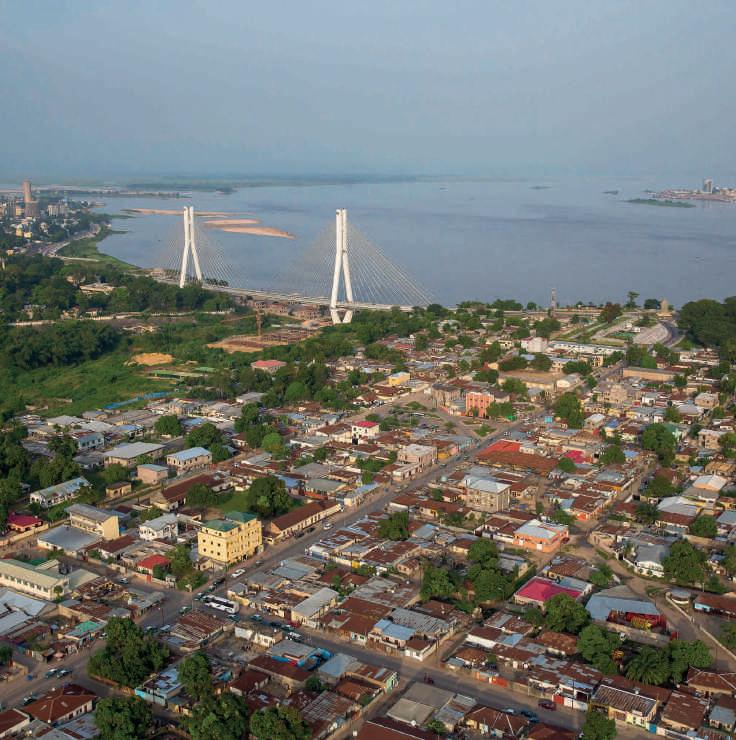
supported 439 projects for an amount of 340,593,113 million FCFA during the period of March-April 2023 alone. Alongside FIGA, which acts as the operational body for interventions by the State and its partners in favor of SMBs, there are other institutional supports for SMBs (French acronyms ACPCE, ADPME, ANA, BSTPE) under the supervision of the ministry. small and mediumsized businesses, which work at different stages of the entrepreneurial project upstream of the creation of the business. For its part, the Development Bank of Central
African States (French acronym BDEAC) targets growthpromoting sectors that promote the emergence of SMBs, real vectors for sustainable economic development with particular emphasis on supporting female and youth entrepreneurship. It promotes the creation of industries to limit imports of finished products and create added value in the national economy through local processing of raw materials. Finally, in the field of commerce, it supports economic operators in their import and export activities to conquer international markets.

Interview with Delphine Édith Emmanuel Adouki, Minister of Higher Education, Research and Technological Innovation since May 15 2021. Holder of a University doctorate in public law (Paris 1), a DEA in international studies and a DESS in international administration, she is responsible for the higher education of Congolese youth.
What are the main axes of the scientific research and innovation strategy for the period 2022-2026?
First of all, it should be remembered that the Republic of Congo adopted a National Policy for Scientific Research and Innovation (PNRSI) in October 2022, developed from the diagnostic analysis of the Congolese economy made within the framework of the National Development Plan (NDP) 2022-2026, instrument for implementing the President of the Republic’s Social Project “Together, let’s continue the march”. The PNRSI clearly defines the real ambition of our country to systematically transition towards a sustainable economy based on knowledge. It represents a financial support made available to decision-makers, all stakeholders, civil society and development partners for the scientific research and technological innovation sector. To enable the successful implementation of this Policy, we validated in December of the same year, an operational Policy instrument in matters of Science, Technology and Innovation, in particular, the Strategy and Action Plan for Scientific Research and of Innovation (French acronym SPARSI) of the Republic of Congo. This instrument is structured around six (6) main strategic axes accompanied by a first operational plan which covers the period from 2023 to 2026. This is a budgeted and consolidated plan in the form of programs resulting from contributions from the all of the country’s institutions and centers of scientific research, technology and innovation.
These different strategic axes are:
- Strengthening institutional capacities: with the objective of making our national system of scientific research
and innovation efficient and coherent by ensuring that the different actors involved through their respective institutions intervene in the execution of scientific research and innovation in perfect interaction between them.
- Strengthening the supply of scientific and technical knowledge of public utility: The Republic of Congo intends to focus on a knowledge-based economy to support society in the face of the major challenges it faces.
- Strengthening the capabilities of the service offering: this strategic axis sets out our ambition to become a competitive country in the sub-region both in terms of innovation and scientific research. It is an ambition that must necessarily involve our ability to offer the necessary service through infrastructure, the involvement of the private sector, the improvement of the research framework, the protection and valorization of results and the continuing training of researchers. .
- Increasing the capacity for demand and adoption of technology: faced with the rapid evolution of the world of technology, through this strategic axis it is a question of building a rapprochement of technologies with decisionmakers, so that the latter engage more in the creation of a political system that highlights technological needs and their transfer in order to promote their absorption or use.
- Promotion of national, international and multi-party cooperation: This axis aims to boost scientific and technological cooperation of the Congolese State on a national and international scale, also with countries, international organizations, non-governmental organizations, organizations and private companies whose
expertise in at least one of the scientific and technological disciplines represents a major interest for the country. Strengthening the links between supply and demand in terms of research and innovation: To promote the development of the industrial sector in the face of technological needs, it is important to promote the rapprochement of research organizations (public and private) and industries by removing barriers or bottlenecks to collaboration between researchers, innovators, inventors and industrialists.
Furthermore, we must emphasize two very important elements. First, the six strategic axes of Scientific Research and Technological Innovation for the period from 2023 to 2026 are broken down into 31 strategic orientations whose implementation is supported by programs and projects as well as the concrete activities to be carried out. , all included in the operational plan that we mentioned previously. Finally, SPARSI has a monitoring and evaluation mechanism based on Results-Based Management (French acronym GAR).
For the attractiveness of higher education, training must meet business demand. What action are you taking in this direction?
Regarding the attractiveness of higher education, we are indeed aware that training must meet business demand. In this prospect a reflection will be carried out during the 4th session of the National Council for Higher Education (French acronym CNES) which will be held on September 27, 28 and 29, 2023.
The main areas of reflection retained are, among others: The training-employment match; The National Status of the Student Entrepreneur (French acronym SNEE);
The needs of the world of work; Professional integration of graduates.
And what about the National Student Entrepreneur Status (French acronym SNEE)?
Entrepreneurship is an alternative to reducing unemployment among graduates facing the difficulties of their integration into the labor market and can generally provide solutions to issues relating to youth unemployment, thus helping to facilitate their integration into the environment. socioeconomic.
The Republic of Congo benefits from the establishment of a pilot experiment to study the possibilities of developing a system which will allow students to develop their entrepreneurial skills and make them active in their professional integration through the deployment (AUF
Entrepreneurship Program) of the National StudentEntrepreneur Status in 9 countries in sub-Saharan Africa, the Caribbean and the Indian Ocean (Congo, Cameroon, Benin, Burkina Faso, Ivory Coast, Guinea, Senegal, Haiti and Mauritius).
The SNEE project will be submitted to the National Council for Higher Education for validation. The ministerial will is affirmed with direct participation whose role is to unite all the initiatives undertaken around student entrepreneurship, to establish a legal framework and to mobilize national actors involved in entrepreneurship.
Where is the construction of the Inter-State University of Congo-Cameroon, in Mokéko in the Sangha Department?
Regarding the construction of the Inter-State University of Congo-Cameroon, for the Congolese part, the work is sufficiently advanced. Indeed, after the signing, on December 12, 2012, of the Agreement establishing this University, the ministry in charge of higher education has already officially acquired land in the Mokéko district with an area of 117 hectares 08 ares 59 centiares (i.e. 1,170,859.95 m2) intended for the construction of the said University.
Currently, we are awaiting the publication shortly of the notice of call for tenders relating to the award of contracts to relate to the studies and construction of the University by the ministry in charge of major works.
You are a founding member of the network of Frenchspeaking environmental lawyers. Have you noticed an awareness of ecology among Congolese students and an enthusiasm for the related diplomas?
We have noted an awareness of Congolese students for ecology, because finalist students from the Ecole Nationale Supérieure d’Agronomie et de Foresterie (ENSAF) at Marien Ngouabi University have set up an NGO for the preservation of aquatic ecosystems in Congo.
Also, a craze has been noted for diplomas related to ecology, because many students are registering for:
- ENSAF master’s degree in the following sectors: environmental management and sustainable forest management;
- the Higher Institute of Geographical, Environmental and Planning Sciences (French acronym ISSGEA) at Denis Sassou Nguesso University for an environmental degree.
Following the reform of the education system, to diversify the economy and develop the employability of young people, higher education constitutes a major challenge for the Congo.

From 2022, the Prime Minister noted that the Congolese education system presented significant challenges in the areas of access to equity, gender equality, improving the relevance and quality of learning, the adequacy of qualifying training to the needs of the national economy and the job market, the number and quality of teachers, many of whom are volunteers and without training, the intensification of violence in schools and universities. It was about building a social pact that was both participatory and inclusive for the school for the next five or ten years.
The changes made to the programs came into effect from the start of the 2022-2023 school year. This reorganization of school programs concerns sciences, mathematics and French, indicated the Minister of Preschool, Secondary Education and Literacy.
With only two public universities - Marien-Ngouabi University and Denis Sassou-N’Guesso University, all located in the capital Brazzaville - Congo is struggling to contain the growing number of new students. The university is, in fact,
part of a vast movement to strengthen training offering capacities, based on the establishment of training structures to promote initiation to professions, the acquisition of knowledge and skills , in line with development needs and available or potential jobs.
Also, a public university will soon see the light of day in Pointe-Noire. The construction of this university, which intends to rise to the standards of the best universities in Africa, required the mobilization of land space in Loango capable of receiving administrative, educational and research infrastructures, buildings intended for university works, facilities sports and leisure activities for the use of faculties, higher schools, institutes and laboratories. At the same time, the result of collaboration between the government and the Catholic Church of Congo, the University of Liambou will be the first higher education establishment of its kind installed near the department of Pointe-Noire. Its opening in October 2023 will help address the problem of migration of high school graduates from the ocean city and its surroundings to Brazzaville.


Interview with Professor Ange Antoine Abena, President of the Denis Sassou Nguesso University (French acronym UDSN) of Kintélé since December 2021. He is also a member of the National Academy of Sciences and Technology of Congo (French acronym ANSTC).
You are at the head of a university of the 21thcentury, pan-African, can you describe its assets to us?
Denis Sassou Nguesso University is indeed a 21st century university with a pan-African vocation and excellence in meeting development challenges. As you know, excellence cannot be an empty word: this excellence is supported by a certain number of criteria. This is why the directions of the Head of State and the government have pushed this university to open up to the world of work through scientific, technical and professional training. This university will ultimately have at least 10 establishments. Currently, we have three: the Higher Institute of Sciences geographical, Environmental and Planning (French acronym ISSGEA), the Higher Institute of Architecture -Urban Planning -Building and Public Works, and finally a Faculty of Applied Sciences in which, as its name indicates, applied biology, applied mathematics, applied chemistry and applied physics are taught.
The designer has ensured that our infrastructure is adapted to this ambition. Being placed at the head of this establishment, we have the mission to achieve the objectives gradually so that the assets of the UDSN are attractive to young Congolese and young Africans.
The university is located on the northern outskirts of Brazzaville, almost on the banks of the Congo River, in the commune of Kintélé, far from anything that could disturb our students.
The President of the Republic has put in place rolling means to facilitate access to the site and university residences that
can accommodate more than 10,000 students. Our structure has all the assets to become a center of excellence in the sub-region and why not the region. Last year, we had 1,341 students. The President of the Republic, His Excellency Denis Sassou Nguesso, sponsored the graduation ceremony on July 24, 2023 for the first class of 320 graduates from the university.
The last selection involved 350 new students, so we are still around 1,400 students. Have you established partnerships with foreign universities?
A lot since in two years, we have established more than 10 partnerships with universities both African and foreign. I can tell you a few of them: the University of Douala, the University of Ndjamena, the School of Architecture of Lomé, the Cheikh-Anta-Diop University of Dakar, the San Pedro University of Côte d’ Ivoire, the Abdou-Moumouni University of Niger, the University of Hainan in China, the University of Hydrocarbons of Venezuela and many others… We are strengthening the partnership with the University of Hainan and will soon receive a Chinese delegation for a joint project such as, for example, research on cassava which constitutes the staple food of the Congolese.
Have you registered for specific training to address environmental issues?
As previously reported, we have an Institute of Geographic, Environmental and Planning Sciences. This year, we are opening three Masters.
The first is directly linked to environmental sciences, it is a master’s degree in geosciences, planning and management of ecosystems. The second, which will open at the Faculty of Applied Sciences, is entitled “Valorization of Bioresources and Waste” The third master’s degree focuses on “sustainable construction and urban planning”. A modern structure of higher education, we offer innovative courses to meet the challenges of development by adhering to our motto: “Rigour, Excellence and Light”.

Investment Promotion Agency (French acronym API)
152, avenue Charles de Gaulle
Plateau city ex-treasure district opposite the Gab of UBA
Brazzaville
apicongo.bzv@gmail.com
Tel.: +242 06 666 81 62
www.apicongo.org
Ministry of Special Economic Zones
contact@zes.gouv.cg
Tel.: +242 06 956 57 99
Congolese Agency for Business Creation (French acronym APCE)
Avenue Emile Biayenda (ex Foch) next to the Mandarine
Downtown Brazzaville
Tel: +242 06 628 72 90
EMail: infos@acpce.cg www.acpce.cg
National Office of Employment and Manpower Mpila district
Avenue Edith Lucie Bongo BP 2006 Brazzaville
Tel.: +242 06 664 87 34
Email: contact@onemo.cg
Chamber of Commerce, Industry, Agriculture and Trades of Brazzaville
Avenue du Camp BP 92 Brazzaville
Tel.: +242 05 521 7004
Email: cciam_brazza@yahoo.fr
Chamber of Commerce, Agriculture and Industry of Pointe-Noire
35, boulevard du Général Charles de Gaulle Pointe-Noire
Tel.: +242 05 584 82 31 / +242 06 458 85 76
https://cciampnr.cg/
Email: info@cciampnr.com
Unicongo (French acronym for Patronal and Interprofessional Union of Congo)
Capinfo Building, Boulevard Denis Sassou Nguesso BP 42
Brazzaville
Tel.: +242 06 629 59 06 and +242 06 841 04 07
The Union represents private sector companies in Congo and defends their interests before public and institutional authorities. Its members are grouped into 15 professional federations with a national vocation.
UNOC (French acronym for National Union of Economic Operators of Congo)
ELBO-Suites Building Brazzaville
Tel.: + 242 05 526 22 04 / + 242 06 638 00 30 / + 242 06 663 2567
contact@patronat-unoc.cg
UNOC supports its members in the exercise of their activities through legal, operational and intermediation assistance with public authorities, financial organizations and other companies at the national, sub-regional, regional and international level.
The process of merging and operationalizing the CAEMC financial market, in accordance with the high instructions of the Heads of State, remains a priority.
Excerpt from the speech of the Minister of Economy and Finance, Jean-Baptiste Ondaye, on the occasion of the installation ceremony of the new leaders of COSUMAF on June 16, 2023.
The financial sector supports the economy. Financial liberalization has favored the emergence in Congo of a very solvent private banking sector. The adoption of a special status for insurance controllers will allow faster payment of claims.


Jean Baptiste Ondaye has been Minister of Economy and Finance since September 24, 2022. This trained economist has been, since 2009, Secretary general of the presidency of the Republic. He is now responsible for guiding the public policies towards a strong, diversified and resilient economy for inclusive growth
.
Born January 15, 1958 in Makoua, holder of a higher economic studies diploma, national economic planning option, obtained in 1983 at the Berlin Higher School of Economics in Germany, Jean-Baptiste Ondaye joined a year after the Ministry of Planning where he had a rich career until 2008, occupying several positions.
Head of the investment and approvals department, in charge of the National Investment Commission, he was appointed seven years later, in 1991, director of economic regulation, cumulatively with his functions as permanent secretary of the National Investment Commission until 1997. The same year, he was promoted to the position of Director General of Economy, member of the Steering Committee of the Central African Customs and Economic Union.
In 1999, Jean-Baptiste Ondaye took over as head of the General Directorate of Planning and Development. For ten years, he will hold this position cumulatively as technical secretary of the National Committee to Combat Poverty, member of the Committee for Monitoring Negotiations with the International Monetary Fund and the World Bank, alternate member of the Interstate Committee of the Community economic and monetary affairs of Central Africa and technical coordinator of programs with the agencies of the United Nations system. He entered in the wake of the Head of State in 2009 as Secretary General of the Presidency of the Republic, with the rank and prerogatives of a minister. A confidence which will be renewed in 2016 by President Denis Sassou Nguesso
who keeps him in this position with a new responsibility, that of presiding over the destiny of the Monitoring and Evaluation Committee of Public Policies and Programs and the Ad Hoc National Committee to Fight Against malnutrition.
This trained economist, specialized in planning issues, has several challenges to face at the head of the Ministry of Economy and Finance. Among the main challenges, we can cite the mobilization of resources with a view to the implementation of the National Development Plan (NDP) 2022-2026 as well as the optimal functioning of the State; the acceleration of the diversification of the national economy; the reduction of debt and the viability of the State debt; the execution of the Program concluded with international financial institutions under the Extended Credit Facility (ECF) 2022-2024; the execution of the Resilience Plan for the 2022-2023 food crisis and the challenge of rationalizing economic and financial governance.
Its action involves a certain number of priority actions, including strengthening economic diversification, growth and resilience to shocks, accelerating the digitalization of tax and customs revenue collection, dematerialization of public procurement, as well as the implementation of forecasting and management tools for the State’s cash flow and budgetary risks.
For the Minister of Economy and Finance, it is a question of achieving economic and financial performance by 2026 for modern governance of public finances in Congo by thus promoting stronger, more sustainable and more economic growth. inclusive.
All banks practice universal banking activities. Despite a strong presence of banking players, the banking rate still remains very low. Foreign banks control almost 90% of the market.

With ten active credit institutions (excluding microfinance establishments and development banks), we distinguish: the pan-African groups (UBA, EcoBank, BGFI Bank); MoroCSFn groups (LCB, CDCO, BCI) and Congolese banks including BSCA Bank, Banque Postale, BCH and BESCO. With 31.76% market share, the Congolese subsidiary BGFI is ahead of LCB (13.9%) and Crédit du Congo (11.31%) - CDCO, subsidiary of the MoroCSFn Bank Attijariwafa - in terms of claims on the economy.
We note mixed developments in the activity of the national banking system. Indeed, the outstanding gross credits granted to customers experienced a contraction of 5.2% to return to 1,338.1 billion FCFA as of April 30, 2023, as well as a decline in overdue debts of 2.9%. , to settle at 253.4 billion.
Concerning the public securities market of the Central African Economic and Monetary Community (CAEMC), the National Economic and Financial Committee (Cnef) notes that the Congolese public treasury remained active, thus
10 BANKS
24 MICROFINANCE INSTITUTIONS IN 2022
16.69% BANKING RATE
mobilizing financing to the tune of 612.9 billion FCFA at the end of April 2023, an increase of 37.1% compared to the amount raised a year earlier. This development brought the outstanding amount of Congolese public securities to 1,857.2 billion, representing 31% of CAEMC’s total.
Despite a strong presence of banking players, the banking rate still remains very low, 16.69% according to the Central African Banking Commission.
The Congolese banking and financial system is focused on traditional intermediation and has succeeded in digitalization.
The banking landscape has been significantly transformed,
moving from a context of fragility marked by crises to a reassuring paradigm that is both solid, integrated, and increasingly systemic. The reforms undertaken include the liberalization and empowerment of the banking sector; the strengthening of surveillance, internal control and AML/CFT measures by regulators, BEAC and COBAC; raising the level of share capital, in this case that of equity; convergence or even alignment with major developments in the global financial sector with Basel standards; the arrival of private actors.
The Central Bank, for its part, is tackling the implementation of the reforms undertaken in the credit sector with the development of regulatory texts relating to the implementation of a directory of movable security in the Republic of Congo. This will allow players in the banking sector, clients and lenders, to receive, store and make accessible to the public certain information relating to security rights. The objective of this tool is to reduce the asymmetry of information between borrowers and lenders of money and to make credit more accessible. For example, Congolese banks do not sufficiently finance the agricultural sector.
Alongside this reform, the BEAC will increase the basket of financing instruments for the economy, particularly leasing and factoring, which will help the private sector access loans without major constraints.



Interview with Dieudonné Ndinga Moukala, General Director of Mutuelles Congolaises d’Epargne et de Crédit (MUCODEC), 1st microfinance network in Congo Brazzaville since 1984, with nearly 420,000 mutual members.
How do MUCODECs fit into the Congolese economic landscape?
Mutuelles Congolaises d’Épargne et de Crédit (MUCODEC) is a network of microfinance institutions focused on microentrepreneurs, low-income people and small and mediumsized businesses. They play a crucial role in financial inclusion, providing essential services to individuals and small businesses, stimulating the economy and contributing to poverty reduction and socio-economic development.
What benefits are granted to members?
MUCODEC members can benefit from several advantages in terms of financial services and free services. Here are some of these benefits: flexibility in opening accounts in terms of documents to be provided and fees; free electronic payment card and insurance; access to numerous financial services: MUCODEC members can benefit from a range of financial products and services such as savings, credit, payment services, money transfers, etc., transfer domestic money at the rate of 1%; digital services such as the MUCODEC Mobile application or Push Pull in partnership with Mobile Money services; free certain services such as cash withdrawal operations at counters and ATMs; obtaining the account statement; the large number of ATMs in the large cities and certain localities in the hinterland; participation in governance: members have the right to participate in general meetings, to vote to elect directors and to influence the decisions of the mutual. So they are
not only customers, they are also co-owners. Competitive interest rates: MUCODECs offer more advantageous interest rates than commercial banks.
2024 will be the 40th anniversary of your financial institution. What are your areas of development?
MUCODECs have proven their value as a key player in microfinance in Congo Brazzaville. To strengthen their impact, they could consider geographic expansion by opening new agencies in uncovered areas. In addition, financial education should be highlighted with adapted programs aimed at strengthening the economic and entrepreneurial skills of beneficiaries. It is also important to invest in staff development to improve the quality of services and develop new expertise. Increased diversification of financial products and services would be wise in order to meet the specific needs of the country’s different socio-economic segments while contributing to local economic development and the creation of sustainable jobs.
Finally, continuing to invest in digitalization would allow members to easily access their accounts via a digital platform, thus facilitating financial transactions. After 40 years of excellence in the field of microfinance in Congo Brazzaville, it is essential that MUCODECs continue to develop strategically to ensure their continued success. It is also time to start exporting the MUCODEC model to other countries in the sub-region.
Microfinance establishments (French acronym EMF) are grouped within APEMF-Congo. The association has 24 establishments which carry out their activities throughout the national territory.
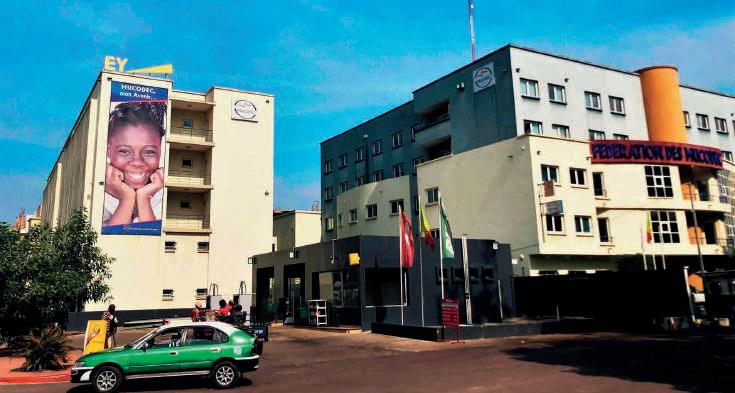
The largest microfinance institution is Mutual Savings and Credit (French acronym Mucodec), a network of federal mutual funds, whose mission is to support small businesses. The majority of Mucodec’s activities are focused on public sector employees. Mucodec achieved, in 2021, a result of six billion FCFA, thanks to the savings and loans granted to their 412,179 members, despite the dual health and economic crisis. With 45 agencies spread across the Congolese territory, the MUCODEC network is the leading financial institution in Congo Brazzaville. Mucodecs operate without foreign capital or financial support from local banks. All the funds are formed into networks around an umbrella body, the federation which implements the same managerial and commercial strategy.
The situation of financial inclusion in Congo has generally improved. In accordance with the CAEMC/Umac/Cobac regulation of July 3, 2020 and the regulation of the Central African Banking Commission (Cobac), relating to
the guaranteed minimum banking service, the General Directorate of National Financial Institutions (French acronym DGFIN) has ordered the lending institutions provide basic banking services free of charge.
In addition to microfinance institutions, there is the Fund for Participation in the Promotion of Businesses and Their Development (French acronym CAPPED), whose mission is to contribute to the promotion of the economic and social initiatives of its members. Furthermore, in November 2007, the government created the Banque Congolaise de l’Habitat (BCH) to carry out all banking operations aimed at implementing the housing policy. This was followed in 2008 by the creation of a National Housing Fund to help Congolese households finance the development of private property. In addition, in the CAEMC zone, almost 70% of loans on average are guaranteed by personal guarantees, the value of which on average greatly exceeds the amount of the loan.

Interview with Mwandza Ibata, Deputy Director General of Assurances Générales du Congo (AGC). First private insurance company in the country, it was created in 2000 following the liberalization of the insurance market in Congo.
What products do you offer to businesses?
As you have so well noted, Assurances Générales du Congo is a private company which has existed since February 9, 2000, the date on which AGC opened its doors in PointeNoire, the economic capital of Congo. Today, we must add the AGC-Vie branch which leads us to consider that AGC is a small group in the Congolese insurance market. The range of products that we offer to businesses extends from so-called civil and professional liability insurance to property and personal damage insurance. As for insurance products, we include end-of-career compensation, death insurance and retirement savings.
What is your development strategy?
We believe that the development of the Congolese insurance industry in general, and that of AGC in particular, is based on two major axes:
- Strengthening State intervention by making certain insurance compulsory and fighting against fraud.
- Develop products that do not yet exist on the market. Launch the process of digitalization of basic products.
What advice would you give to a new investor in Congo?
In view of recent social and political events on the African continent, many investors could rightly plunge into Afroskepticism and simply stop investing in sub-Saharan Africa in particular.
We dare to believe and think that these old times are over and that, like the new Gabonese crisis, the interests of all are preserved.
In Congo, the business climate is calm and constantly improving. This is the objective of the Congolese government in order to be better classified by the Doing Business magazine.
Business opportunities exist in almost all sectors of activity and we, Assurances Générales du Congo (AGC), are prepared to support all investors.
The insurance sector plays an important role in economic development by mobilizing investments secured by guarantees against possible risks. New companies have arrived in Congo to remedy the low penetration rate.
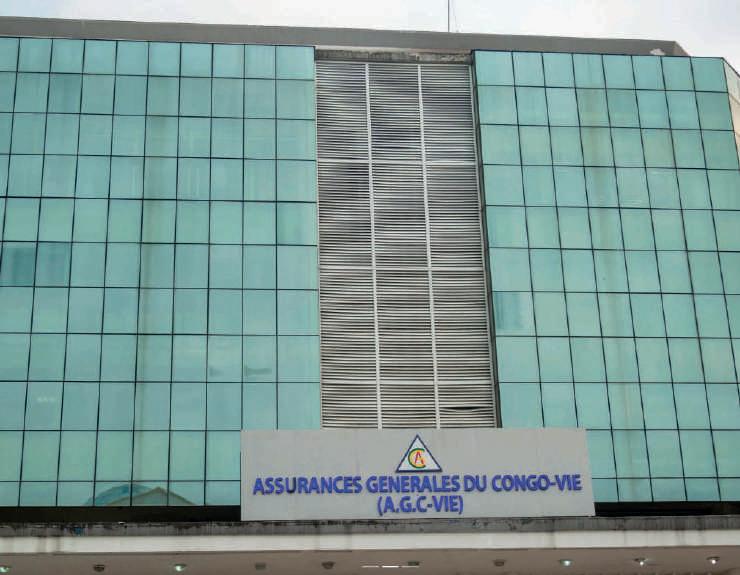
Congo has several insurance companies; the general branch of accident and miscellaneous risks comes first, followed by the booming life insurance sector.
The public insurer Assurances et Réassurances du Congo (ARC) and its private compatriot Assurances générale du Congo (AGC) reserved the first places for themselves but, with its merger with Sanlam Congo, the New Inter-African
Insurance Company (NSIA) could become leader. For its part, Sunu, present since 2022, has implemented innovative strategies to distinguish itself from its competitors. The group has focused on digital transformation by creating a local platform allowing the insurance business to be transferred to mobile. Other major players: Africaine des Assurances Congo (AAC), Colina Congo or LCS Assurances…
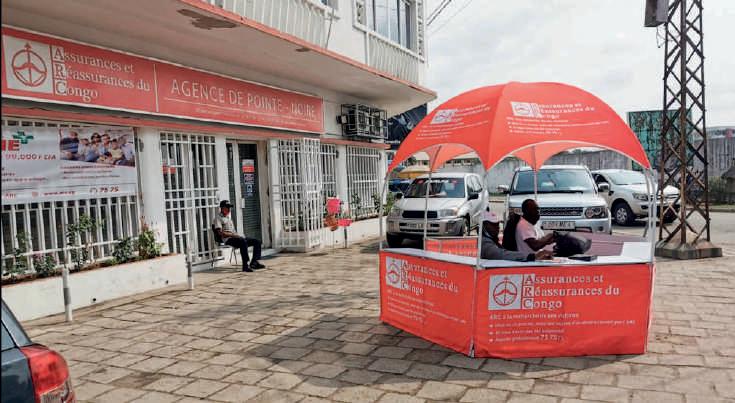
(End of December 2021)
8 INSURANCE COMPANIES
6 NON-LIFE COMPANIES
2 LIFE INSURANCE COMPANIES
29.2 billion OF SHARE CAPITAL FOR ALL OF THE COMPANIES
6 billion OF FCFA FOR THE LIFE BRANCH (20.5% OF THE TOTAL)
23.2 billion FOR THE NON-LIFE BRANCH (79.5 OF THE TOTAL)
62.5% OF FOREIGN CAPITAL
The low insurance penetration rate is mainly due to noncompliance with compulsory insurance and also to the ignorance of the general public and other administrative services about the purposes of insurance. It appears from the presentations that compulsory insurance (automobile, import of goods and others, etc.) is not always applied. Two other problems undermine the insurance sector in the Republic of Congo as in the rest of the CIMA (InterAfrican Conference of Insurance Markets) area. These are the difficulties in paying victims of claims and the absence of a harmonized text establishing the status of insurance company controllers on the African continent. It would be necessary to improve the public’s perception of the insurance industry, by raising awareness of the importance of insurance, the rights of policyholders and beneficiaries of insurance contracts and providing information on issues of underwriting procedures. settlement of claims. The aim is to contribute to the increased security of people, property and human activities, to popularize welfare mechanisms as a complement to compulsory social security schemes and to encourage the growth of economic activities. The Congo Insurance Directorate is the technical body which assists the general director of national financial institutions in the exercise of his responsibilities in the field of insurance.


Interview with Joël Ellah, Managing Director of NSIA subsidiaries in Congo, who aims to be the reference on the Congolese Life and NonLife insurance market by 2025 in terms of profitability, quality of service and of market share.
What products do you offer to businesses?
We offer a full range of insurance products specifically designed to meet the needs of businesses in Congo. To present some of them, we can cite:
- Car insurance: we offer specific insurance to cover all company vehicles against material damage and liability in the event of an accident.
- Professional comprehensive insurance: this offer covers risks linked to real estate and movable property, equipment, operating losses, as well as professional civil liability. This ensures comprehensive protection for businesses against a variety of potential risks.
- Civil liability insurance: this coverage is designed to protect businesses against third party claims in the event of property damage or bodily injury caused by their professional activities.
- Health insurance: tailor-made health insurance plans for company employees, thus guaranteeing access to quality medical care for their staff.
- Supplementary retirement insurance: additional solutions to help companies offer their employees increased financial security during their retirement. These products allow workers to build up additional income during their retirement years and thus improve their future quality of life.
We are convinced that this range of products meets the specific needs of Congolese companies and we offer flexibility and customization to adapt to each sector of activity.
What are your areas of development in Congo?
To become the reference in the Congolese Life and Non-Life insurance market by 2025, we have defined 3 major strategic development axes.
First of all, we invested in a modern and efficient Call Center to improve communication with our customers and facilitate their access to our services.
Then, we made the NSIA Tour available to the market: an innovative initiative aimed at raising awareness among the general public about the importance of insurance. The NSIA Tour, with its converted bus equipped with communication and subscription tools, also makes it possible to organize business meetings on site, thus promoting opportunities for partnerships and sales of NSIA products.
Finally, we aim to launch the first online sales platform for Life and Non-Life insurance products. Digitalization transcribes our desire to offer a fluid and unrivaled customer experience. By combining these areas of development, we are confident in our ability to achieve our ambitious objectives and become the market leader in Life and Non-Life insurance in Congo.
What advice would you give to a new investor?
A new investor considering entering the Congolese market must:
- Study the market in depth: before launching, take the time to fully understand the Congolese market. Analyze existing demand, the players present, local regulations and cultural specificities in order to adapt your offer to market needs.
- Collaborate with local partners with in-depth market knowledge and established relationships. These partners will help navigate the Congolese business environment and accelerate the implementation process.
- Prioritize quality of service and customer satisfaction to retain your customers and gain credibility in the market.
- Be ready for innovation: Congo is a developing market, and customer needs are evolving quickly. Be ready to innovate and propose solutions adapted to current and future challenges.
- Choose a key player for your insurance: NSIA Assurances. By following these tips, you will be able to lay a solid foundation for your business and seize the promising opportunities offered by the Congolese market.
The treaty of the Inter-African Conference of Insurance Markets (French acronym CIMA) creates a single regulation of insurance operations and establishes a single regional Commission to control these activities.
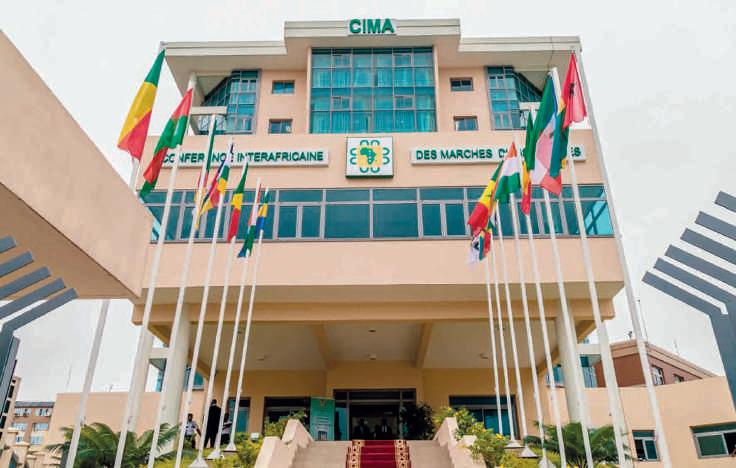
CIMA is a unique example of integration of the regulation and supervision of the insurance industry bringing together 14 countries in West and Central Africa.
The mission of CIMA is to work for the healthy and harmonious development of the insurance industry by ensuring the protection of policyholders and contract beneficiaries and the financial stability of economies. This treaty adopted a single insurance code, encompassing the rules of the insurance contract and the rules applicable to actors: insurers, reinsurers, insurance intermediaries. In the establishments supervised by CIMA, there are 185 approved insurance companies and 19 approved reinsurance companies. The fourteen member states of CIMA have collectively mobilized more than 1,500 billion
CFA Francs (2443116567.31 USD) in insurance premiums during the year 2021, an increase of 10% compared to the fiscal year 2020.
The dematerialization of insurance services is inevitable, because the penetration rate of insurance services is less than 2% among the populations of the CAEMC subregion. Digitalization will make it possible to reach a greater number of people, particularly disadvantaged groups who, until now, have not benefited from traditional insurance services. Digitalization is a project part of the updating of insurance regulations in Africa. The insurance industry in the area is resolutely committed to driving a new dynamic to its development in 2023 and transforming the perception of insurance in the eyes of the various stakeholders.
It is about creating the conditions for a new agriculture which increases our production capacity and reduces our food imports.
Message to the Nation from Mr. Sassou Nguesso, President of the Republic on the occasion of 62th anniversary of Congo’s independence on August 14, 2022.
The national agricultural development strategy focuses on local entrepreneurship. The agropastoral and fishing sectors remain pillars of economic diversification. Agro-industry is one of the major axes of the 2022-2026 National Development Plan.
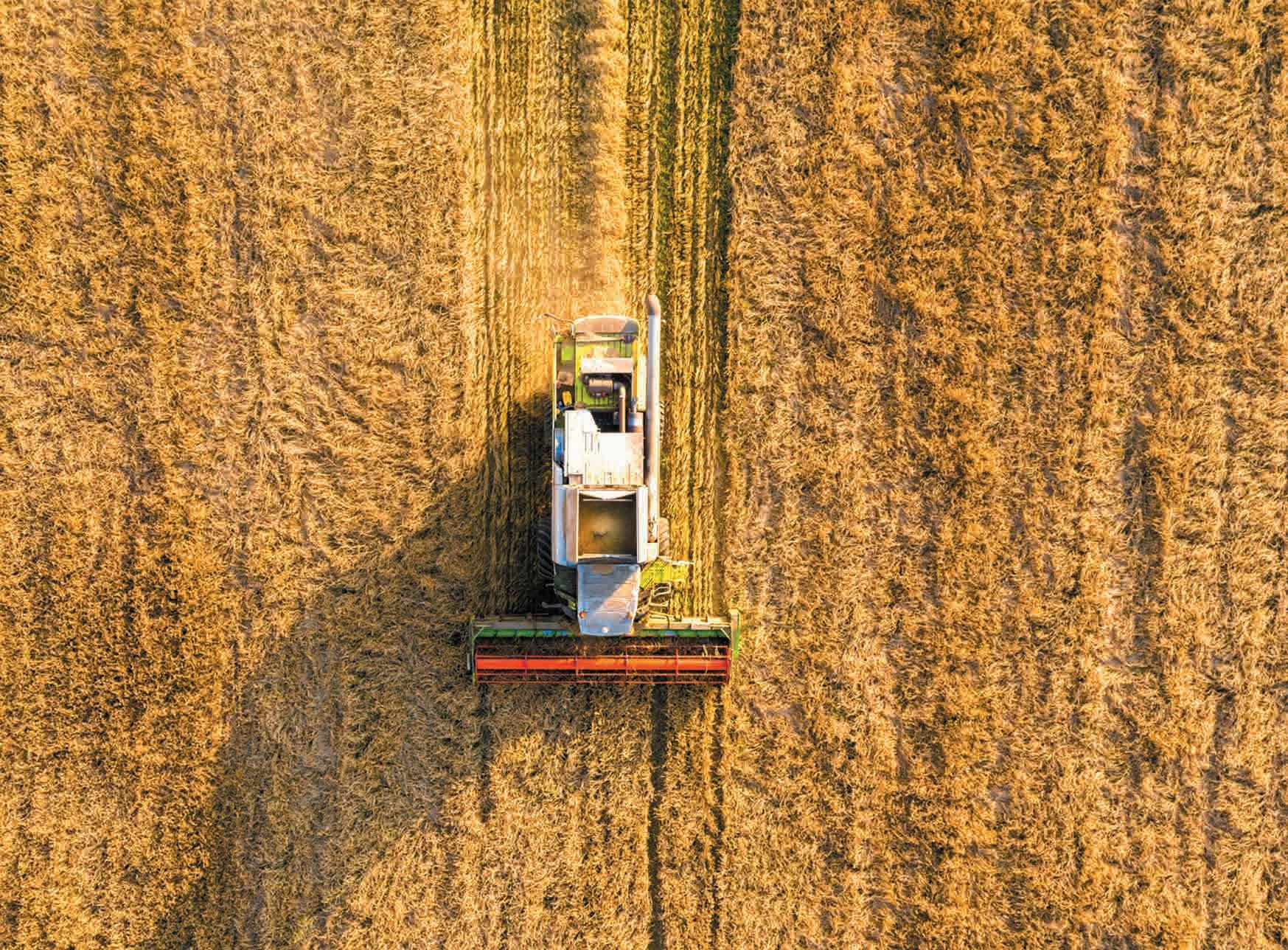

Paul Valentin Ngobo has been Minister of Agriculture, Livestock and Fisheries since May 2021. While agriculture in the broad sense is one of the 6 priorities of the NDP 2022-2026, Paul Valentin Ngobo must act for food security, contribute to job creation in the agricultural sector and food safety.
Born in Fort Rousset, currently Owando, on October 3, 1970, Paul Valentin Ngobo has been a university professor since 2014. A graduate of Management Sciences since 2001, he was -until his appointment in 2021- professor at Paris Dauphine University. This academic was already well known to agricultural stakeholders through his project: Congo Agricultural Incubator (French acronym IAC). Associate of Management Sciences, Paul Valentin Ngobo has made the mechanization of agriculture one of his priorities in order to make Congo one of the main agricultural powers in Central Africa. Renowned for his tenacity, he is keen to make the agricultural sector attractive to young people by setting up incubators, a source of jobs and income. Paul Valentin Ngobo’s mission is to establish protected agricultural zones (French acronym ZAP) in the twelve departments of the country in order to reverse the balance of massive imports of agricultural products. The government of the Republic of Congo imports, in fact, more than 700 billion CFA francs worth of food products, proof of low domestic productivity due to the low level of agro-industrialization in the country. The development of agriculture aims to create the conditions for food security, a reduction in imports and to reduce the unemployment curve from more than 11% to 6% thanks to the jobs created.
For the establishment of ZAPs, the Ministry of Agriculture grants agricultural groups hectares of prepared land, residential and storage premises, and equipment. Since September 2021, period launch, the State buys the harvests from these groups. The strategy deployed at the level of plant production, livestock breeding and even fish
farming is beginning to produce results. The ministry’s actions are linked to food security, the reduction of imports and the diversification of the economy. The challenge will certainly be met as this sector has enormous potential in Congo.
Paul Valentin Ngobo highlights the importance of promoting sustainable agricultural practices complementing development in the fish farming sector in the country. By encouraging the production of organic food, it aims to meet growing consumer demand for healthy products, while creating new economic opportunities for farmers. Organic farming also has significant environmental benefits. It promotes the conservation of water resources, the preservation of soil fertility and the reduction of erosion. The minister supports the training of young people in the field of organic agriculture which will strengthen Congo’s capacity to produce healthy food. According to the latest monitoring report on the economic and financial situation of the Republic of Congo, published by the World Bank, by protecting its population and the vital agricultural sector against the effects of climate change, the Congo will, moreover, promote, building a sustainable, resilient and inclusive economy.
Despite 10 million hectares of arable land, Congo still depends on imports to feed its population, which the government wants to remedy. The agricultural sector in the broad sense is designated as the first pillar of the 2022-2026 National Development Plan.
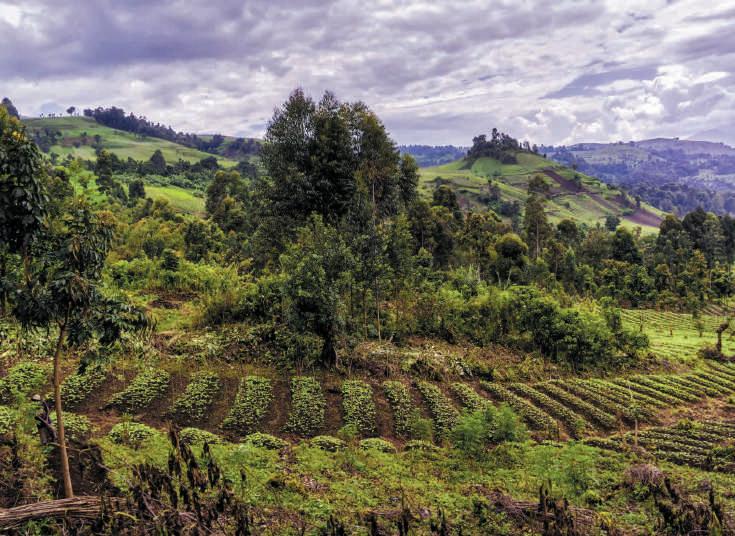
Despite its strong agricultural potential, Congo today imports nearly 70% of its agricultural food products. With the NDP 2022 2026, Congo projects economic growth of 7% in 2023. A quarter of this expected growth would come from agricultural income. Furthermore, agriculture remains a powerful source of employment for young people.
The Integrated Development of Agricultural Value Chains in Congo Project (French acronym PRODIVAC) aims to contribute to the improvement of food and nutritional
security, and the diversification of the country’s economy. The project primarily covers the corridors of the large marketing centers of Brazzaville and Pointe Noire, and the production basins in the departments of Plateaux, Pool, Bouenza, Cuvette and Niari. PRODIVAC is consistent with the National Development Plan developed by the Government of Congo and for which agriculture is one of the main pillars of diversification, growth, competitiveness, creation of sustainable jobs and reduction of poverty. The Project focuses its interventions on four value chains (cassava, corn,
5.8% OF GDP IN 2023 (AGRICULTURE, LIVESTOCK, HUNTING AND FISHING))
34% OF THE ACTIVE POPULATION
10 million HECTARES OF ARABLE LAND2% CULTIVATED
10% OF GDP MOBILIZED TO SUPPORT THE AGRICULTURE SECTOR
700 billion OF CFA FRANCS/YEAR OF FOOD IMPORTS
100 PLANNED PROTECTED AGRICULTURAL ZONES (ZAP)
poultry and fish) prioritized by direct stakeholders based on market demand, their contribution to the national economy (import substitution) and the potential impact on agricultural
Ten main products imported by Congo in value (mds fcfa) in 2020 AGRICULTURE,
households, young people and women. It is structured around four components: skills development and promotion of agricultural entrepreneurship; improving the productivity and resilience of agricultural production systems; institutional development and public-private dialogue; project coordination and management.
The overall objective is to promote competitive and resilient agriculture through the integrated development of agri-food value chains in Congo. The project affects 355,000 people in the different segments of the agri-food value chains selected. The project primarily targets young people, women and vulnerable groups, particularly indigenous peoples, by helping to increase employment and income opportunities in production and processing activities by increasing their attractiveness and profitability. , through support for the development of agricultural entrepreneurship and through adequate advisory support.
Another government initiative was to set up a commercial agriculture development support project (French acronym PDAC) to encourage the development of small-scale agriculture. It is in this spirit that the PDAC has planned two billion CFA francs in subsidies for 2022 for the mechanization of the productive apparatus of around fifty farmers. Faced with the need to develop the skills of young people in the field of agriculture, a farm school has also been set up on the site of the Congo Agricultural Incubator, in Gamboma, in the Plateaux department, thanks to the support from the Food and Agriculture Organization of the United Nations.

To attract foreign and national investors, the State has implemented the policy of Protected Agricultural Zones (French acronym ZAP) to ensure food self-sufficiency, but also to guarantee employment for young people.

This initiative consists of identifying land with an area of 100 hectares, plowing it, building living bases, setting up irrigation systems and supporting entrepreneurs in the acquisition of seed inputs. As part of economic diversification, synergy between scientific research and agricultural development in Congo and also support for farmers, the ZAPs could have a sub-regional vocation.
The program to install 100 protected agricultural zones started in 2023 and will extend across the entire national territory as part of the 2022-2026 national development plan.
Four protected agricultural zones have already been opened in the departments of Bouenza, Lékoumou, Plateaux and Cuvette, for the breeding of small ruminants and the production of basic foodstuffs, such as cassava,
peanuts, corn, soy. Other activities were carried out to boost agricultural production. The “cassava” and “cocoa” sectors have been revitalized through, respectively, the introduction of cultivars with high agronomic performance and the distribution of high-yielding cocoa trees.
In May 2023, the Mayoumina ZAP recorded a yield of 111 tonnes of corn on an area of 100 hectares, 58 of which were devoted to corn, the rest of the hectares being devoted to cassava and soya which had already reached maturity. The launch of the first protected agricultural zone in a forest zone, the Ketta ZAP in the Mokeko district, in the Sangha department, was carried out in 2023. This ZAP extends over an area of more than 60 hectares. The 19 groups operating in this first forestry ZAP will plant several crops including corn, bananas and cassava.
Our company producing and marketing poultry, pig, fish and ruminant feed, has an ultra-modern factory with a capacity of more than 15,000 tonnes/year, the largest Livestock Feed Unit (French acronym UAB) installed in Congo.
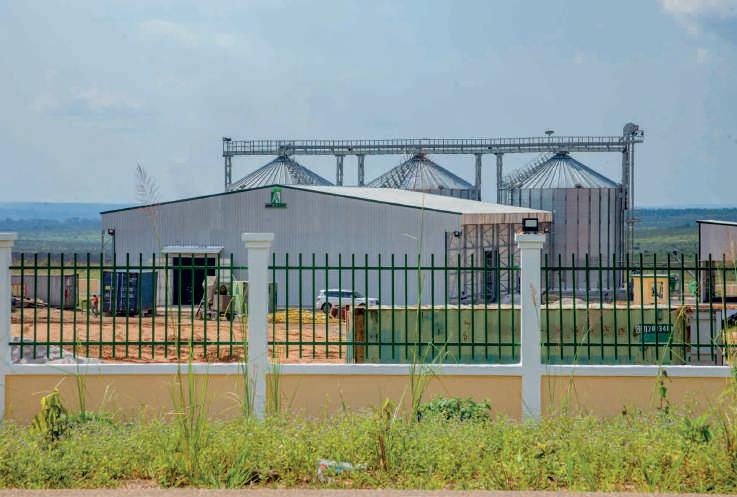
Ager Aliment has set up a complete transit system in order to provide quality products meeting international standards for breeders throughout the Congolese territory.
Located in Gamboma, in the Plateaux department, Ager aliment intends to produce more than 3 million bags of food in 5 years.
As with all our foods, we always start from the local context to define our recipes. Our objective is above all to contribute significantly to the development
of the local poultry industry by providing adapted solutions to make it more competitive.
Pork is raised for its meat, which is particularly appreciated by the Congolese. With demand increasing sharply, local professionals in the pork sector are facing difficulties in supplying good quality feed. We work with professionals in the sector to offer solutions that best adapt to their challenges, with foods that meet strict quality and health requirements. Our solution

consists of a food corresponding to each physiological stage of the animal and its particular needs.
For Congolese fish farms, whatever the breeding system used - in a pond, in an above-ground tank, in a Cubitainer, in a floating cage or in an enclosure - we provide you with feed that ensures optimized results. Our foods in the form of floating pellets result from an optimal and balanced mixture of ingredients to effectively feed your fish:
For all species of livestock ruminants: cattle, goats and sheep, the diet must be balanced, an essential prerequisite to ensure quality performance (growth, fattening, milk production). The food ration of ruminants is characterized by the significant presence of fodder, the quality of which must be the subject of the greatest attention.
The AGER Aliment supplements the fodder-based food ration. Its aim is to balance the basic ration and supplement it to make up forage deficiencies and allow a better level of production.
https://ageraliment.cg
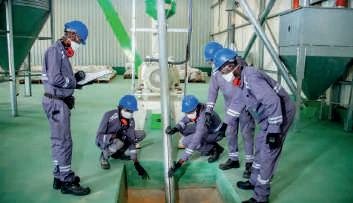

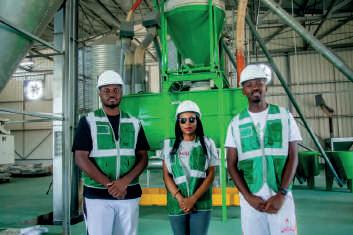

Congo has a diversity of agroecological zones conducive to the practice of agropastoral and fishing activities, a young population and sufficient land resources suitable for the development of several varieties of livestock.

The government has embarked on a real crusade in favor of the development of cattle, pig, goat and poultry farming as well as large-scale fish farming, pillars of growth and economic diversification. The main challenges facing the livestock sector in Congo are those linked to production and the high cost of livestock feed.
In terms of infrastructure supporting agropastoral and fishery production, important activities have been carried out with the support of the country’s technical and financial partners. This involves the rehabilitation and maintenance of agricultural roads; the construction of ponds for the benefit of the populations; the commissioning of the fish feed production unit in Etoumbi, in the Cuvette-Ouest department; the construction and equipment of a community fishing center, equipped with a refrigeration complex, in Okombé in the N’Tokou district and the continuation of construction work on
the improved Yoro landing point in Brazzaville, with the support of the Kingdom of Morocco. In order to safeguard the health viability of livestock, a source of safe and essential proteins for populations, an essential vaccine immunization program has been implemented.
The FAO Strategic Framework 2022-2031 defines its action for the future through the transformation towards more efficient, inclusive, resilient and sustainable agrifood systems for better nutrition, a better environment and better living conditions. The signing of the projects entitled “Contribution to the organic agriculture popularization program through the producer field school approach (CEP)” and “Support for the strengthening of technical capacities in fish breeding in tanks and floating cages” in Congo is part of in the search for sustainable solutions to the problem of food and nutrition. The respective budgets for these two projects are 225,000 US dollars and 286,000 US dollars.

Cross-interview with Nasrine Mabonzo, Hugues-Henry Ngouelondele, Gilles Latran Ngabangui, Co-founders in 2020 of the livestock feed production and marketing company AGER ALIMENT.
What is the purpose of AGER ALIMENT?
Mr. Ngouelondele: To date, it is worth remembering that in the Republic of Congo the agro-industry sector has a significant production deficit, which should be filled mainly by imports. Despite everything, these are not enough to fill the domestic market and therefore, players in this sector still face many challenges, which has motivated our commitment to respond to the issues linked to the agricultural value chain in the Republic of Congo. . In addition, it is important to note the action of the current Government, through its various programs including the NDP 2022-2026 for the development in the broad sense of agriculture and industry which sets a conducive framework Today AGER ALIMENT offers a wide and varied range of the entire poultry range, pig feed, ruminant feed and fish feed. Furthermore, we emphasize that our first UAB has the capacity to produce tailor-made food for other types of species such as ostriches, etc.
We were of course faced with difficulties such as, for example, finding funding. In Congo there is not yet an Agricultural Bank to support this type of project. We hope that with its programs to diversify the national economy, the Congolese State will soon launch a project to create an agricultural bank like our neighbors in West Africa, which would help in structuring the sectors. agro-industrial sector of our country.
Likewise, our main challenge remains the supply chain of inputs, particularly corn, which represents more than 50% of the finished products. However, corn cultivation in the Republic of Congo is still done on a small scale compared to
the immense market demand. One of the causes is the fact that the Congolese agricultural sector still remains mainly informal. To deal with these difficulties, AGER ALIMENT today brings together farmers from the plateaux region into cooperatives for corn production.
What are your development prospects in this livestock feed manufacturing sub-sector in the next five years?
Mr. Latran: AGER ALIMENT placed its first products on the market on December 5, 2021. This second year of operation allows us to achieve positive results, in addition we were able to double our production from the first quarter of 2023. Currently, AGER ALIMENT has two livestock feed units located in Gamboma in the Plateaux department. For the next five years, we wish to continue our establishment throughout the national territory on the one hand and to remain competitive in terms of quality and price of our products on the other hand. We also want to consolidate longterm productive relationships with our various partners: the State, our customers, our suppliers, consumers, etc., thus creating a win-win situation for everyone.
How do you measure the social, economic and environmental impact of your project on the national territory?
Ms. Mabonzo: First of all, in terms of employment and activity, AGER ALIMENT, having the only operational factory in the Plateaus department, has generated a large number of direct and indirect jobs for the populations of the region. In addition, we are developing a Corporate Social Responsibility (CSR) policy which includes:
- Compliance with food safety standards, implementation of HACCP standards and good manufacturing practice (GMP) rules;
- Compliance with trade regulations;
- The implementation of social and charitable policies for the benefit of local populations such as, last year, the distribution of school kits to three schools in Gamboma and, this year, the renovation of a school in the region. Finally, one of our challenges is to carry out our activity in a responsible and sustainable manner, materialized by the fact that our industry does not pollute the soil, our waste is systematically recycled.
The government is committed to encouraging sustainable and equitable industrial fishing in the Republic of Congo. Fish farming in above-ground tanks and floating cages offers an alternative to traditional fishing at sea. Agropastoral and fishing activities, a young population and sufficient land resources lend themselves to the development of several varieties of livestock.

For effective implementation of component 3 “monitoring, control, surveillance” of the project to improve the conditions for exercising maritime fishing and the sustainability of its equitable management in the Republic of Congo, the Ministry of Agriculture, breeding and fishing launched in February 2023 the physical audit of the industrial maritime fishing fleet. The main objective of this physical audit of the industrial maritime fishing fleet is to update and make the national register of industrial fishing vessels more reliable, for better control of the fishing effort in the national Exclusive Economic Zone (EEZ), in order to allow Congo Brazzaville
to align itself with international standards in terms of fishing vessel registers. All industrial fishing and motorized artisanal fishing takes place from PointeNoire. Given its oceanographic characteristics, this area offers favorable conditions for fishing targeting deverbal species and small pelagics. However, the stocks present in Congo waters are monitored by the Fisheries Committee for the Eastern Central Atlantic (French acronym CECAF), whose Scientific Committee has issued opinions calling for a general reduction in effort. fishing deployed in the Congolese EEZ. The industrial fleet under the Congolese flag


is growing rapidly. This situation raises fears for the sustainability of the fishery resource and could have a strong impact, if care is not taken, on the food security of the population.
The Fisheries Development Fund (French acronym FAH) contributes to the improvement of maritime and inland fishing activities as well as the development of fish farming. This state structure finances assistance within the framework of technical support to fishermen and aquaculturists. It carries out marking operations in the area reserved for artisanal fishing, finances the inventory work of public continental waters, mixed waters of the sub-region and waters of land heritage of customary origin.
Fish farming in above-ground tanks and floating cages offers a credible alternative to traditional sea fishing. It makes it possible to effectively control and manage fish production, while preserving our marine environment. The density and distribution of the Congolese hydrographic network, as well as the
importance of floodable land, guarantee significant potential for inland fishing.
Despite existing hydrological assets and exceptional development potential, the inland fishing and fish farming sub-sector has not yet managed to satisfy national demand for fishery products.
The government has requested assistance from FAO to strengthen the technical capacity of fish farmers to raise fish in floating cages and above-ground tanks. This assistance will also make it possible to develop a map of the country’s fish farming potential, with the aim of continuing to scale up pilot farming trials in floating cages and above-ground tanks, reiterating FAO’s support for government policy for the implementation of the National Development Plan 2022-2026.
Funded mainly by the European Union, a new industrial fishing port, with 3.5 hectares of land and two 405 meter long quays, plus a 190 meter wharf for canoes protected by a 350 meter sea wall meters, will be built from scratch north of the port of Pointe-Noire. The start of the work, planned to last 17 months, is scheduled for 2023.
The project to establish an observatory and promote transparency, dialogue and sharing of information with the public in the sustainable management of fisheries resources in Congo was launched in May 2023.
Agro-industries are levers for increasing productivity, accelerating growth and overcoming poverty. They reduce food costs and supply uncertainties. With this in mind, the option taken by the Congolese State to open this sector to public-private partnership will promote the development of new sectors that respect the management of environmental and social risks while ensuring best practices on the entire value chain.
Furthermore, the promotion of foreign investments will make it possible to increase the local food supply of plant and animal products. In connection with the agricultural incubator initiated by the Ministry of Agriculture, Fisheries and Livestock, these investments will help to correct the deficit in basic necessities and stimulate national production.
Resulting from the financing agreement between the Republic of Congo and the World Bank of September 20, 2017, the Commercial Agriculture Development Support Project (French acronym PDAC) has been implemented since April 30, 2018. It will be closed on December 31, 2023, with results considered generally satisfactory, in all its components.
Its main financial instrument to support farmers, the PDAC shared cost fund, with approximately 16 billion FCFA, has supported nearly 15,000 agropastoral and fisheries stakeholders from 1,134 groups or cooperatives, including those of the local populations. indigenous.
PDAC financing on the production, processing, transportation and marketing of agricultural products has strengthened the national food production system, particularly since 2020, when the country was threatened by the effects of the COVID-19 pandemic . Enough to also directly respond to the objectives of the National Development Plan 2022-2026. These significant results can be explained, among other things, by the improvement in the working conditions of stakeholders, thanks to mechanization, monitoring and supervision of beneficiaries in the use of good quality seeds. Thus, 348,000 tonnes of food products were placed on the market by farmers supported by the PDAC, between 2020 and 2023. The beneficiaries of the project acquired 42 agricultural tractors including a combine harvester; nearly 5,000 ha of cassava were planted; nearly 600 ha of fish farming have been set up; 6,000 tons of beef, mutton and chicken meat were sold and 14,500,000 eggs were placed on the national market.
The PDAC enabled the rehabilitation and maintenance of several agricultural service roads throughout the national territory with a view to opening up production basins. Nearly 1,600 km of agricultural roads have been maintained, including with the contribution of NGOs, in high labor intensity (French acronym HIMO), including 248 km of waterways (Libenga and Motaba in Likouala and the Ndéko and surrounding canals, in the Cuvette). This undoubtedly facilitated the opening up of production areas and the evacuation of agricultural products to consumption centers. Bridges were built on the Louémé, at Bilala (Kouilou), on the Louamba, at Louamba (Bouenza), on the

Nkankaya, at Taaba (Pool), on the Lébomi, at Doubandjo and on the Lola, at Engobé (Cuvette -West). All these works contribute today to the mixing of populations.
The electrification of the agricultural production basins of Dihessé (Bouenza), Inoni-Falaises (Pool) and Etsouali (Plateaux) was made possible thanks to the installation of 72 km of electrical lines, for the benefit of 6 000 people, who now have access to electricity. The construction of the Etsouali power line made it possible to connect the Agricultural Machinery Operations Center, the CNSA seed farm and the ZAP (Protected Agricultural Zone) to the national electricity network.
An agropastoral center was built in Tchiamba-Nzassi over an area of 10 ha. A complex which was created thanks to the collaboration of the departmental and municipal council of Pointe-Noire and the ministry in charge of agriculture. This center will accommodate nearly 150 farmers who will carry out market gardening, pig farming and livestock feed manufacturing activities. Which will soon contribute to the increase in the food supply in Pointe-Noire.
Ultimately, more than 1,000 direct and indirect jobs could be created, thanks, among other things, to the marketing of market gardening and livestock products.
In the agricultural research sector, several investments have been made for the benefit of the National Institute of Agronomic Research (French acronym IRA), notably in the Loudima Agronomic Research Zone (rehabilitation of the electrical circuit, installation of greenhouses, a station pumping water and an irrigated plot of 5 ha, acquisition of a tractor with accessories, etc.) and in Brazzaville (acquisition of a 4x4 vehicle, training of researchers, installation of a water tank, greenhouses acclimatization and germination, CIV, SAH laboratories and construction and equipment of a gene bank, etc.).
The project worked to strengthen the capacities of agricultural higher and professional education establishments. At ENSAF near Marien Ngouabi University, several activities were carried out (farm school, amphitheater, administrative buildings, student scholarships, new training programs, etc.). The agricultural high schools benefited from the support of the PDAC (a tractor for the agricultural high school of Brazzaville, administrative buildings at the high schools of Brazzaville and Ouesso, teaching materials for the high schools and agricultural colleges of Ouesso, Makoua, Ewo, Ongogni, Lékana, Odziba, LEPAAC, Mindouli, Sibiti…). Learners now benefit from the best working conditions, which bodes well for a better quality of the national agricultural workforce for the coming years.
The PDAC contributed to improving the business climate of the agricultural sector: bringing cooperatives and groups into compliance with the OHADA Uniform Act relating to the law of cooperative societies, creation of dialogue platforms public private, organization of forums on Agriculture, livestock and fishing in 2018, 2020, 2023, organization of the GrowCongo Investing in Agriculture Forum, February 25, 2020, in Amsterdam in the Netherlands. A national artificial insemination center and seed and plant disease control laboratories are being installed. In short, the execution of the PDAC was an opportunity for the Republic of Congo to begin the transformation of its agriculture. It remains that the achievements are sustained and that the country continues to support other agropastoral and fisheries stakeholders in order to continue to drive this new dynamic born from the action of the PDAC.

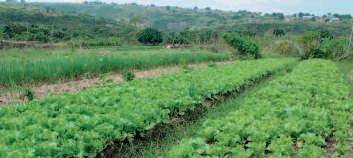



Congo is banking on agribusiness as one of the pillars of its National Development Plan 2022-2026. The government is encouraging the establishment and development of agro-industries through private investment.
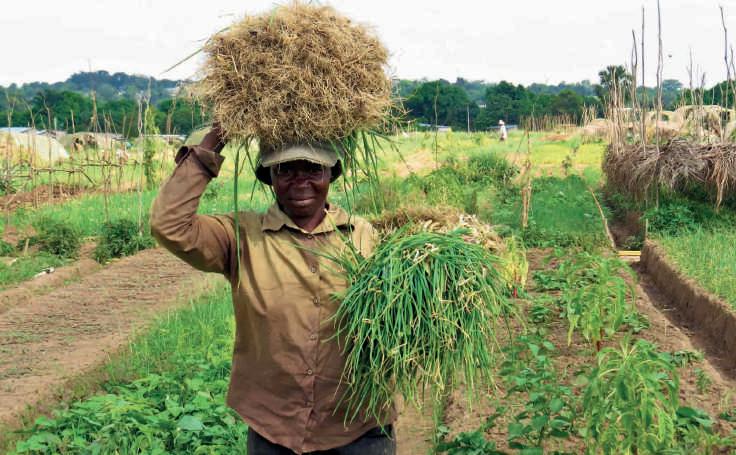
The new agricultural dynamic is facilitated by agro-industrial investments. The Niari department is one of the main beneficiaries of these reforms undertaken by the Congolese authorities with the support of donors such as the World Bank and UNCTAD. Located 160 km from Pointe-Noire, in recent years it has seen the establishment of international players such as Agri Resources Group and Tolona, a Spanish company.
Established in Dolisie since 2016 where it manages more than 69,000 hectares of land, Agri Resources Congo, a subsidiary of Agri Resources Group (the agricultural branch of Monaco Resources Group) has invested in the local production of cereals (rice and corn) and vegetable
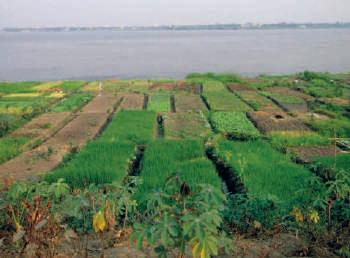

(cabbage, peppers, green onions, chili, onion). They produce more than 20 tonnes of vegetables, thanks to local labor and sustainable agricultural practices. The next step is focused on the processing of these raw materials.
The Tolona group, also present on the banks of the Niari River, produces corn and other high value-added crops. The company has also started breeding poultry for egg production, in order to supply the local market at reduced prices.
These two examples illustrate the new dynamic, the result of reforms by the government which wants to support the smallest farmers, as evidenced by the validation in early 2022 of the project to support the development of commercial agriculture (French acronym PDAC).
In his message of greetings to the Nation on the occasion of the New Year 2023, the President of the Republic, Denis Sassou Nguesso, reiterated the “firm commitment” to build the country’s first fertilizer and fertilizer manufacturing plant in the Special Economic Zone (SEZ) of Pointe-Noire. Its cost is estimated at $2.5 billion.
The 2022-2026 National Development Plan therefore places at the heart of the diversification process, agriculture in the broad sense as well as industry in the component linked to the processing of basic products.
Congo also has significant deposits of potash essential for the production of fertilizer. The Australian company Kore Potash, which operates two deposits covering an area of 650 km² in Kouilou, intends to invest 4 billion dollars (nearly 2,500 billion FCFA) over twenty years, for an annual production of 5 million tonnes of potash. This potash reserve is considered world class, with high ore grade and shallow deposit depth of less than 300 meters. The development of production could raise Congo to the rank of major fertilizer exporting countries and help it hold 6% of world production, according to official estimates.
Business opportunities in the fields of agriculture, market gardening, arboriculture, fishing (continental and maritime), fish farming and livestock breeding as well as the processing of agro-pastoral products, etc. turn out to be innumerable. This sector covers a total of more than 10 million exploitable lands. It is possible to invest in the production and export of food products such as coffee, oil palms, potatoes, cocoa, etc. Congolese agro-industry offers opportunities. The subsidiary of the Attijariwafa Bank group, Crédit du Congo, is committed to supporting the private sector in facilitating banking operations in the Republic of Congo.
Like the Great Green Wall, the global decade on afforestation, initiated by the Congo Basin Climate Commission, within the framework of its mandate, will undoubtedly feature among the decisive contributions made by the ‘UA and, through it, through our entire continent in the fight against global warming and the erosion of biodiversity.
Excerpt from the speech of Denis Sassou Nguesso, President of the Republic of Congo, President of the Congo Basin Climate Commission, February 18, 2023 in Addis Ababa, during the meeting of African heads of state and governments on climate change.
The Congo has a real government project to protect the environment and the climate. 17 protected areas cover 13% of the national territory, as many sanctuaries for biodiversity. Recycling is an opportunity for sustainable waste management.


Interview with Arlette Soudan-Nonault, Minister of the Environment, Sustainable Development and the Congo Basin since May 15, 2021, who is keen to mobilize the international community towards real actions in the fight against climate change in Africa.
Technical coordinator of the Congo Basin Climate Commission, you are preparing the Summit of the three largest forest basins in the world. What do you actually expect from this event?
The central issue of the Summit “Amazon/Borneo-South East Asia and Mekong/Congo, Three Basins Summit of biodiversity ecosystems and tropical forests” which will be held in Brazzaville on October 26, 27 and 28 is to constitute, through the union of the three basins, a global alliance, biodiversity ecosystems and tropical forests, an Alliance/Coalition with strictly South – South governance, structuring the three global ecosystems which represent 80% of tropical forests across the world, bring together 2/3 of terrestrial biodiversity and ensure the vital role of global regulator of carbon balance and life on earth. The three basins should capture 80% of the existing and future financial mobilization announced during COP 27 for the climate and COP 15 for biodiversity. This global alliance of the three basins will constitute a legitimate force for proposals and negotiations, within multilateral climate and biodiversity bodies.
The Summit has six strategic objectives:
- define and adopt the broad outlines of a global governance plan through a cooperation agreement between the three basins and the formation of a global alliance of the three basins;
- develop a common strategy, with a work program and a portfolio of investment projects with a view to anticipating and preparing funding requests from existing and future financing mechanisms;
- sign financing agreements with multilateral and bilateral donors, global philanthropy and develop financial mechanisms with the private sector, particularly with the creation of a
sovereign carbon market to ensure sustainable financing of the three basins;
- create a platform for subregional and intercontinental scientific and technical cooperation and strengthen capacities in the three subregions;
- decompartmentalize climate and biodiversity issues, closely linked at the scale of ecosystem issues, and reconcile environmental law resulting from the Kunming-Montreal Agreement and climate law resulting from the Paris Agreement;
- constitute a legitimate proposal and negotiation organization of reference within multilateral climate and biodiversity bodies. Achieving the objectives requires the adoption in Brazzaville of the guidelines which structure the political and strategic vision of the Alliance/Coalition of the three basins, the founding principles of which will be adopted by the stakeholders during the Summit and which will be the subject of the declaration of the Heads of State and Government of the three basins. It is therefore fundamental that these principles and the texts which will define them be the subject of extensive consultation of all stakeholders in the three basins in order to benefit from their contributions, their support and their approval in with a view to guaranteeing its implementation and results.
Should we relaunch North-South cooperation? Is the participation of the European Union important?
North-South cooperation seems essential to us to achieve the objectives of the Paris Agreement, in particular maintaining the rise in temperature at 1.5 degrees Celsius. The commitments in terms of compensation from the more polluting northern countries to the southern countries which

are good students in terms of mitigation and therefore less polluting have not been respected until now. It should be noted that the “Amazon” summit /Borneo- South East Asia and Mekong /Congo, Three Basins Summit of Biodiversity Ecosystems and tropical forests” will bring together several categories of participants and among these are the financial partners: The Fortunes “500” and philanthropic organizations; Multilateral donors; The financial markets, whose support is necessary for the successful organization of the Summit. The participation of the European Union is important and will take place through the scientific community which will be represented by the members of the Intergovernmental Panel on Climate Change (IPCC), the Intergovernmental Scientific and Political Platform on Biodiversity and Ecosystem Services (IPBES) and national climate and biodiversity experts from the States involved (such as the French department of Guyana which is part of the Amazon basin), as well as representatives of research and training institutions on established tropical forests in North America (Canada and USA), Europe, Asia, Australia and New Zealand.
In the Congo Basin, who should receive carbon credits? Projects or countries?
Climate change is accelerating and pressure is mounting on
countries and companies to effectively implement the Paris Climate Agreement.
The demand for carbon credits by African countries is becoming more and more pressing. Africa and its private sector do not benefit at all from the carbon market. However, this Africa, home to the second largest ecological lung in the world and vast ecosystems that absorb and store carbon (forests, mangroves and peatlands, etc.), currently only receives 11% of the world’s carbon offsets.
The Congo Basin with its vast tropical forests sits on an economic gold mine, a green windfall thanks to its still littleexploited carbon credit potential. For this, these countries should benefit from both carbon offsets and credits. Hence the development by the Economic Commission for Africa of the standardized and harmonized protocol on greenhouse gases to promote the integrity of the carbon market and investments relating to economic activities resilient to climate change in member countries of the the Congo Basin Climate Commission. In most carbon projects, the income generated from the sale of carbon credits is shared equitably between the beneficiaries (the project leader and local populations and, as far as possible, the State). This sharing is a function of the principles defined within the framework of the profit sharing mechanism.
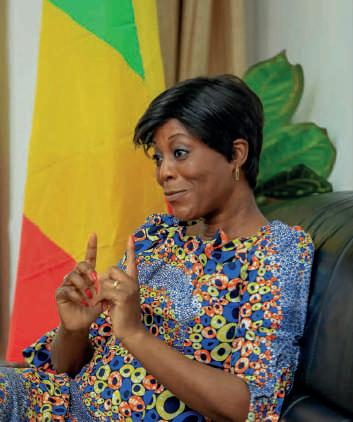
What is your Nationally Determined Contribution (NDC) strategy?
The Republic of Congo, in accordance with the provisions of the Paris Agreement ratified on April 21, 2017, had revised its first CDN in 2021 and submitted the revised document to the Secretariat of the United Nations Framework Convention on Climate Change ( UNFCCC), August 2, 2021.
The Republic of Congo, although part of the group of developing countries with low greenhouse gas emissions, intends to contribute to the global effort by increasing its ambition in the fight against climate change.
The strategy adopted for the revision of this CDN was based on 5 pillars:
- Strengthening political will and buy-in from national stakeholders and development partners;
- The review, alignment and updating of objectives, policies and measures established in the areas of climate and sustainable development;
- The integration of new sectors and/or greenhouse gases into the revised NDC;
- Evaluation of the costs and investment possibilities of the priority actions selected in the areas of climate and sustainable development;
- Monitoring progress and strengthening transparency. The Republic of Congo improved its NDC by broadening the scope of sectors subject to mitigation and adding the forestry
sector which had not been taken into account during the previous submission in 2015. Thus, the sectors retained were:
- energy with the sub-sectors of energy production;
- transportation ;
- households and services;
- industrial processes and product use (French acronym PIUP);
- agriculture;
- forestry and other land uses;
- waste.
According to the revised CDN, the level of reduction of Greenhouse Gas (GHG) emissions will be 56.91% in 2025 and 54.66% in 2030, of which 51.69% and 47.50% respectively require support. international (conditional scenario). With the support of the French Development Agency (French acronym AFD) as part of the Adapt’Action program, the Republic of Congo, in December 2022, developed the action plan for the implementation of the revised CDN. This action plan includes mitigation measures; mitigation and adaptation measures for the forestry and other land use (French acronym AFAT) sector; adaptation measures; transverse measurements.
As you see, the Republic of Congo, a very low emitter of greenhouse gases, is doing more than its part in the global fight against global warming. Our demand for climate justice is all the more well-founded.
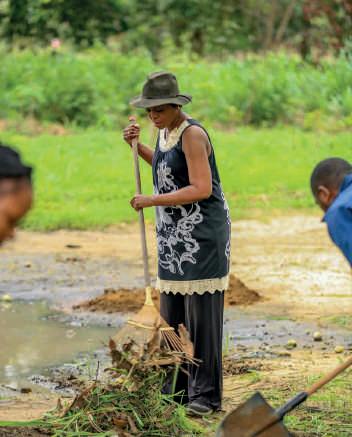
Congo is among the most proactive states on the continent on sustainable development issues. By protecting its population and the vital agricultural sector against the effects of climate change, Congo promotes the construction of a sustainable, resilient and inclusive economy.

The Congo is full of great biological diversity rich in varied biotopes and ecosystems and remarkable ecological integrity. The Republic of Congo is a party to the Climate Convention and ratified it in 1996, as well as its subsequent legal instruments, the Kyoto Protocol and the Paris Agreement. Under the leadership of the Congolese head of state, Denis Sassou Nguesso, president of the Congo Basin Climate Commission, the Congo has spared no effort in the search for solutions to the climate challenge. Thus, as part of the conservation of its natural capital, endowed with extraordinary biodiversity, Congo devotes 13% of its territory to seventeen protected areas. In addition, since 2008, the country has joined
the process of reducing emissions from deforestation and forest degradation (REDD+) and submitted its nationally determined contribution to the convention. By the end of 2022, implemented REDD+ activities covered a forest area of approximately 1.35 billion hectares, approximately 75% of global deforestation.
The Congo Basin Climate Commission is one of the three commissions created by African heads of state and governments following the action summit organized on the sidelines of COP22 in Marrakech, with a view to strengthening actions fight against climate change on the continent in connection with the economic development of Africa.
17 PROTECTED AREAS
13.2% OF THE NATIONAL TERRITORY
4,700 km
CONGO RIVER WITH A FLOW OF 50,000 M3/S
145,500 km2 OF PEAT BOGS
At the same time, by updating its National Environmental Action Plan (French acronym PNAE), with the support of the UNDP country office and its other partners, the government of the Republic of Congo has demonstrated its commitment to taking into account emerging themes linked to national development and the international context in all strategic sectors of development of the country. As such, the government, with the support of its partners, has chosen options that are consistent with the country’s ambitions with a view to meeting the major challenges for the next ten years by aligning with its National Development Plan (NDP). such as the preservation of peatlands which constitute a real reservoir of carbon dioxide for humanity. For over thirty years, the Wildlife Conservation Society (WCS) has played a major role in the conservation of wildlife and wild places in Congo, in collaboration with the government, national stakeholders and local communities.
In March 2023, the World Bank approved financing of $82 million in support of the Project to Support Inclusive and Climate Change Resilient Economic Activities (ProClimat Congo) in the Republic of Congo. The total amount includes a $70 million loan from the International Bank for Reconstruction and Development (IBRD) and a $12 million grant from the Global Partnership for Sustainable and Resilient Landscapes (PROGREEN).
ProClimat Congo aims to strengthen landscape management and improve the economic activities of local communities in three selected areas including protected areas threatened by the expansion of agricultural activities and poaching, as well as districts suffering from high levels of vulnerability and of exclusion, particularly in the departments of Pool and Lékoumou. This project

will make it possible to implement resilient agricultural practices over an area of 25,000 hectares and to organize sustainable landscape management over 1.2 million hectares of protected areas. More than 23,000 people should benefit from support for the implementation of local economic activities in the areas of agriculture, agroforestry, non-timber forest products and ecotourism.
24 sectoral programs
254 referenced projects
75% projects come from the public sector
23% NGOs and civil society
2% from the private sector
46.5% projects have a maturity 3 that can be financed within a period of 6 months
10 billion USD pipeline valorization projects
3.6 billion USD distributed across sectoral programs: 5 for hydroelectricity and 10 for drinking water supply
The agreement creating the Blue Fund for the Congo Basin was signed by twelve countries in the sub-region in Oyo, the stronghold of President Denis Sassou Nguesso, in March 2017. This is an African and global issue.

The Blue Fund for the Congo Basin is the main financial tool of the Congo Basin Climate Commission (French acronym CCBC). Its objective is to mobilize the necessary resources from contributors and investors, with a view to financing the implementation of programs and projects contributing to sustainable development and the promotion of the blue economy in its field of intervention. Despite being the
continent that contributes the least to global emissions, Africa is one of the regions most vulnerable to climate change, where tens of millions of people suffer the harmful effects of droughts, flooding, erosion, landslides, water stress, food insecurity and other side effects accentuated by climate change.
In March 2023, a fund of more than 65 billion FCFA was released to support the Congo Basin during the One

This project, the result of cooperation between the Republic of Congo and the University of Leeds, aims to produce improved cartography and deepen scientific data on the peatland area of the Central Basin of the Congo Basin, particularly the stock of sequestered carbon, with a view to sustainable management of these fragile ecosystems. Funded by the UK’s Natural Environment Research Council (NERC) over five years, it will expand work on a large peatland complex. These peatlands, which extend over 145,500 square kilometers, or more than a quarter of the surface area of France, are recognized as the largest area of tropical peatlands in the world.
Given the carbon contained in peatlands, their protection has become a global priority. Peat is a type of wetland soil, made up of partially decomposed plant matter and is rich in carbon. A reserve of around 30 billion tonnes of carbon is estimated in the discovered peatlands, the equivalent of three years of global emissions linked to fossil fuels.
The construction of a Congo Peatland Research Institute in Brazzaville will result in a regional center of
Summit Forest conference in Libreville, Gabon. Several donors have committed to participating in this financing operation for the benefit of the States of the 15 countries of the Congo Basin. This is the Walton Foundation for 20 million euros, a little more than 13 billion FCFA. The Conservation International Foundation to the tune of 30 million euros, or 19.6 billion FCFA. The rest of the envelope is the responsibility of France. On the sidelines of this same conference, Morocco announced that it will support the implementation of the Blue Fund for the Congo Basin, through the Morocco Climate Change Competence Center (4C Morocco).
This Fund also aims to promote the blue economy of the Congo Basin, with a principle of community and regional management, countries in which projects will be developed in the key sectors of organic agriculture, ecotourism, crafts traditional, energy, with the objective of strengthening the sustainable economies of the region and offering an alternative to deforestation. Other funding, particularly from the most polluting countries, is expected.
excellence. The main objective is to create an Institute that conducts world-class research on the peatlands of Central Africa.


This international conference, held from October 26 to 28, 2023 in Brazzaville, is dedicated to the three most important forest basins in the world: the Amazon, the Congo and the Mekong.
The summit, supervised by the United Nations, will bring together representatives of 29 States from the three ecosystems: 15 countries from the Congo Basin, with the Republic of Congo as leader, 9 countries from the Amazon Basin (Brazil, Bolivia, Peru , Ecuador, Colombia, Venezuela, Guyana, Surinam and Guyana) and the 5 countries of the Borneo-Mekong Basin (China, Cambodia, Laos, Thailand and Vietnam) as well as associated ASEAN countries. Also expected at this summit are sub-regional political and economic organizations from the three ecosystems.
This Summit is the second of its kind initiated by the Congolese Head of State, Denis Sassou Nguesso, after that held from May 31 to June 3, 2011. Created at the initiative of the Congo Basin Climate Commission, it aims to build a global coalition to support the United Nations Decade on Ecosystem Restoration 2021–2030. The countries of the Congo Basin Climate Commission have decided to adopt a common position at the summit of the three tropical basins.
Each year, the world’s forests absorb 16 billion metric tons of CO2, or more than 40% of global fossil fuel emissions. The three basins of the Amazon, BorneoMekong and Congo represent a major challenge for the survival of the planet.
The United Nations Framework Convention on Climate Change (UNFCCC) underlines the importance of preserving the forest ecosystem, particularly in Africa where the climate challenges are undeniable. The continent plagued by deforestation is home to the second largest forest massif on the planet. The challenge is to combine the preservation of Africa’s forests with the imperative of economic development.
The various UN agencies are working towards the success of this major meeting of stakeholders in the fight against climate change, through the holding of the Summit of the three major forest basins of the planet and the environment decade. Thus, the United Nations Educational, Scientific and Cultural Organization (UNESCO) will participate in
this summit which will serve as a consultation framework for the creation of a global coalition for the protection of the environment and biodiversity .
Biodev2030 is an experimental approach implemented in 16 pilot countries with multiple socioeconomic, environmental and geographic contexts. It aims to provide the governments of each country with the means to identify and initiate, jointly with the private sector and civil society, profound changes in the sectors of the economy having a strategic impact on development and biodiversity of the country. By 2030, Congo aims to secure its biodiversity through better knowledge of its components, sustainable management, and by integrating human and socio-economic development. The Steering Committee of the Biodev2030 project in Congo works in close collaboration with the technical teams of WWF Congo.

Congo is one of the first countries on the African continent to ban the import, production and marketing of single-use plastic bags and films. The government is alerting Congolese society to the challenges of waste treatment.
The Minister of the Environment, Sustainable Development and the Congo Basin, Arlette Soudan-Nonault, wishes to intensify the fight against climate change, through the implementation of projects including collection, sorting, transport, recycling , recovery and elimination of waste.
The solution to eliminating waste is to promote a circular economy in which plastic will be reused instead of being thrown away. To do this, local authorities must develop ecological management plans including the collection, sorting, transport, recycling, recovery and elimination of waste.
The city of Brazzaville generates around 300 tonnes of waste per day, according to official figures. Faced with this situation, the Circle of Travel, Tourism and Environment Elites (CEVTE) and the Good Deeds Days initiative promoting sustainable development in 120 countries have joined forces to implement the “Brazzaville without plastic waste” campaign. here at the end of 2023. Nine municipalities in the Congolese capital will be freed for a month from tons of packaging and plastic bottles that litter the streets and pollute the environment. “Brazzaville without plastic waste” thus strengthens sustainable waste management in this Central African country. Furthermore, the Recy Plast association has managed a landfill installed over an area of 4,700 m2 in the Kombé district, in the suburbs of the capital Brazzaville since 2019.
In February 2022, the municipal authorities of the industrial town of Nkayi, located in the Bouenza department, announced the construction of a plant to recycle plastic waste into paving stones. These pavers

will be marketed for various development works at the local level. The installation, which will benefit 120,000 people, is financed to the tune of 21 billion CFA francs (around 32 million euros) by the European Union (EU) as part of its “resilient cities” program. It is focused on local and sustainable development, but also on climate action in several municipalities, particularly in Africa. At the current rate, plastic pollution is expected to triple by 2050 and generate nearly 20% of global greenhouse gas emissions. Plastic waste represents 85% of all marine litter. In Africa, 165 million tonnes of plastic will reach the end of its life within ten years.
Congo calls on investors to intervene in the sustainable energy and forestry sectors. The theme of waste is the heart of the green economy, a concept which the Republic of Congo has spearheaded in terms of development. The involvement of the private sector is also expected in this sector.
For 40 years, our entire population has been invited to plant a tree as part of National Tree Day, celebrated in our country on November 6 each year. It is this type of proactive action, combined with a rigorous forestry code, that has allowed us to maintain one of the lowest deforestation rates in the world.
The forestry sector today remains major for the national economy. Since logs have been banned from export since January 1, 2023, companies must now process the wood on site.

The forest sector of Congo remains today the 2nd economic sector of country that is a major producer of tropical hardwoods, including logs, boards and panels.

The Ministry of Forestry Economy aims as a priority to reduce poverty and make the forestry and wood industry a growth sector. Indeed, the Congolese forestry sector is essential not only in the fight against global warming but also economically, contributing to 6% of Congo’s gross domestic product and 36% of its tax revenue.
The Republic of Congo has a forest cover estimated at 22.4 million hectares, which represents 65% of the total area of the territory, of which 14.67 million hectares are allocated in the form of forest concession (DGF, 2020) . There is a potential of around 300 tree species, but only around fifty are subject to commercial exploitation and processing. 71,000 hectares are
made up of plantation forests with strong dynamics in recent years and the advent of industrial plantation projects. After the launch of the project to operationalize the National Measurement, Reporting and Verification System (French acronym Syna-MNV), the Project to reduce greenhouse gas emissions from forests in the Republic of Congo (French acronym Préforest) and the Strengthening the sustainable wood energy potential in the Republic of Congo (French acronym Prorep), a memorandum of understanding relating to forest management was signed on April 20, 2023, between the Minister of Forestry Economy and the representative of the Organization of United Nations Food and Agriculture
22.4 millions HECTARES OF FOREST SURFACE
65% OF THE TOTAL AREA OF THE TERRITORY
6.6 millions HECTARES OF PRODUCTION FOREST
100% OF PUBLIC PROPERTY
6% GDP
36% TAX REVENUE
35 FORESTRY COMPANIES
2nd STATE EMPLOYER AFTER PUBLIC SERVICE

Organization (FAO). The document entrusts state structures with the coordination of three projects for monitoring carbon emissions, sustainable wood energy and forest plantations. These three projects benefit from funding from the Green Climate Fund of around 27.9 billion FCFA and the Central African Forest Initiative (Cafi) of 5.3 billion FCFA. The UN agency FAO acts as a technical partner for the implementation of these projects. Financed to the tune of 27.9 billion FCFA by the Green Climate Fund, Proforest is intended for the creation of 14,500 hectares of agroforestry plantations, as well
as 500 hectares of assisted natural regeneration in the departments of Plateaux, Pool, Bouenza, Niari and Kouilou. The Prorep project, for its part, involves the construction of 2,700 hectares of plantations dedicated to wood energy to supply capital, Brazzaville. It benefited from funding from Cafi to the tune of 4.1 billion FCFA. Cafi is also the financier of the Syna-MNV project, with a total cost of 1.2 billion FCFA, for a period of two years across the entire national territory. It will ultimately make it possible to assess national performance in reducing emissions linked to deforestation and the degradation of forest cover, with particular emphasis on the fight against poverty.
The promotion of community agroforestry constitutes a real challenge to be taken up in a context of climate change. This community agroforestry project is funded to the tune of $8 million, thanks to additional funds provided by the Forest Investment Program and the Strategic Climate Fund. Launched in January 2023, it aims to plant 15,000 hectares of trees, as part of the Integrated Development of Agricultural Value Chains in Congo Project (French acronym PRODIVAC). The management of allocated funding is entrusted to the African Development Bank (AfDB).
Of the 15,000 hectares to be developed over the coming months, 500 hectares are for the cocoa and cashew nut sectors, 4,500 hectares of forests for wood energy and 10,000 hectares of individual land for the development of food crops. such as corn, banana and cassava.
Planning will be done in agreement with the National Afforestation and Reforestation Program (Pronar) responsible for operationalizing the agroforestry project. This project aims to facilitate access to secure land for local producers and to strengthen the technical and organizational capacities of community groups. It concerns the districts of Djambala (Plateaux), Louingui (Pool), Nkayi and Loudima (Bouenza).

Interview with Georges Bitar, Managing Director of Bois et Placages de Lopola (BPL), a company managing both logging and industrial wood processing in the Republic of Congo.
How is your activity structured in the Congo Basin?
The Lopola wood and veneer company is a family business in the form of an SARL. We have been based in Likouala since 2000. We installed our processing plant in 2003. We have been processing all commercially viable species in a fully developed Forest Management Unit (FMU) since 2009.
Our markets are mainly exports and we employ around 250 people. I am happy to say that we are among the first to settle in Likouala and we are proud to have helped to open up this beautiful region.
The principle of sharing wood production constitutes one of the reforms of the new forest code of the Republic of Congo. What consequences does this have for your production?
In my opinion - which is that of the majority of forestry companies - the Production Sharing Principle (PDP) is not adapted to the forestry sector for environmental, commercial, legal and above all practical reasons. Sustainable development and the protection of forests point towards better use of wood resources, towards advanced transformation. However, the principle of the PDP as described by the bill encourages companies to produce more and invest less in processing. Commercially, our concerns are legitimate and I believe there is little need to expand. Legally, the principle shakes the foundations of the agreements signed with the government and the reasons which made forestry companies decide to settle in Congo and invest so heavily. The practical side requires gigantic logistics which could
be detrimental to all stakeholders in the sector. It must be remembered that the timber sector in Congo is the largest private employer and the sector which has held up during all the crises that the country has endured by fully assuming its civic responsibility.
How do you take environmental issues into account?
Our company is set up and is moving towards legal certification.
We are very proud to be part of a country fully committed to environmental protection at all levels of its government. I congratulate the visionary and determined commitment of His Excellency the President of the Republic
The Congolese government wants better governance of the forestry sector with the adoption of the new 2020 forest code and the State’s commitment to prohibit the export of logs to promote the development of the wood processing industry at the level local through special economic zones.

The Congolese government wants to pass a specific law to establish the sharing of production between the state owner and forestry companies.
The principle of sharing wood production constitutes one of the reforms of the new 2020 forest code of the Republic of Congo. But the complexity of the production sharing arrangements between the State and the concessionaires is currently hampering its implementation. To do this, the authorities initiated
a study to define the contours of the reform and launched a consultation of stakeholders, in particular parliamentarians, technical and financial partners, the private sector and civil society.
By initiating production sharing of forest products, the executive intends to increase the sector’s contribution to gross domestic product. The revision of forestry taxation with the introduction of two new taxes, namely the occupation tax and the residue tax, results from the

government’s desire to boost revenues from the foresttimber sector. This policy is consolidated by the idea of developing a wood industry capable of supplying the national market.
In fact, production sharing can range from 20 to 60%, depending on the volume of logs produced by the concessionaire. The duration of the development and transformation agreement has increased to 30 years, compared to 25 years in the old law. This duration allows the development to be completed and secures investments in the development carried out by the forest concessionaire. There is also the obligation to obtain a certificate of legality to be able to carry out exploitation for industrial purposes.
At the same time, the implementation of the Voluntary Partnership Agreement (VPA) between the Republic of Congo and the European Union (EU) aims to deploy a computerized system for verifying the legality of
timber (French acronym SIVL). This tool is supposed to allow Congo to sell its wood on the European market in complete transparency.
Forestry concessions are allocated to 35 forestry companies. La Congolaise Industrielle des Bois (CIB), a subsidiary of Olam Agri, became in 2022 the first company in Africa to complete a Forest Stewardship Council™ (FSC™) certified project with the construction of a restaurant for employees of the Wildlife Conservation Society Congo (WCS) and the Nouabale Ndoki Foundation (FNN). The CIB is the national flagship of the forestry industry followed by the private company Industrie Forestier de Ouesso (IFO).
The measure prohibiting the export of logs came into force in the Republic of Congo on January 1, 2023. The main challenge remains the strengthening of local skills in wood processing, the use of materials and the choice of species.
Investment opportunities in the wood sector in Congo relate to logging as well as the production of service wood (charcoal, energy wood) and processing: carpentry, cabinetmaking, etc. Congo intends to create two special economic zones dedicated to wood processing, in Ouesso in the north and in Pointe-Noire on the South Atlantic coast..

I mentioned Tourism, this green gold that never runs dry. In this area I have great ambitions for the Congo, with the organization of our territory into three ecotourism development zones and an offensive policy of seeking private investment.
The tourism sector is underexploited in the Republic of Congo and therefore offers real business opportunities. Ecotourism can be combined here with cultural tourism. 2023 is the year of celebrating the 70th anniversary of Congolese literature.


Interview with Lydie Pongault, Minister of Cultural, Tourism, Artistic Industry and Leisure since September 24, 2022. She previously held the position of Advisor, Head of Department of Culture, Arts and Tourism at the Presidency since 2013.
In terms of action, what impact does the grouping of culture and tourism have within the same ministry?
Allow me to complete the question by also mentioning the rapprochement between culture and leisure. Government action, at many levels, is transversal. But it seems obvious that certain sectors complement others, and culture feeds tourism and leisure. As an illustration, I would cite memorial tourism, which places heritage at the service of travelers’ discovery of a country. Whether we talk about Brazzaville as the former Capital of Free France, a city with buildings such as the Center for Training and Research in Dramatic Art (French acronym CFRAD) and the Case de Gaulle, or Loango as a place of deportation of slaves during the Slave Trade, the same thing emerged: memory, history served tourism. It is the same for the arts, another aspect of our cultural vitality. Brazzaville, a UNESCO creative city, with events such as the Pan-African Music Festival (French acronym FESPAM), is one of the showcases of African genius and promotes the promotion of the Congo destination. I’m not talking about research tourism, which is an additional asset. Researchers like Nicolas MartinGranel, dedicated to the work of one of our greatest writers, Sony Labou Tansi, do not hesitate to arrive in Congo, search for original manuscripts, collect testimonies and even have unpublished works published. Building on these opportunities, the ministry for which I am responsible places this interdependence between two formerly dissociated sectors at the heart of its strategic orientation and its structuring. We have a jewel in our hands. When will the national museum and the Center for Research and Training in Dramatic Arts (French acronym CFRAD) be reopened?

For administrative and structural reasons, we cannot yet communicate the exact date of the reopening of the national museum. As for CFRAD, the time has come for reform and reconstruction. We are not yet at the opening of the doors.
What opportunities can private investors find in the tourism sector in Congo?
It is appropriate, before discussing the question of opportunities, to recall one of the credos of His Excellency Mr. Denis Sassou Nguesso, President of the Republic, Head of State. This credo is peace, with the corollary of tranquility, but also an area of capital investments. The
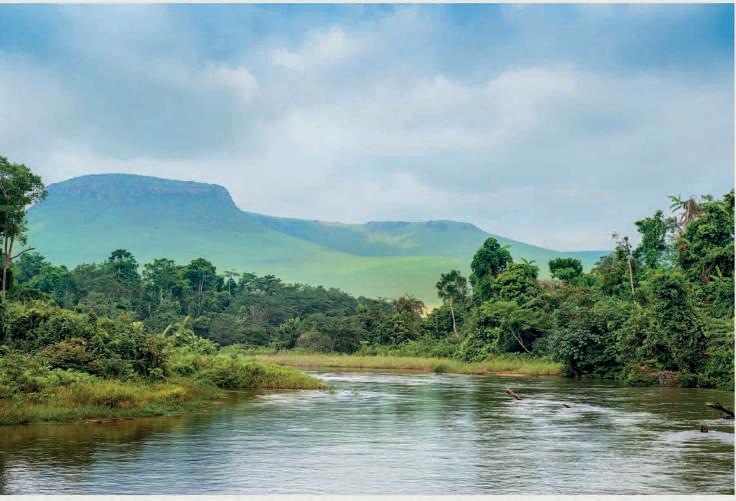
development of tourism infrastructure, for example; in particular the receptives, the equipment necessary for viewing animals in protected areas in general, and national parks in particular where ecotourism is practiced, the preferred tourism which best adapts to the potential of our country. The development of tourist sites such as the falls (Loufoulakari, Béla, Dimani), the waterfalls and the numerous caves. The discovery of the primary forests of Mayombe, Chaillu, North Congo through the practice of adventure tourism, vision and trekking. The construction of infrastructure and structures linked to the tourist offer (access roads, reception centers and other equipment). The digitalization of tourism activities (promotion, marketing, product marketing). The organization of tourist events such as fairs, exhibitions, symposiums, festivals, conferences, cultural and sporting events. I can also cite training in tourism professions through the creation of quality structures with a view to improving services in tourism establishments. And, finally, the development of conference tourism with the use, for example, of the international conference center of Kintélé, the Palais des congrès or the twin towers of M’Pila.

The richness of the fauna and flora has led the authorities of Congo, also a large forest country, to develop protected areas. Developing ecotourism is an ambition of the government so that this sector truly contributes to the national economy and job creation.

Congo has five national parks, several reserves and great ape sanctuaries. The latter cover the country from north to south and from east to west and constitute privileged places for observing the large equatorial fauna. In the Odzala-Kokoua Park, located in the north, you can see mainly forest buffaloes and elephants, monkeys – gorillas and chimpanzees in particular – and many varieties of antelopes: sitatungas, bushbucks, duikers, silvicapres .
In the north of the country, the Nouabalé-Ndoki National Park and the Lac Télé Community Reserve are also home to a significant population of forest elephants, gorillas, chimpanzees, forest lions, buffalo, panthers, and more. 300 species of birds and many other small mammals. In the Lésio-Louna/Léfini reserve, lowland gorillas, antelopes, bush pigs, hippos, etc. live in complete freedom. In the Kouilou department, the Conkouati Douli National Park, which extends from the ocean to the Mayombe Mountains,
3 to 4.5% GDP
10% OF GDP IN 6 YEARS
3.8 millions
HECTARES OF PROTECTED AREAS AND PARKS NATIONAL
16 PROTECTED AREAS
5 NATIONAL PARKS
11% OF THE NATIONAL TERRITORY
969 HOTEL ESTABLISHMENTS
is very rich in flora and fauna, notably forest elephants, chimpanzees and gorillas, is on the indicative list of UNESCO world heritage since June 12, 2008.
You can see all kinds of aquatic birds – fish eagles, herons, kingfishers – during the journey up the Congo, Oubangui, Alima, Niari and Sangha rivers, but also hippos (towards Mossaka) and crocodiles (towards Impfondo), more discreet. Migrating towards sustainable tourism is the objective of the Congolese government which concluded in December 2020 a financing agreement of 14 million dollars with the United States Agency for International Development (USAID) through the Congo Conservation Company (CCC) group. Nurturing great ambitions in the development of ecotourism considered as one of the strategic areas of diversification of the economy, CCC is already working in the conservation of biodiversity and the promotion of ecotourism in the protected areas of Odzala- Kokoua, in the Cuvette Ouest department, and in that of Nouabalé-Ndoki, in the Sangha. CCC’s new strategy consists of developing ecotourism in the Odzala and Nouabalé-Ndoki wildlife parks. The objective is to attract as many tourists as possible to Congo, with a view to making it a better tourist destination and a lever that can contribute to national economic dynamics.
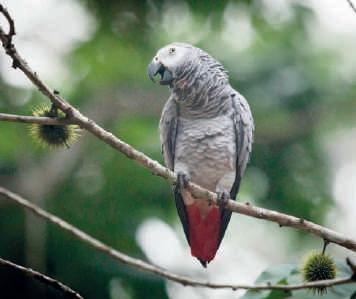

Concerning the integrated conservation project, with the communities, in Lake Télé, it involves promoting the management of peatland ecosystems and the promotion of ecotourism.
This project, validated by the United Nations Environment Program (UNEP), will be implemented over a period of five years with a budget of more than six million dollars. According to the latest World Bank report, ecotourism could provide a significant boost to job creation, rural development and service exports. Its development is based in particular on the improvement of regulations and the allocation of resources in favor of the protection of natural heritage, on the strengthening of regulatory and control bodies, and on the expansion of transport infrastructure and efforts of marketing.
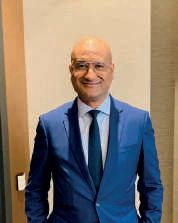
Interview with Driss Chafiq, General Director of the International Conference Center and the Grand Hôtel de Kintélé, a hotel establishment with 5-star facilities with a 1,500-seat convention center with a heliport facing the mythical Congo River.
Can you describe to us the assets that give rise to the national and international notoriety and reputation of the International Conference Center and the Grand Hôtel de Kintélé?
First of all, our location is one of our major assets. We are located opposite the mythical Congo River, offering an exceptional panoramic view which creates a unique atmosphere for our customers. This privileged location makes our establishment a place of choice for national and international travelers.
Next, our facilities are world class. The International Conference Center & Grand Hôtel de Kintélé is a 5-star establishment, which means that we offer the highest level of comfort and luxury to our guests. Our rooms are spacious and elegantly decorated, with modern amenities to meet the needs of our most discerning guests.
The 1,500-seat convention center is another major asset. It is equipped with the latest audiovisual technologies and can host large-scale events and international conferences. The Banquet Hall being modular, it can accommodate up to 1000 guests and is specially designed for a variety of festive celebrations and..., while our other meeting rooms are perfectly equipped to meet the needs of working groups. This versatility makes it an exceptional space, ideally suited to both business meetings and social events.
Finally, our hotel offers 200 rooms spread over 5 levels with 7 different types of rooms, which constitutes a unique advantage that few hotels offer in Brazzaville.
When it comes to our reputation, we have gained notoriety
both for our exceptional service and our qualified and dedicated staff providing an unforgettable customer experience. We pride ourselves on our warm hospitality and attention to special features.
What do you specifically bring to business customers?
We have the capacity to host large-scale events. Our establishment is specially designed to meet the needs of both national and international events, thanks to its configuration and the quality of its infrastructure. This allows us to offer an exceptional level of service and comfort to our customers.
The quality of our services is another distinctive element of the Grand Hôtel de Kintélé. We pay careful attention to details, placing emphasis on the satisfaction of our customers, some of whom come from abroad. We rigorously monitor our performance indicators in order to maintain high standards in all aspects of our establishment, whether in terms of quality of service, cleanliness, room comfort or even overall satisfaction.
The location of our hotel is also a major asset. Located in an exceptional natural environment, the Grand Hôtel de Kintélé offers our guests a peaceful and magnificent setting in which to relax and recharge their batteries. In addition, with the International Conference Center, participants benefit from easy access to the events and activities taking place there.


We pride ourselves on our dedicated and professional staff, trained to provide attentive, friendly and efficient service. Our team is constantly listening to the specific needs of our customers and makes it their mission to provide personalized assistance at all times.
How are you preparing to host the 3 Forest Basins Summit?
Hosting a large-scale event such as the 3 Forest Basins Summit is a crucial step in ensuring the success of the event, obviously requiring careful planning and effective coordination. To ensure every aspect is carefully considered, we work closely with summit organizers to deepen our understanding of their
specific needs, in terms of logistics spaces and services. We carry out a planned, careful check of our conference facilities, accommodation spaces and audiovisual equipment to ensure that they are in perfect working order, of course with the participation of both state and private partners. Also, with our chefs, our catering teams work there to concoct personalized menus, perfectly adapted to the requirements and preferences of participants, we also pay particular attention to dietary restrictions and specific diets. We attach great importance to environmental sustainability, and therefore we have implemented eco-responsible practices, such as waste management, and other healthy practices.
Tourism is now at the center of Congo’s development ambitions formalized by President Denis Sassou Nguesso. Congo wishes to benefit from the support of investors in this sector which has become strategic with the objective of reaching 10% of GDP within 6 years.
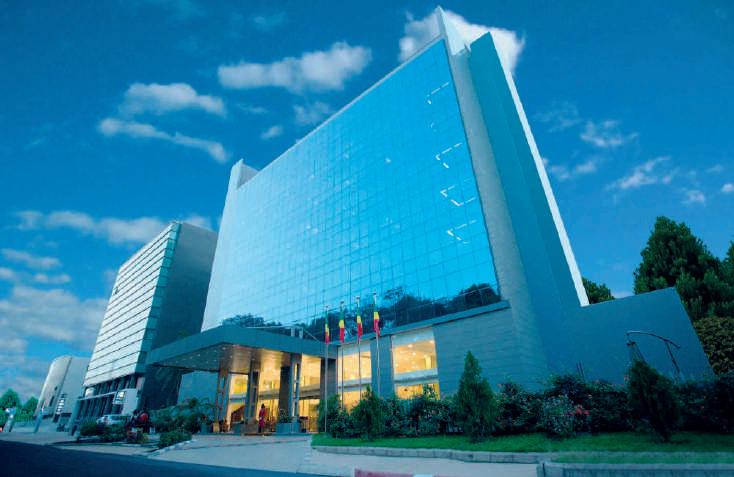
To move the Congolese economy away from all-oil, the Congolese government has included tourism among the six pillars of the National Development Plan (NDP, 2022-2026), along with agriculture and even digital technology. Tourism serves as a vector to accelerate the growth of other sectors such as transport, hotels and crafts.
Serving as a transshipment point in the Central Africa sub-region, the port of Pointe-Noire welcomed its very first cruise ship at the beginning of April 2023 carrying
150 tourists of various nationalities. Since obtaining its concession in 2009, the French group Bolloré has provided significant financing for its modernization. The port can accommodate cargo ships 300 meters long carrying up to 15,000 containers. The port of Pointe-Noire is the ocean gateway to Central Africa. It is the largest port in Central Africa but from a tourist point of view, much remains to be done.
The hotel offering has been considerably enriched and diversified. In Brazzaville, Le Grand hôtel de Kintélé is a
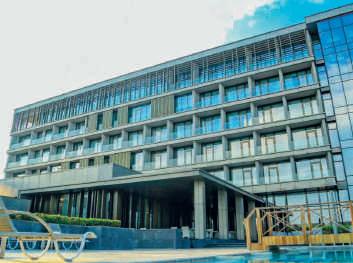
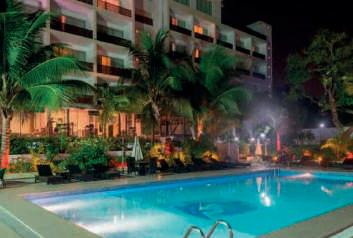
5-star establishment which is part of the International Conference Center located on the northern exit of the capital. Grand Lancaster, the Radisson Blu, the Olympic Palace, the Ramada or Mikhael’s offer the level of comfort required by businessmen and have sufficiently spacious meeting rooms where several dozen people from Africa can meet, from Europe, the United States or Asia. PointeNoire, the country’s second city, is not left out in terms of hotels and conference rooms whose acoustic and security conditions allow the smooth running of business meetings.
Ollombo, with its magnificent Pefaco Hotel Alima Palace also offers all conditions for business and conference tourism.
Located in the Mpila district, on the banks of the Congo River, this shopping center, the result of a joint venture with China, is made up of two twin towers of thirty floors each for a total cost of 174 billion FCFA (289 million dollars). ).
The first tower will house a five-star hotel with a capacity of 349 rooms including 20 presidential suites, conference and communication rooms and other amenities meeting the standards set in this area. The second will essentially consist of offices housing public and private services, and whose administrative concentration should impact the business sector and contribute to improving the competitiveness of the national economy through the facilitation of foreign trade procedures.

Founded in 1951 by Frenchman Pierre Lods, the Poto-Poto painting school has trained several thousand artists, some of whom are internationally renowned. It constitutes an important legacy of Congolese heritage.

Built at the foot of a baobab tree, the Poto-Poto painting school is bordered by other trees which protect the building like a bird’s nest. The school counts among its alumni painters of international reputation such as Marcel Gotène, François Thango, François Iloki, Philippe Ouassa, Jacques Zigoma, André M’Bon and Michel Hengo. Some are based abroad. Under the influence of Félix Ossali, Lods’ first student, the Miké style, which means “small” in Lingala, developed. Composed of small figures with schematic and slender shapes, it is reminiscent of the cave paintings of Tassili. The Miké style was fashionable
between 1950 and 1954. This easily recognizable style is still the signature of the school today. It will be copied throughout Africa.
The recognition of the school quickly goes beyond the borders of Congo. The first group exhibition took place in 1952 at the Palmes gallery in Paris. The consecration took place in 1955-1956 during the exhibition at the MOMA in New York. It was confirmed in 1958, when several members represented the Poto-Poto school at the Universal Exhibition in Brussels.
Today, the second generation of painters from the Poto-Poto


School fully embraces its heritage, oscillating from African tradition towards universal modernity. No longer limiting themselves to a production of “mikés” or to subjects treated in flat areas, generally surrounded in black in the manner of their elders, or even to ritual themes, they embarked on productions of a more naturalist, impressionist or abstract. Their works always bear the acronym PPP: Peintre de Poto-Poto. With each sale, 30% automatically returns to

a collective fund to ensure the proper functioning of the School... Among these artists are Pierre Claver N’Gampio, Sylvestre Mangouandza, Jacques Iloki, Gerly Mpo, Antoine Sitta, Adam Opou, Serge Dezon, Laeticia Mahoungou, Thierry Bongoualenga, René Bokoulemba, Romain Sylvère Mayoulou, Vanessa Agnagna, Albin Massa, Aris Dihoulou, etc.
In 2002, the school received the UNESCO Picasso medal. In 2014, the Georges Pompidou – Beaubourg national center of art and culture in Paris exhibited the masterpieces of Marcel Gotene, Nicolas Ondongo and Jacques Zigoma as part of the exhibition “From a shore to the other “. The school now receives a grant from UNESCO and Perfect Mbon, the school director, will set up a virtual gallery to allow artists to sell their works around the world.
70 years already since written Congolese literature asserted itself and extended beyond borders through the genius of its talented writers. The Congo stands out for its singularity within the literary space of Frenchspeaking Africa. Indeed, a country of modest size, it nevertheless constitutes one of the most important breeding grounds for French-speaking African writers. Its large number of authors, their creative effervescence expressed through the different genres of the field of
modern writing, novel, poetry, theater, short story, testify to the existence of a true national literature with Henri Lopes, Sony Labou Tansi, Julien Mabiala Bissila, Emmanuel Dongala, André Yaba, Aimé Éyengué, Bertrand Nguyen Matoko and many others... In this rich picture, Alain Mabanckou constitutes today one of the major authors of contemporary Congolese literature. He is the first writer to occupy the international chair of artistic creation at the Collège de France.
Thus, on the basis of well-studied, well-matured, well-selected projects planned as part of the 2022 – 2026 National Development Plan, I urge the government to mobilize reliable publicprivate partnerships and adequate financing, with a view to continuing our march towards development.
Extract from the message on the state of the Nation from the Head of State, Denis Sassou Nguesso, to the parliament meeting in congress on November 28, 2022.
A multitude of major projects have seen the light of day, including construction work on the Pointe-Noire SEZ. Investments relate in particular to the construction, subcontracting and assistance of hydroelectric or gas power plants, and the transport and distribution of electricity.

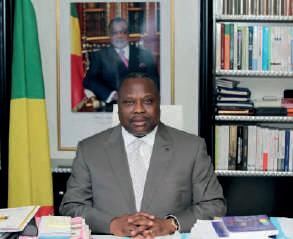
Interview with Jean-Jacques Bouya, Minister of State, Minister of Territorial Planning, Infrastructure and Road Maintenance since May 15, 2021. He previously held the responsibilities of: Advisor to transport and equipment of the Head of State, General Delegate for major works, Minister at the Presidency of the Republic, responsible for territorial planning and the general delegation for major works and Minister of planning, territorial equipment and major works.
Regarding road maintenance and bridge construction, what projects are underway?
At the start of my remarks, I would like to express my gratitude for the opportunity you are giving me to discuss with you on issues that directly affect my ministerial department. The Government of the Republic has always been concerned with the development of infrastructure with the aim of creating conditions conducive to inclusive economic diversification and the modernization of the country. The availability of efficient economic infrastructure constitutes one of the essential prerequisites for the success of any action aimed at improving the living conditions of populations and reducing poverty. It is in this sense that the World Bank emphasized in 1994 that “infrastructure is the wheel of economic activity, and its failure in poor countries delays their economic take-off”. This is why, for more than two decades, the President of the Republic has been engaged in a vast program to network the country in basic infrastructure. The major development projects carried out across the country and the accelerated municipalization rotating in the departments are part of this chapter.
Regarding road maintenance, we are carrying out, through the Road Fund, maintenance and rehabilitation works on the following roads:
- Maintenance of the Tandou Youmbi-Tchizalamou-Bioko road (52 km), in the Kouilou department;
- Rehabilitation of the Komono-Yaya-Mossendjo road, Niari and Lekoumou departments;
- Maintenance of the Madingou-Carrefour MissalaKimandou-Indo road, Lékoumou and Bouenza departments;
- Maintenance of the Loudima Poste-Kitaka-Mont-MbeloCarrefour road. Kitaka-Ecole de la Sowapo, department of Lekoumou;
- Rehabilitation of the Ngamandzambala-Kindamba road (49 km), in Pool;
-Treatment of erosion in Kinkala, in the Pool;
-Treatment of erosion of the Mpama, at PK27+300, Djambala-Lékana section, in the Plateaux;
- Rehabilitation of the Inkouelé-Otsini-Mbandza road and the Mapemé and Bomba ramps, in the Plateaux;
- Rehabilitation of the Ottui-Koumou-Okiené road (43 km), in the Plateaux;
- Rehabilitation of the Ombelé-Okonda-OlingossayoMondzeli road and Olingossayo-Pamba-Boua ramp (38.6 km), in the Cuvette;
- Rehabilitation of the Owando-Ollombo-Oyeké-Manga road (30 km), in the Cuvette;
- Rehabilitation of Issengué-Boya roads (22 km); Crossroads. Eboko-Carref. Aboua-Ongara-Mvoula-Itaniéré (17 km); Crossroads. Aboua-Village Ndoua (7 km), still in the Cuvette;
- Rehabilitation of the Ewo-Mbomo road, in the CuvetteOuest;
- Rehabilitation of the Ngbala-Bolozo road, in Sangha;
-Treatment of compressible zones on the Enyellé-Dongou road, in Likouala.
In addition to these interventions, we are treating the points

of degradation on the RN2 and the RN8. The heavily degraded Djambala-Lékana road section, for its part, is the subject of a rigid structure experiment.
In the bridge sector, twelve bridges are under construction for some and under rehabilitation for others. In addition to these large bridges, there is the bridge over the Louwala river in Bouenza; the bridge over the Ngoko, in the Cuvette Ouest department, the bridge over the Louvila river in Niar; the bridge over the Mpoukou, over the Foula and Lissengué rivers, in the Lékoumou; the bridge over the Ndouo River, in Pool; the bridges over the Loko and Megné rivers, in the basin.
In the Republic of Congo, territorial planning is underpinned by Law No. 43-2014 of October 10, 2014 on guidance for territorial planning and development. Due to the multisectoral and multi-actor nature of territorial planning, this law establishes consultation bodies on territorial planning policy which are intended to reach concerted decisions on the development of the territory. This is to guarantee the consistency of human interventions at different levels. These organs are:
- the National Council for Territorial Planning and Development, chaired by the President of the Republic, Head of State, which aims to set general guidelines for the development of the territory;
- the Interministerial Committee for Territorial Planning
and Development, Chaired by the Prime Minister, Head of Government, which aims to coordinate the development and implementation of sectoral policies, harmonize planning and equipment programs of the territory, and ensure the necessary arbitrations;
- the departmental and municipal land use planning commissions, chaired by the departmental prefects, which are intended to ensure the coherence of land development projects at local level. To date, the government’s priority consists of:
- the operationalization of these consultation bodies, which are already in place; for example, the inaugural session of the permanent technical secretariat of the interministerial committee for territorial planning and development, which marks the effective launch of the activities of the latter which was held from August 7 to 10, 2023;
- the development and/or updating of multi-sector spatial planning documents for activities (national land use plan French acronym SNAT), departmental land use plans (French acronym SDAT), national land use plan (French acronym PNAT), land use planning code with a view to optimal development of the territory.
All of these priority actions will be answered with the imminent implementation of the sustainable land use program (French acronym PUDT), the result of the Letter of Intent signed in 2019 between Congo and the Central African Forest Initiative (CAFI).
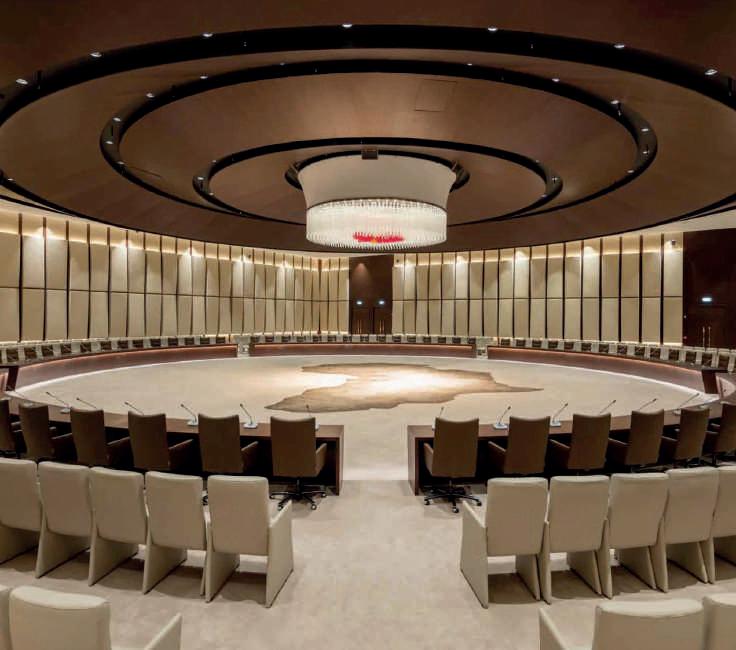
You are a professional airplane pilot and everyone knows your passion for scientific discoveries. Where is the Brazzaville Aircraft Maintenance Center project?
The project to build the aeronautical maintenance center is an old project that we have been pursuing for several years as part of economic cooperation between the Republic of Congo and the People’s Republic of China. An agreement was signed by the two States for the implementation of the project as a donation. The work will consist of construction over an area of 85,095 m2:
- a maintenance hangar with an area of 4991.15 m2 which can accommodate two aircraft;
- adjacent auxiliary buildings on the left side and the rear part with an area of 7667.49 m2;
- a tarmac and an aeronautical roadway for towing aircraft with a right-of-way of 25 meters;
- parking areas that can accommodate 68 cars;
- technical premises, gatehouses as well as exterior facilities,
Roads and Miscellaneous Networks (French acronym VRD).
The company and the control mission are already known. These are the constructor China Road Bridge and Corporation and the consortium International Engineering Corporation (CRBC) and Beijing China Enterprise Construction and Development Supervision Consulting. You understand that this is a project that exists and its execution is imminent.
In Congo, the network requires maintenance and rehabilitation work on asphalt or earth roads. The public establishment in charge of this will be modernized for greater efficiency.
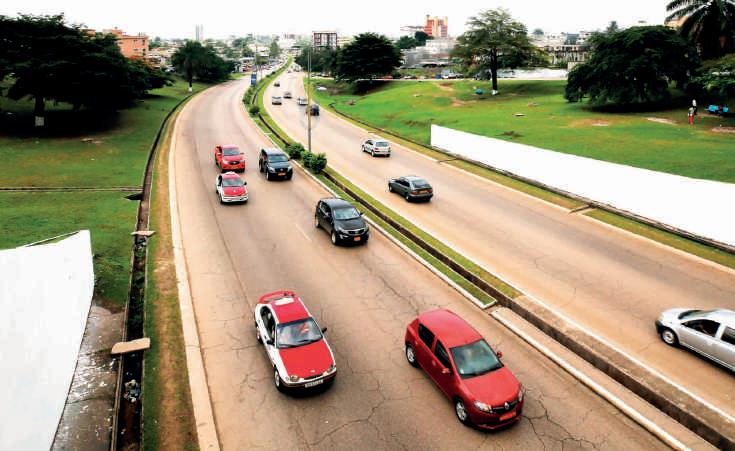
In the priorities for the year 2023, the ministry has the urgent need to modernize the Road Fund, with the aim of making it a structure worthy of responding to the many challenges concerning road maintenance. The President of the Republic, Denis Sassou Nguesso, instructed the Government, during the Council of Ministers on February 1, 2023, to carry out the maintenance of agricultural and rural roads, absolutely essential communication routes within the country. To do this, the Government will provide additional financial assistance from the Road Fund. This public body with legal personality is responsible for financing national road heritage protection programs, road prevention and safety, maintenance of the road network, as well as rehabilitation and development operations. roads. It was also decided to rehabilitate the Enyellé-Impfondo road in the Likouala department.
The fight against poverty among the Congolese population involves restoring the transport infrastructure necessary for socio-economic recovery and facilitating access to markets. This decision by the President of the Republic linked to the improvement of rural roads will help farmers to ship their goods and facilitate the development of industries such as tourism and agriculture.
The government also intends to undertake, in 2023, work to rehabilitate urban roads and fight against erosion in Brazzaville and Pointe-Noire. The objective is to improve urban traffic plagued by erosion and potholes. The Ministry of Regional Planning, Infrastructure and Road Maintenance also wishes to improve its internal performance and clean up the public procurement process.
Congo is banking on public-private partnerships (PPPs) to finance basic infrastructure and support the diversification of its economy.

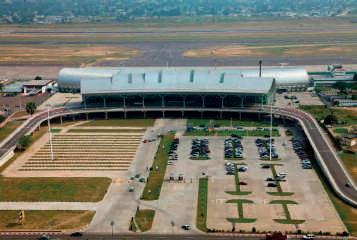
For many years, the Congo financed its infrastructure with its own funds, which represented a burden on public finances, materialized by an increase in debt and sometimes poorly calibrated projects.
The Congolese Head of State, Denis Sassou Nguesso, promulgated a law on January 12, 2023 which establishes the procedures and modalities allowing private actors to undertake business with the State. The result of indepth reflection on public-private partnership contracts, this law also presents itself as an important tool for the Congolese state to finance development with the contribution of private actors. These partnerships will be intended to finance the infrastructure planned in the
NDP, the National Development Plan 2022-2026. The five-year plan plans to raise 8,000 billion FCFA francs over 4 years, including nearly 6,600 billion CFA francs (around 10 billion euros) through PPPs. The law relating to PPP contracts is a real ambition to create dynamism around private investments to develop large-scale projects which aim to contribute to the development of the Republic of Congo. Its promulgation is intrinsically linked to a government desire to deliver infrastructure and other quality economic projects for the Congolese people.
The law on the public-private partnership contract was initiated by the Minister of International Cooperation and the Promotion of Public-Private Partnership. Through the “Congo, Land of Opportunities” program, it calls on private partners to invest in Congo in the areas of agriculture, tourism, special economic zones, forests and other services.
This law provides for a National Public-Private Partnership Committee headed by the Prime Minister which will decide, based on the priorities of the National Development Plan, the projects which will be the subject of contracts with economic operators. A Technical Committee, chaired by the Minister in charge of PublicPrivate Partnerships, will validate the projects which will be transmitted to the National Public-Private Partnership Committee.
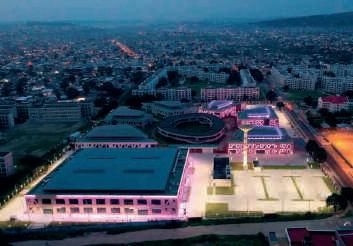
Faced with the growing evolution of populations since independence, the government is working, through a concerted and shared territorial project, to respond to the challenges of social cohesion, economic competitiveness and sustainable development.

In the Republic of Congo, the population today is around 5.9 million, two thirds of which are in urban areas, with a growth rate of 2.55%. This constant evolution leads to an urban imbalance attributed to the lack of prior development of urban centers which are experiencing irreversible aging due to the weakness of regulatory mechanisms, adapted financing and the deficit in decent housing at moderate cost.
The Durquap project, is a project of the government of the Republic of Congo which was financed and implemented jointly with the World Bank for a period of five years, from 2016 to 2021. In the amount of 120 million US dollars, including $40 million for the State, this project makes it possible to respond to certain challenges of urban development. It covers the field of urban development and operates under the supervision of the Ministry
of Planning, Territorial Equipment and Major Works. The objective of the project was on the one hand to improve the living environment of selected precarious neighborhoods of Pointe-Noire and Brazzaville and to allow the population to have access to infrastructure and decent basic services and on the other hand to strengthen the management capacities of national and local authorities.
In May 2023, the Republic of Congo adopted Local Urban Planning Plans (French acronym PLU), with a view to regulating the subdivision of its two main cities - Pointe-Noire and Brazzaville - which are facing several urbanization problems.

Congo is in the midst of rebuilding its infrastructure. Which makes it a priority sector for investment and a wealth of business opportunities. The fields of construction and maintenance are placed at the top of the scale here and offer more than interesting investment possibilities.
While it is true that our country has a subsoil rich in mineral resources, the mining sector, excluding oil, only contributes 1% of GDP. By developing the solid mine, we will be able to ensure the relay of hydrocarbons whose stocks are dwindling and have additional financial resources, which can be allocated to financing our investments.
Extract from the message to the Nation from the Head of State, Denis Sassou Nguesso, on the occasion of the end of the year 2022 and the New Year 2023, December 31, 2022. .
The exploration of minerals such as iron, potash, phosphate, zinc, manganese, gold, silver and diamonds represents many business opportunities. Also, the dynamic mining sector, a player in economic diversification, is attracting more and more foreign investors.

Despite these many potentials, the mining sector remains under-explored and under-exploited. Also, the development of the mining industry is one of the pillars of the diversification of the Congolese economy.

The mining potential is under-explored and under-exploited even though it is quantified in particular at 25 billion tonnes of iron reserves, 3.2 billion tonnes of potash reserves, 2.2 million tonnes of copper reserves and 531 million tonnes of phosphate reserves.
The country’s current major exports include refined copper, cobalt, gold and tin ore. Refined copper leads exports, with over $2.5 billion in export figures, followed by gold with $58.6 million and diamonds with $3 million.
A gypsum deposit was discovered in the Bouenza department, in the south of the country. This precious ore is used for the valorization of limestone present in abundance in the country, because it is itself used as an input in the manufacture of cement.
The mining sector is also partly based on the production of iron ore, phosphate and potash. However, these activities remain largely underdeveloped, due on the one hand to their location often far from urban centers and on the other hand to their reduced access to electricity. However, energy being essential for the extraction and refining process of these ores, the supply of electricity then becomes non-negotiable. Created in 2010, the Geological and Mining Research
25 billion TONS OF IRON RESERVES
3.2 billion
TONS OF POTASH RESERVE
2.2 million TONS OF COPPER RESERVES
531 million
TONS OF PHOSPHATE RESERVES
Center (French acronym CRGM) is part of the government’s strategic objective to develop Congo’s mining sector. The Center for Geological and Mining Research (French acronym CRGM) is a center of excellence in geological studies and mining in Central Africa. His efforts are accompanied by extensive research to accurately establish the geology and stratigraphy of the country. The CRGM is placed under the supervision of the Ministry of Mines.
Given the considerable development potential of local subsoil resources, the mining industry could play a decisive role in achieving emergence objectives.
The revitalization of the practice of public private partnerships (PPP) should promote the diversification of a Congolese economy that has remained dependent for too long on oil revenue alone. In particular, it could give a boost to the development of the country’s mining potential. The Congolese subsoil has a potential of several billion tonnes of iron reserves, including 517 million for the mega-deposit of Mount Nabemba alone and significant copper deposits, the exploitation of which requires heavy investments, now made possible by the new law of December 30, 2022 on PPPs.
The Congo Mining Code, finalized in 2005, establishes an attractive regulatory framework for companies wishing to carry out mining operations in the country. The Code proposes four types of mining titles, namely prospecting authorization; the research permit; industrial exploitation authorization; and the operating license. The Congolese government therefore provides both adequate infrastructure and an attractive regulatory framework for regional and international investors wishing to invest there. For example, Sintoukola potash has the potential to transform Congo’s mining sector by participating in the diversification of the Congolese economy. The Sintoukola district is a globally important potash basin in the Republic of Congo, with very high-grade, shallow-water deposits located close to the coast. According to the feasibility study dating from 2019, the project can generate annual revenues of $773 million. Supported by the public fund of Oman and the Chilean SQM, the British company Kore Potash Plc, focused on the development of Congolese phosphates and its Kola mine, signed a contract in June 2022 with its new partner, the Chinese company works Sepco, a subsidiary of PowerChina, for the construction of Kola.
The first polymetals factory was inaugurated in 2019 in the Bouenza region, in the south of the country. Coming from Chinese capital, it produces 20,000 tonnes of copper per year, mainly intended for export. In the near future, this plant will also produce zinc and lead.
Two agreements for the exploitation of the Avima iron deposit, Badondo and Nabemba, were signed in March 2021, between the government and the mining company Sangha Mining Development. The export perspective is planned for 2023 for an annual production of more than 100 million tonnes of iron ore. The mining company is also expected to build related infrastructure, a SanghaKouilou railway line, an ore port and energy facilities. The authorities of Congo-Brazzaville are planning the construction of a 1,000 km North-South railway network to facilitate the evacuation of iron ore production via the ore port of Pointe-Noire.
The government of the Republic of Congo decided in January 2023 to suspend the artisanal exploitation of polymetals throughout the national territory. This measure aims to secure the investments of the Congolese Research and Mining Company (French acronym SOREMI), whose mining perimeter in the south of the country is invaded by artisanal miners. These artisanal miners, including foreign nationals, mine illegally on SOREMI sites. SOREMI operates in the Mfouati district, in the Bouenza department (in the south of the country), where it mines polymetals, namely zinc, copper and lead
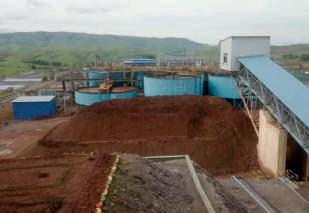
All mining companies are asked to build, with stakeholders, corporate social responsibility (CSR) programs.

Companies in the mining sector are thus called upon to refer to the management approach that effectively integrates economic, environmental and social issues into operations, aimed at creating long-term benefits for stakeholders and ensuring support, cooperation and trust of the local communities in which the company operates. According to the United Nations Environment Program, “a mining project that is developed, operated and closed with ecological and social acceptability could be considered to contribute to sustainable development.” Sustainable development thus seeks to reconcile economic and social progress with the preservation of the environment considered as a heritage to be passed on to future generations.
To regulate investment in the mining sector, the Republic of Congo adopted a mining code in April 2005. This mining code puts in place attractive conditions and establishes a clear regime regarding agreements for mining exploration and exploitation. Book 2 of the mining code in its articles 102 and following, defines the specific
rights and obligations relating to mining operations, industrial safety, hygiene, environmental preservation and administrative surveillance. Congo’s sustainable development policy generates significant inequalities between, on the one hand, powerful firms, and on the other hand, populations and local actors poorly prepared to integrate sustainable development as an objective in itself.
The government encourages private investment within the framework of the various legislative tools put in place, it plays a role in monitoring and controlling mining activities, within a clear, transparent and nondiscriminatory framework. These objectives are also affirmed in the legislative texts which establish the principle of guaranteeing a balance between the development of productive activities and environmental management, the essential role of which is to guarantee the stability of production systems. Companies in the mining sector are therefore called upon to integrate these concerns into their daily activities.
The Mining Code guarantees tax, customs, financial and exchange control conditions during the validity period of mining titles. In addition, during the same period, holders of these titles are eligible for new, more advantageous conditions.
The Mining Code applies to prospecting, research, exploitation, possession, circulation and transformation of mineral or fossil substances throughout the national territory. Hydrocarbons are excluded from the scope of the Mining Code. Apart from the law establishing the Mining Code and the aforementioned texts, other texts govern mining activities in Congo. These include Law No. 003/91 of April 23, 1991 on environmental protection and Law No. 6-2003 of January 18, 2003 relating to the investment charter. The mineral or fossil substances contained in the soil and subsoil of the Republic of Congo constitute the national mining heritage. They constitute the property of the State, in accordance with the Constitution of January 20, 2002. However, the exploitation of these substances is essentially carried out by foreign private companies to which the State entrusts the right to conduct one or more mining operations on the mineral or fossil substances contained in the soil and subsoil. Mining is thus open to free enterprise. Furthermore, mines or deposits of mineral substances discovered by public companies on their behalf can be exploited either directly, or under interested management or by any other method, in particular in association with private companies or other public companies. Any legal or natural person wishing to carry out mining activities must obtain the corresponding titles. To do this, it must present the technical and financial capacities necessary for the proper execution of mining operations. The Mining Code organizes industrial mining activity into three phases corresponding to four main types of mining titles: prospecting authorization, research permit, industrial exploitation authorization and exploitation permit.


The mining sector is attracting a growing number of investors. The Mining Code reduced the State’s share to 10% compared to 35% in past codes. The tax and customs provisions and the investment charter allow investors to operate with complete confidence in the country. The mining royalty varies from 2% to 7% depending on non-precious mineral substances and 5% for precious mineral substances.
Congo has a vital role to play in the global energy industry and OPEC plans to encourage it.
Mohammed Barkindo, Secretary General of the Organization of the Petroleum Producing Countries (OPEC) on August 23, 2021 in Brazzaville.
1st CAEMC crude oil producer, Congo wishes to develop natural gas. The oil sector offers investment opportunities, particularly in the areas of prospecting and the development of industrial or commercial units.


Interview with Bruno Jean Richard Itoua, Minister of Hydrocarbons since May 2021, who is in charge of the oil and gas sector in relation to the challenge of energy transition. In 2022, he assumed the rotating presidency of OPEC.
What are the challenges of the construction of the natural gas production and liquefaction megacenter, the start of which was given on April 25 by President Denis Sassou Nguesso?
The project in question constitutes a significant economic step forward for the Republic of Congo, positioning itself in an LNG sector with strong overall growth. It is notable that the price of liquefied natural gas has increased tenfold in the space of two years. This development of natural gas is intended to stimulate the country’s economic growth by generating a new industrial group that is a source of income for the government. This initiative will also equip us to meet our internal energy requirements, by transforming gas into electricity. This electricity will be crucial to support sectors such as mining and forestry industries, and to expand the distribution of domestic gas, while gas could boost industries including those planned in special economic zones and particularly the production of fertilizers. In addition, this project will position the Republic of Congo among LNG exporting nations, a relatively small circle. More specifically, the schedule predicts that production will begin during the third quarter of 2023, with a projection of LNG export reaching more than three million annual tons (3 MTPY) by the end of 2025. The export modality is will be done via two floating natural gas liquefaction units, or LNG carriers, with respective capacities of 0.6 MTPY and 2.4 MTPY. It should be noted that this latest LNG carrier will enter operation in 2025. Alongside these actions, high seas development strategies will be deployed, targeting oil fields such as Minsala and Nkala. These sites will see drilling operations for new wells as well as the establishment of infrastructure dedicated to gas processing, liquefaction and storage.

Do you want to attract international investors, particularly in offshore operating activities?
The dependence of our economy on oil and gas, representing 70% of our income, highlights the vital importance of increasing investment in this sector. This is all the more crucial following the global

economic slowdown caused by the Covid-19 crisis. To date, we have managed to mobilize nearly ten billion US dollars for the Congolese oil industry. An increase in foreign direct investment is planned to stimulate the industrial ecosystem of the oil sector. The expected immediate benefits include job creation, in particular through the resumption of activities within oil service companies, as well as throughout the service chain linked to oil exploitation. With this in mind, we are working to develop a most attractive financial environment to maximize our oil production potential. Thus, investors wishing to establish themselves in Congo will discover promising oil assets. In collaboration with the State, they will be able to realize projects offering attractive financial returns.
What is the goal of the internal reform of the ministry for which you are responsible?
The structuring of a ministry is a reflection of the vision that we wish to establish, materialized by a strategy which takes into account the main levers with a view
to achieving the set objectives. Faced with the current energy context and the challenges associated with the valorization of our mining resources, it has become imperative to adopt more linear analysis, control and certification methods. As a result, an in-depth reform was necessary within the Ministry of Hydrocarbons. This reform aims to streamline the chain of command to meet the growing demands coming from the State. Furthermore, our mission includes the sustainable establishment of a center of expertise and knowledge in order to better control the chain of control. To do this, it seemed essential to us to redefine the organization of the Ministry of Hydrocarbons. Thus, we have structured the ministry around four General Directorates and an Inspection, namely:
- Upstream Oil General Management;
- Oil Downstream General Management;
- General Directorate of Gas;
- General Directorate of Economy and Audit and Trading;
- General inspection.

Interview with Serge Ngono Mbole, Managing Director of X-OIL Congo, operator of the oil sector in the Republic of Congo since 2002, whose activities are the distribution and marketing of petroleum products.
What is your development strategy?
Our development strategy is based on a triptych composed of:
- Bringing our points of sale closer to the most distant customers. In accordance with this proximity policy, we have established a road map to significantly expand our distribution network in the short term, not only in urban areas but also in remote locations, poorly served because they are difficult to access.
- Development of the diversification offer with a focus on fast food. Our points of sale must once again become friendly places where users can benefit from a memorable experience beyond the supply of fuel.
- Decarbonization based on the integration of the latest generation solar technology in our customer offerings, and for the operation of our service stations.
What is the volume as a percentage of turnover of your industrial customers?
The percentage of industrial customers is 25%. It is booming and we believe we have forecasts of closing at 35% by the end of 2023, counting on the ENI gas projects and the Congo Industrial Platforms.
How does your concern for environmental performance translate?
This translates through different axes. First of all, our company has a Quality, Hygiene, Safety and Environment department (ensigleQHSE), which has very recently evolved to become a QHSE & Sustainable Development
Department. The objective of this change is to integrate aspects relating to Social and Environmental Responsibility (CSR) into the company’s activities, while ensuring the impact of our business on biodiversity. As part of this new momentum, we are putting in place performance indicators allowing us to evaluate ourselves against our objectives, for example:
- A 5% reduction in the number of kilometers traveled per year, thus contributing to the reduction of gas emissions from our vehicles.
- Reducing electricity consumption by 2% per year, for example by encouraging staff to adopt simple gestures and habits such as turning off devices at the end of the hour, and turning on the lights when they leave a room , to better manage the use of air conditioners (not leaving them on all day), etc.
- The establishment of a recycling system at all sites by separating waste so that it is collected by a partner approved by the State, and destroyed and/or recycled. This process will allow us to know the tonnage of waste recycled per year, and to make the necessary adjustments.
- The promotion of clean energies such as solar energy, our ambition being to increase the number of sites powered by solar energy by 10% per year, until reaching 100% within 7 years.
The hydrocarbon sector plays a predominant role in the economy with subcontracting activities and related services. 2023, a pivotal year in the field of fossil fuels with the launch of numerous projects whose objective is to bring Congo to economic maturity.

Congo Brazzaville is a market of 5.7 million inhabitants, ranked 3rd among oil-producing countries in sub-Saharan Africa. With a production of 340,000 barrels/day, oil represents 2/3 of state revenue. Thus, the structure of the Congolese economy has generally not changed over the last fifteen years. It is mainly based on the hydrocarbon sector, which represents approximately 42% of GDP, 80% of exports and 60% of domestic revenue. Despite its preponderant role in the country’s economy and industrial fabric, the oil sector only employs 20% of the workforce.
More than thirty fields are in the exploitation phase with around ten multinationals operating in the oil fields. In its latest report the World Bank emphasizes that if the Republic of Congo wants to put itself on the path to longterm prosperity, it must diversify its economy so as to be less dependent on oil. With the recent volatility in oil prices, Congo wants to reduce its exposure to strong cyclical fluctuations in global commodity markets. Also, public authorities are committed to the ecological transition while ensuring better development of mature fields. Nearly 1.8 billion Euros of foreign direct investments
3rd RANK OF AFRICA’S OIL PRODUCERS SUB-SAHARAN
5th
SUB-SAHARAN AFRICA NATURAL GAS RESERVE
80% EXPORTS DUE TO HYDROCARBONS
42% GDP
2/3 STATE REVENUE
2.9 billion OF BARRELS (ASSESSED RESERVES)
0FLARING TOWARDS 2030
in the oil sector are expected by the public authorities thanks to significant future investments for the production of LNG, biofuel production projects (acacia, castor, etc. .) and exploration projects in the pre-salt, etc… In terms of hydrocarbons, Congo has two main challenges.
As part of the Gas Master Plan (GMP), one of the government’s priorities is to make effective the decision taken in 2007 to stop flaring. If it is not reused for the operation of the fields, the released gas will be connected according to the GMP options. It will be aggregated by an aggregator and then made available to potential users, in accordance with the GMP texts.
From the end of 2023, the first LNG cargoes should leave Pointe-Noire and the capacity on the 3 platforms will be tripled from next year. The main objective of the government is exports, then the internal market,
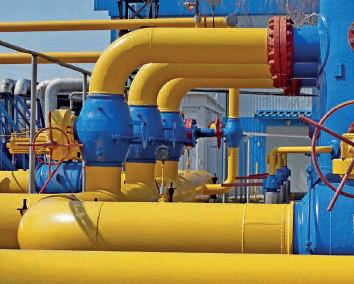
The first is to stop the decline and stabilize the production of liquid oil, the second concerns gas.
TotalEnergies, Perenco and Eni have an investment plan of 4 billion dollars in Congo. To meet demand, the country must move towards the energy mix to continue to finance its development, an energy mix in which fossil fuels will still have a place.
However, it is possible to produce clean fossil energy. Congo is currently developing a castor oil growing project with Eni to produce biofuels. For its part, TotalEnergies has launched a project which will allow the sequestration of 10 million tonnes of carbon, which is much more than what they emit in carbon. The Congo will once again be a carbon sink for the world without taking into account the advantage of peatlands
the special industrial zone (SEZ) and industries. (Is it good to say it like that, the main objective should be the domestic market after export) This gas will also be used for the production of electricity and should be used to initiate a petrochemical sector in favor of agriculture.
Furthermore, the State will reassess its gas potential. The current figures must, in fact, be updated, because, for a long time, companies active in Congo were looking for oil - liquid hydrocarbons - and not gas. There is also talk of adapting the gas code.
NTAM 1 NTAM 2
POKOLA CIB
KETA 1 KETA 2
Lékoumou
BORD-BORD KM4
FAUBOURG FOUCKS
REVOLUTION
LOANDJILI
MONGO KAMBA
MONGO MPOUKOU
CÔTE MONDAINE
OCC NET VISION
Pointe-Noire
VOUNGOU
MBOTA TROIS GLORIEUSES
NGOYO
GRAND HOTEL
KINGUEBE
GARE ROUTIERE
Driven by the constant quest for customer satisfaction, through a quality service resulting from its ability to understand the nature of the business, and the needs of its different customer segments, X-OILX-OIL Congo is your ideal partner for the supply, storage and use of fuels and lubricants.
Through a steadily growing network of over 30 service stations, dedicated teams to meet corporate clients' specific requirements, X-OIL Congo offers you a unique, customized service, whether you're a private individual, a public transport operator, an SME or a multinational.
Thanks to its expertise and know-how in the distribution of petroleum products, X-OIL Congo is a key player in the country's major industrial projects, thus firmly anchored in the sector after 21 years in business.
Brazzaville
MAKELEKELE
AV. INTENDANCE
AV. DES CHARS OUENZE
AV. DE LA PAIX / MOUNGALI
BACONGO HOTEL DE VILLE OUENZE
PATTE D'OIE
PLATEAU
MIKALOU
TRIBUNAL
JANE VIALLE
KINSOUNDI
MADIBOU I
MADIBOU II
KINTELE
MOUSSOSSO
The support for Republic of Congo’s Industrial Platforms through the exclusive supply of fuel and lubricants, X-OIL LUBRICANTS, for the setting up of Pointe-Noire, Oyo and Ouesso’ special economic zones; the involvement, for the same services, in "CORRIDOR 13" plan, which aims to open up the country's northern part, with a direct connection to Pointe-Noire’s Autonomous Port, and the consolidation of sub-regional economic integration with CAR and Chad; the commitment to HSE "Zero Incident” and no negative impact on the environment" initiative of ENI Congo, in regards to Marine XII liquefied natural gas development program; the move towards biometism by creating a QHSE & Sustainable Development department, and the implementation of a program to decarbonize activities by offering its customers the latest solar technology... are just some of the projects X-OIL Congo is committed to, and intends to actively work in order to meet major national and international challenges.
Congo-Brazzaville will acquire a natural gas production and liquefaction center for an investment of 5 billion dollars. The start of construction work was given on April 25, 2023 by President Denis Sassou Nguesso.

According to the latest World Bank report, the natural gas sector offers Congo an immediate opportunity to diversify its exports. Its proven natural gas reserves are the fifth largest in sub-Saharan Africa and remain largely untapped.
The ENI group’s liquefied natural gas project called Congo LNL aims to develop the gas resources of the Marine XII
permit located in the Congolese offshore. ENI’s partner in its project is the Société Nationale des Pétroles du Congo as well as the Lukoil company. This strategic project, with an investment of nearly $5 billion, will ultimately be able to produce three million tonnes per year (MTPY) of LNG by 2025. The project will export the first drops of LNG from the 3rd quarter of 2023 for an initial production of 0.6 MTPY.
This total paradigm shift will bring a new resource to state revenue. More specifically, the project corpus provides for 41 new wells, 7 new platforms, 2 floating LNG installations as well as the establishment of an offshore gas pretreatment plant.
In February 2022, the European Union granted the green label to natural gas, thus the Congo LNG project is a green project which is fully part of the dynamic of sustainable development and the energy transition. It will contribute to the diversification of the Congolese economy through the development of agriculture thanks to fertilizers, better distribution of domestic gas throughout the national territory making it possible to combat deforestation linked to the use of charcoal as firewood, to the development of electricity production and distribution on the national territory.
Several thousand direct and indirect jobs will be created. In addition, local communities will be able to have access to education thanks to the construction of a high school of excellence in Ollombo where nearly 10,000 students will benefit from high-quality training.


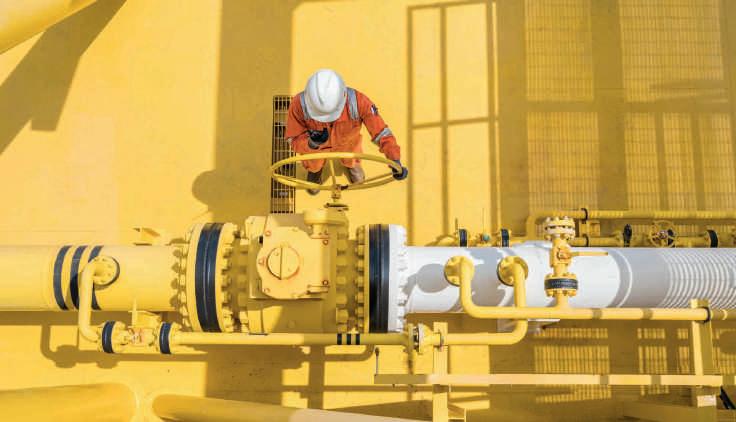
The government of Congo and the Italian energy group Eni signed a memorandum of understanding on October 4, 2021 in Brazzaville for the production of biofuels based on castor oil. The project must be implemented from a pilot phase with castor seedlings on more than 200 hectares, and an industrial phase which will see the development of crops on more than 150,000 hectares.
The project should generate 90,000 jobs by 2030, the Italian group assured the Congolese government. Eni registers the memorandum of understanding, signed for the development of the biofuels sector in
the Central African countries, in its commitments to support energy transition initiatives in fossil fuel producing countries

The context is favorable for business opportunities in these strategic markets (upstream oil, downstream oil, oil services). Nearly 1.8 billion euros of foreign direct investment in the oil sector is expected by the public authorities thanks to significant future investments for the production of LNG, biofuel production projects (acacia, castor, etc.) and exploration projects in the pre-salt, etc…

Concerning the supply of electricity, the increase in supply, the densification of the distribution network and the increase in the national coverage rate have benefited from the modernization work in progress.
Extract from the message to the Nation from the Head of State, Denis Sassou Nguesso, on the occasion of the end of the year 2022 and the New Year 2023, December 31, 2022.
With a hydroelectric potential estimated at more than 22,000 MW, Congo wants to achieve an electricity access rate of 50% by 2030. The government also wants to use wind and solar power. Many opportunities exist in the fields of energy and water, liberalized sectors.

Until now, electricity was supplied by gas plants and hydroelectric dams. Thanks to the energy mix, Congo plans to achieve an electricity access rate of 50% in urban and rural communities by 2030.
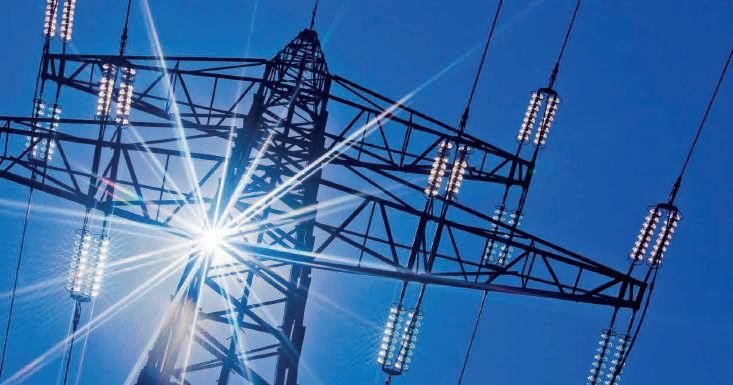
In terms of electrical energy production infrastructure, Congo can count on the gas power plants of Côte Matève (300 MW) and Djeno (50 MW) as well as thermal power plants for Brazzaville and the capitals of department.
The Imboulou hydroelectric plant (120 MW) as well as the Liouesso hydroelectric plant, with a capacity of 19 MW, were commissioned and that of Moukoukoulou (74 MW) was rehabilitated. With the commissioning in 2022 of the new PointeNoire gas turbine, with a capacity of 170 MW, the energy production of the Congo Power Plant reaches 484 MW and thus makes it possible to supply more than 2 million people. households. The overall electrical power of Congo is now 650 MW for an electrical demand of 600 MW. The increase in the capacity of the Congo Power Plant will undoubtedly contribute to improving energy supply and reducing power cuts in the country’s two main cities. In 2015, electricity transmission lines stretched over 1,500 kilometers while in
2002, these lines were only 700 kilometers long. The network has therefore more than doubled.
However, the electrification rate in rural areas remains very low, less than 10%, according to official sources, while in urban areas, the electrification rate is estimated at 47%. The electrification of rural communities is among the government’s priorities. To enable the completion of the Energy Boulevard, the government has set itself the challenge of resolving the issue of transport and distribution of available energy. In fact, energy is not consumed on production sites, it must be transported to transformation points and, once transformed, the energy must be distributed. However, the distribution network is extremely fragile. Secondary transformer stations such as medium and low voltage lines are obsolete. This situation explains the recurring load shedding. Another expected area of progress: the extension of energy transport to the peripheral areas of large cities.


Energie Electrique du Congo (E2C), Société Anonyme
Unipersonnelle, née des cendres de la Société Nationale d’Electricité, le 14 août 2018 a pour objet la gestion pour le compte de l’Etat, du patrimoine public de l’électricité. Elle est chargée entre autres, d’exploiter à titre transitoire comme opérateur, le service public de l’électricité. Ses principales missions sont la Production, le Transport, la Distribution et la Commercialisation de l’énergie électrique sur toute l’étendue du territoire National.
La puissance totale disponible est d’environ 600 MW. Environ 1600 km de lignes constituent le réseau national de transport d’énergie sous des tensions de 110 kV et 220 kV de Pointe-Noire à Owando avec 20 postes de transformation HT/THT et un centre de conduite informatisé doté d’un système EMS/SAADA.

Interview with Jean Bruno Danga Adou, General Director of Energie Electrique du Congo (E2C) whose mission is the production, transport, distribution and marketing of electrical energy throughout the national territory.
Can you give us an overview of the main advances in E2C with a view to electrifying the Congolese territory?
The main advances since the creation of Energie Électrique du Congo (E²C) include the construction of Medium Voltage lines in rural areas which has made it possible to connect many localities to the electricity network.
In the main urban areas, we have undertaken the densification of the network by the construction of Medium Voltage/Low Voltage (MV/LV) substations and Medium Voltage Feeders which have contributed to electrifying areas which were not yet connected to the electricity network. distribution. Added to this is the strengthening of the transformation capacity of two VHV substations in Brazzaville and PointeNoire. As a result, the number of subscription policies increased from 300,000 subscription policies at the end of 2018 to 440,000 policies in June 2023.
Businesses are very sensitive to the likelihood of electrical disruptions. Is the problem of load shedding resolved in Congo?
The issue of load shedding is addressed in three areas: production, transmission and distribution. In terms of production, installed power is greater than demand. However, when there is maintenance of the PointeNoire CEC groups, this results in a deficit which leads to load shedding.
In terms of transport, the question arises for Brazzaville essentially because the Pointe-Noire – Brazzaville electricity transmission line has limited capacity, taking into account
the current demand from Brazzaville. However, studies have been approved to increase capacity and the project will be launched by next year. In addition, we still have three main source stations where we have constraints, notably Loudima, Ngoyo and Mbouono. At this level, we are in the process of building a substation in Dolisie and will acquire 70 MVA transformers for Ngoyo (in Pointe-Noire) and Mbouono (in Brazzaville) to remedy these constraints.
In terms of distribution, the densification program that we have undertaken has made it possible to eradicate the phenomenon at this level and MV/LV substations are under construction in the various centers to prevent overloading of existing substations and no longer fall into this situation. phenomenon.
Overall, we can say that the load shedding issue is under control. However, as this also happens in the large network, we are not immune to widespread outages which are often poorly perceived, what we call ‘’Black-outs’’ which in principle only last 2 hours maximum and concerns the entire network.
Do you have a societal ambition in the face of environmental issues?
Energie Electrique du Congo (E²C SAU) intends to qualitatively improve its societal legitimacy as perceived by national and international public opinion. Thus, within the framework of Corporate Social Responsibility (CSR), E²C will assume a leading role in contributing to the sanitation of living spaces through the management and recovery of waste; financial assistance to deserving pupils and students capable of pursuing courses relevant to the development challenges of the Congo’s energy sector; promoting ecocitizen initiatives linked to energy savings and environmental protection.
Congo has a hydroelectric potential estimated at more than 22,000 MW. The government wants to increase the country’s energy capacity for the benefit of industrial development in accordance with its policy of economic diversification.

For hydroelectricity alone, the country has potential estimated at 22,000 megawatts, but barely 3% is exploited to date. Two new hydroelectric dams in Mourala and Nyanga in the south of the country will be built thanks to a PPP signed in May 2022 by the government with a consortium of two private companies. These two new hydroelectric dams will have a capacity of 331 megawatts. The first called Morala will produce 230 megawatts while the second called Nyanga is estimated at 101 megawatts. The agreement also includes the complete rehabilitation of the Liouesso hydroelectric dam, in the Sangha department, with a capacity of 19 megawatts, inaugurated in 2017 by the Head of State.
Selected in May 2021 to carry out the studies, construction and commissioning in BOT mode (Built Operate Transfer) of the Chollet dam (600 MW), the Chinese firm China Gezhouba Group saw its contract terminated by Cameroon and Congo who jointly lead the project. The government cites
as the reason for this decision the desire of the service provider China Gezhouba to carry out the project in EPC (Engineering, Procurement and Construction) mode and not in BOT mode as initially planned by the parties. A major integrative project in the CAEMC zone (Cameroon, Congo, Gabon, Chad, CAR and Equatorial Guinea), the Chollet hydroelectric dam was to be built on the Dja River, the river border between Cameroon and Congo. The entry into service of this energy infrastructure should make it possible to reduce the energy deficit of these two countries, but also those of neighboring countries such as the Central African Republic and Gabon.
Studies for the construction of the Sounda dam, which will be able to generate up to 1000 MW, have been launched. The project is progressing in the form of a BOT, within the framework of a concession contract with a Chinese company (China Roadwails Twenty) already awarded the contract.
The potential for renewable electrical energy is inestimable in Congo. These include hydroelectricity, biomass, wind power and solar energy.

The project on renewable energies to electrify Pointe-Noire and its surroundings is underway. Its implementation aims to fill the electricity deficit, particularly in localities where it is lacking. It will help to finally reduce load shedding and meet the legitimate expectations of a greater number of users. Inaugurated on May 22, 2023, the first phase - the thermal part of the
plant - of the hybrid thermal/solar power plant project in Impfondo, capital of the Likouala department, in the north-east of the country, has been delivered. The project, with a planned capacity of 3.4 MW, is being carried out by Produits de Construction de Brazzaville (PROCOB), a subsidiary of the Belgian company ABC Contracting and financed by the Congolese public treasury. The overall
cost of the work amounts to 18.5 billion FCFA (nearly 28 million euros) divided into two phases. The first, that of the construction of the emergency and backup thermal power plant with an installed capacity of 3,400 KW with associated medium voltage (MV) evacuation lines, represents a cost of 4.5 billion FCFA (6 millions of euros). Secondly, the cost of constructing the 6,000 KWC (peak kilowatt) module solar power plant to serve as the main power plant as well as the rehabilitation of the existing low and medium voltage networks and public lighting rises. at 14.8 billion FCFA (22 million euros). The power plant will be made up of 12,000 550 watt crystalline panels. Operation will be entrusted to the public operator E²C. The tidal turbine is being tested in Loubassa, in the district of Mbamou Island.
The Congo has also just carried out an ambitious project, with the creation of a solar panel assembly and production unit in Oyo in the Cuvette.

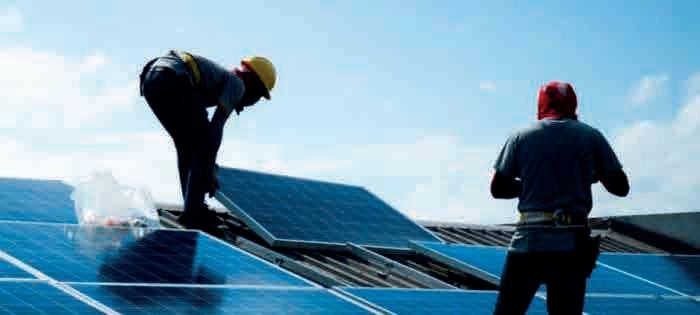
Essentially dependent on fossil fuels, Congo has a Center of Excellence for research on renewable energies, inaugurated on April 23, 2023 by President Denis Sassou Nguesso. Located in Oyo, 400 kilometers north of Brazzaville, this center was put into service to overcome multiple electricity problems and developing renewable energies is also a way of providing more energy to the population. Built on a plot of 10,000 square meters, it is the result of cooperation between Congo, the Italian oil group Eni and the United Nations Industrial Development Organization (UNIDO). The work on the Oyo center lasted five years and its cost is estimated at 24 million euros, or more than 15.7 billion CFA francs.
The ultimate goal of the center is not only to study
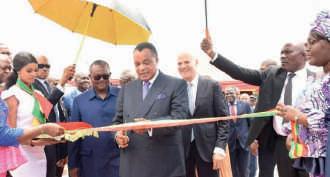
possibilities for energy diversification, but also to promote access to renewable energy. The Oyo Center will welcome researchers from Congo but also from other countries in Africa and elsewhere.
In the areas of energy for which demand is very strong and which have been liberalized, there are many opportunities. Investments relate not only to the construction, subcontracting and assistance of hydroelectric or gas power plants, but to the transport and distribution of electricity. It is also possible to invest in the creation of micro power plants based on solar or wind energy, or even based on biofuels.
The government wants to improve the rate of access to drinking water, which is currently not up to the hydrological potential of the country. 74% of the population has access to a source of safe water but this figure drops to 46% in rural areas.

In his social project, “Together let’s continue the march”, the President of the Republic, Denis Sassou Nguesso, placed emphasis on the provision of drinking water within the reach of all households. The investments made by the State, with the support of development partners, are oriented towards the development of a certain number of programs to guarantee the sustainability of the resource for the benefit of future generations.
Access to drinking water constitutes a health and social problem within Brazzaville itself.
Thanks to funding of 100 million euros (65.5 billion FCFA) from the French Development Agency (French acronym AFD), 30,000 connections were made and delivered in June 2023 in twelve peripheral districts of the capital, 580 km of pipes and 154 km of network of La Congolaise des eaux (LCDE) rehabilitated, a network remote management center created as well as the strengthening of the water stations of Djiri and Djoué, allowing the public service LCDE to improve its service and register new subscribers in these remote areas of Brazzaville.
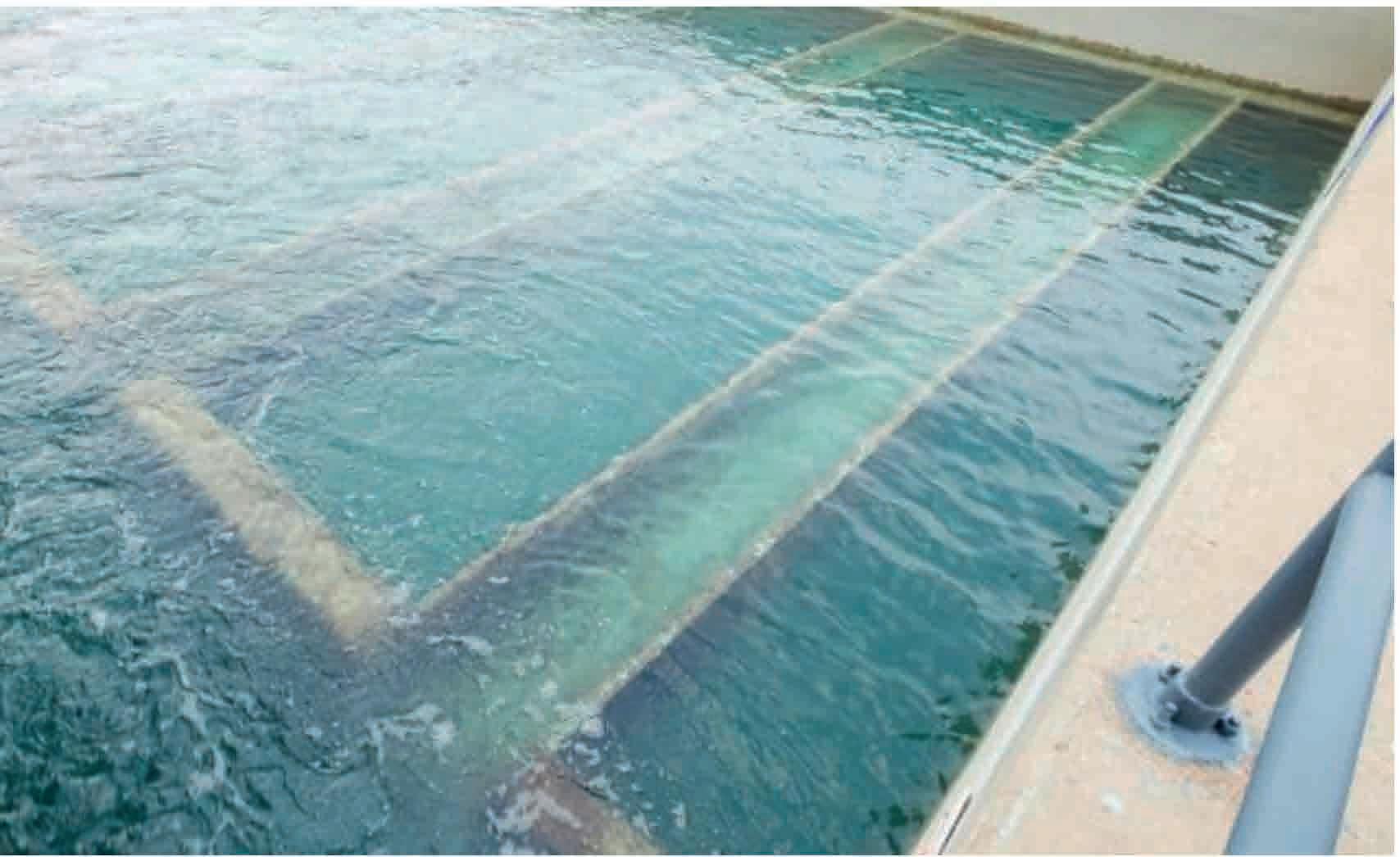
Regarding the Djoué water treatment plant, work was carried out on units A and B and the water catchment area along the river. As for the second factory, the installation of ram arresters and the repair of electrical cabinets were also carried out by the Project to extend to peripheral areas and strengthen the public drinking water service in Brazzaville (French acronym PEPS). At the Djiri abloc pots, there was work to renew the equipment and install new electric pumps. The water production capacity of the factories increased from 900 m3/h to 5000 m3 of reservoir.
In February 2023, an agreement for the financing of the Drinking Water Supply System (French acronym SPA) project was made between 3PRS SA and the IFC (World Bank Group). The capacity of the pumping and drinking water production installations of 10,950,000 m3/year (30,000 m3/day) will thus make it possible to strengthen the drinking water supply needs of the population of Pointe-Noire. The project promoter, 3PRS SA also obtained the concession from the town of Dolisie from the Loubomo River. The APD studies of the project based on the Aquabloc concept (drinking water production capacity of 15,000 m3/day) are validated.
Congo is among the countries with abundant and plentiful water resources, with approximately 1522 m3 of water per year.


Interview with Jean-Serge Sita, Managing Director of Hygiène Prodige Com International acronym HPCI-SARL, a company specializing in the various segments of industrial cleaning activities in Onshore and Offshore, sanitation, waste management (non-hazardous and dangerous) and the depollution of soil and water, headquartered in Pointe-Noire, in the Republic of Congo.
Can you describe the different services of HPCI-SARL to us?
We are able to offer various services:
- Skimming of oils
- Industrial cleaning
- Capacity cleaning
- Equipment maintenance, Equipment installation
- Blocking of pipes and diversion of effluents
- Removal of contaminated soils
- Provision of on and off-shore oil equipment
- Engineering.
We also carry out professional cleaning of offices and green spaces, the application of 3D (pest control, disinfection, rodent control) as well as environmental sanitation.
What do you bring to Congolese companies?
Being ISO 9001 certified, we provide companies with quality services in order to make their living or working environment healthy, their facilities functional while promoting environmental protection meeting their needs and also support in the implementation available with state-of-the-art equipment. For example, we supported CORAF (the Congolese refinery) in the maintenance of equipment allowing the processing of petroleum products.
How is HPCI-SARL committed to sustainable development?
Our Quality Health Safety Environment policy integrates the notion of sustainable development. This is why it is called the Quality Hygiene Safety Environment Sustainable Development policy (French acronym QHSE-DD), it materializes the importance of sustainable development within HPCI-Sarl.
Thus, in its implementation, we are committed to an ethical approach that is both economically profitable, socially fair, ecologically responsible and by operating at all levels of the company, involving employees and stakeholders in the best future of the company. We involve local residents in HPCI-Sarl activities, for example we work with the local communities of the Ngoyo town hall in Djéno.
We are developing a better waste management policy by raising awareness among our staff about waste sorting (French acronyms DIB, DIS, DEEE, DID).
We carry out awareness-raising actions on reducing energy consumption such as respecting the instructions on the measures to take before leaving the workplace regarding turning off the lights, checking the taps, turning off the air conditioning, etc.
With regard to human rights, in its deep aspiration to international influence, HPCI-Sarl is committed to respecting Human Rights in these terms: Working with respect for the dignity and fundamental rights of people . Evidence of adherence to principle anchored in values, policies and commitment to upholding international standards. We are committed to respecting our commitments regarding Human Rights. Therefore, we are committed to observing zero tolerance towards any violation of Human Rights. Thus encouraging, as we urge our customers, suppliers and other business partners, as well as others affected by our activities, to alert us in the event of potential human rights violations or suspicions of such violations.
In June 2023, the French Development Agency (French acronym AFD) announced that it was relaunching projects for which it would finance in the Republic of Congo. 150 billion FCFA have already been mobilized for this purpose. The first project concerns the drainage of rainwater in Brazzaville and Pointe-Noire, with a view to improving their resilience to the flooding phenomenon that they have suffered in recent years. The Congolese State is strongly committed to carrying out major infrastructure works already in place. In fact, entire neighborhoods lack a rainwater drainage system. The city of Brazzaville, for example, is crossed by natural collectors, such as the Tsiémé river, the Madoukou and Mfoa streams. But no adequate public sanitation system adequately ensures the evacuation of rainwater. The second project concerns the resilience of the towns of Owando and Nkayi, the first phase of which has been executed. The work to be carried out concerns the rehabilitation, extension of rainwater collection and management systems, as well as the fight against water erosion in these two cities.
The development of the Tsiémé River, in the 6th arrondissement of Brazzaville, Talangai is also among the projects that AFD is financing. The funds for its execution in order to improve the living conditions of the local population are already available and only the Congo’s share linked to the expropriation remains. France supports storm drainage and sanitation projects in Brazzaville and Pointe-Noire which directly benefit more than 500,000 people. Japan will also contribute to the sanitation of Pointe-Noire with a donation of road equipment corresponding to 830 million FCFA.
Another priority for Congo remains the completion of
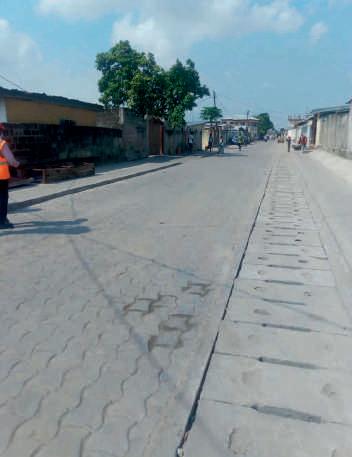
sanitation work at the Brazzaville University Hospital Center, financed under the C2D mechanism of Congo/ France cooperation.
Finally, in the face of unsanitary conditions, the “Brazzaville without waste” campaign has been launched. This sanitation campaign is being implemented in the capital of Congo by the Circle of Travel, Tourism and Environment Elites (French acronym CEVTE) and the citizen initiative Good Deeds Days.
The AfCFTA is expected to significantly increase traffic flows across all modes of transport: road, rail, maritime and air.
Vera Songwe, Under-Secretary-General of the UN and Executive Secretary of the ECA in Addis Ababa on February 9, 2022.
The Republic of Congo is continuing reforms in the land transport sector. Gateway to Central Africa, Pointe-Noire is the main deep-water port in the Gulf of Guinea. The Maya-Maya airport in Brazzaville is one of the most modern on the continent.

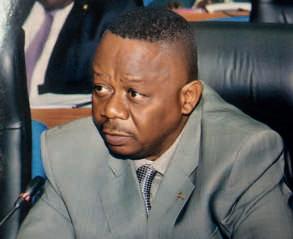
Interview with Honoré Sayi, Minister of Transport, Civil Aviation and Merchant Marine since September 27, 2022. He was previously appointed Minister of Energy and Hydraulics in May 2021.
What are the main axes of your 2024-2028 roadmap?
The main axes of our 2024-2028 roadmap are part of the materialization of the vision of the President of the Republic, Head of State, His Excellency Mr. Denis Sassou Nguesso, through his social project “Together let us pursue the “march” and are of course in symbiosis with the NDP 2022-2026.
For the road transport sub-sector, we are overhauling and digitalizing administrative acts. This will particularly involve the overhaul and classification of the driving license into two types: that intended for individuals and the professional license granted to drivers of passenger and heavy goods transport vehicles.
In the rail transport sub-sector, we are carrying out the rehabilitation of the track, structures and station buildings throughout the Congo rail network; repair of the long tunnel; strengthening rolling stock; the construction of a rolling stock servicing and maintenance workshop in Brazzaville; the reopening of training schools for railway professions. Regarding maritime transport, our main goal is the development of seaports and port wharves. We are building an ore port and continuing the redefinition and development of the national SOCOTRAM armament. At the same time, we are creating an international register of commercial and fishing vessels to make Congo a flag state and we are working to protect maritime spaces against all forms of pollution, piracy and crime at sea.
Finally, in the air transport sub-sector, an airport village will be created with international standard devices and we are proceeding with the operationalization of secondary airports, products of the various accelerated municipalizations. This is accompanied by the relaunch of the activities of the Ecair company and the Société
Nouvelle Air Congo; the creation of terminals intended for flights at the request of specific customers; the completion of the international airport certification process. We want to be open to air transport companies capable of ensuring our vocation as a sub-regional hub.
Through its geostrategic position and its international airports, Congo occupies an essential place in Central Africa. Do you want to make it an international hub? In aviation, a hub designates a platform or airport chosen by an airline to transit a significant portion of its passengers and goods. It is often used to connect segments of a local network.
The Congo has an ICAO certified international airport, this is the Maya-Maya airport in Brazzaville, the certificate of which was handed over on July 21, 2023 and published in the aeronautical information of Congo, on August 7, 2023, with aeronautical roadways, modern and futuristic terminal equipment and installations, without forgetting the presence around the airport of a significant number of very well-priced hotels, capable of accommodating a maximum number of transit passengers. The Congo can set up an international hub which will not suffer from any dysfunction, especially when we know that since 2014, the Government of the Republic of Congo is in the process of making large investments relating to the establishment of coverage and air security measures, the “open sky” policy and above all the clearly stated desire of the Head of State to make Brazzaville a hub of the sub-region. The government is currently implementing a very large project to build aircraft maintenance facilities at the Maya-Maya airport in Brazzaville. Airlines interested in this activity can concentrate, then dispatch their flights in
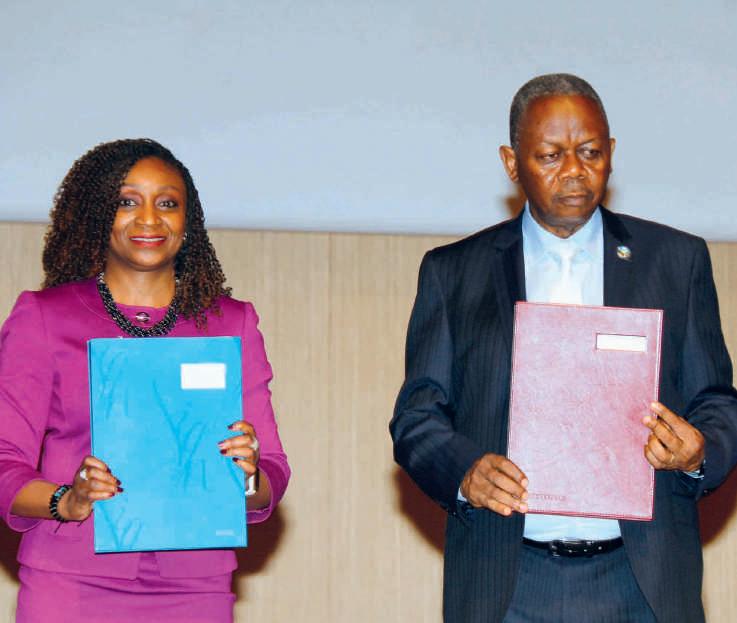
spokes and waves to offer a maximum of possible travel combinations and better fill their largest aircraft.
Brazzaville is currently connected to several cities: Paris, Libreville, Yaoundé, Lomé, Kinshasa, Luanda, Douala, Cotonou, Abidjan, Bamako, Dakar and Dubai. It is clear that the hub in Brazzaville will be a reality.
We have significant populations from West Africa who are based in Brazzaville but also in Kinshasa in the Democratic Republic of Congo. We can help these people move easily between the two Congos and their countries of origin using the Brazzaville hub.
What challenges do we face regarding rail transport?
The Congo Ocean Railway (French acronym CFCO) is the sole operator that operates the Congolese railway. The
CFCO is one of the first railways built in Africa. It has three sections with a metric gauge of 1,067m and an axle weight of 17 tonnes.
The road linking Pointe-Noire to Brazzaville, built between 1924 and 1934, 510 km long, has steep gradients and small radius curves, particularly in the Mayombe area. The new route in this same area, called CFCO realignment, built between 1976 and 1985, is 91 km long. The Mont-Bélo/ Mbinda section on the Gabon border, built between 1959 and 1962, is intended to transport manganese ore from Gabon to the port of Pointe-Noire. After the end of operation of this last line in September 1991 by COMILOG, it was handed over to the Congo-Ocean railway (French acronym CFCO) since 1993.
The Congolese rail network is degraded as a whole. Due to
the dilapidation of the railway, the average speed of train traffic increased from 15 to 25 km/h compared to 55 to 75 km originally. This state of affairs has significantly reduced its transport capacity, which is currently of the order of 0.7 million tonnes of goods compared to 2.5 million projected. The fleet of line locomotives is 43 machines. The current average monthly availability is 9 locomotives, while the optimal needs for a good supply to current demand are of the order of 26 line locomotives and at least 8 shunting locomotives. The fleet of commercial and service wagons is also experiencing a high degree of obsolescence. There were 893 in the fleet as of May 30, 2023, of which only 356 were in service.
The main challenges to be met consist of initiating the modernization and strengthening of the railway network through partnerships with private operators and reinstating the practical rules for upkeep and maintenance of the track and rolling stock.
The current state of degradation of the entire Congolese rail network requires significant investment for its rehabilitation. Studies undertaken recently have estimated investment needs of around 350 billion CFA francs. The rehabilitation of the Mont-Bélo/Mbinda line alone in all its components is estimated at: 260 billion FCFA.
However, the main line of the Congo-Ocean railway is an essential link for the transport of goods (products in containers, flour, rice and cement, fuels and gas, various essential products, logs and sawn wood, etc.) between the seaport of Pointe-Noire and the river port of Brazzaville. Its massification capacity allows it to remove nearly 15% of the traffic leaving and arriving at the Port of Pointe-Noire, or approximately 2,484,000 tonnes. This traffic volume can be optimized and increased if the railway is rehabilitated. The ex-Comilog line remains the main means of transporting iron ore from the Mayoko area in the Niari Department, to the port of Pointe-Noire. More than 6 million tonnes per year of ore are planned to be evacuated by rail.
Financing for the modernization of the Congolese rail network can be carried out within the framework of a public service delegation contract or in a public-private partnership (PPP) or even in BOOT (Build, Own, Operate & Transfer).
Does the development of transport in all its modes require the arrival of new private investors?
Transport development, as a whole, is mainly a matter of public policy. If within the framework of the 2018-2022 NDP, transport constituted one of the pillars, but that of
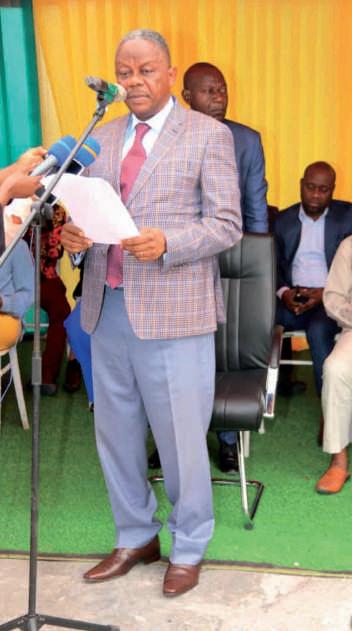
2022-2026, transport is a support for the implementation of the other pillars. However, in achieving the objectives of the NDP, of which transport development is part, the Government, due to the heavy investments to be made, cannot claim to evolve alone; it will always need the support of private operators, both Congolese and foreign. Such a perspective will be based on the organization of a Public-Private partnership by encouraging Foreign Direct Investment (FDI) with the support of the Ministry in charge of International Cooperation and Public-Private Partnership. Likewise, it is necessary to put in place project financing mechanisms, notably the strengthening of cooperation links with investment and development banks at the regional and international levels. The project to create the regional maritime development bank is an illustration of this.


Does the development of maritime transport also constitute a challenge for the Congo?
The maritime transport and merchant marine sub-sector remains one of the important links in the national economy which will have to meet the Government’s expectations in terms of diversification of the national economy.
The Government of the Republic of Congo has undertaken to put in place mechanisms aimed at making maritime
transport a growing, attractive, competitive sector that respects international maritime law through ocean governance in the service of the development of the maritime economy. , in particular and the national economy, in general.
This will involve focusing on the development of the autonomous port of Pointe-Noire (French acronym PAPN) which constitutes an essential platform for maritime transport, the maritime and port logistics chain, as well as trade by sea.
In order to promote the vocation of a transit country through its adequate geographical positioning with respect to the maritime routes serving the Central African sub-region, we want the port to be connected to other modes of transport. We are committed to the preservation and protection of the marine environment against all forms of marine pollution. Sustainable management of the riches of the sea can ensure the development of economic activities linked to the sea to reduce poverty and improve the standard of living of populations.
You obtained the chairs of the Committee of Ministers of ASECNA and MOWCA. An unprecedented success for the Congo?
Congo is a member of ASECNA and MOWCA. Before the statutory meetings of these organizations were held in Brazzaville, Congo occupied the positions of Vice-President. The principle is clear, after the mandate of the President, it is the Vice-President who automatically takes over the Presidency at the end of the session to renew the Bureau of the Committee of Ministers.
The two organizations having held their meetings in Brazzaville in the Republic of Congo, from July 17 to 21, 2023, Congo was entrusted with the Presidencies of the Committees of Ministers of ASECNA and MOWCA in application of the statutes of these two organizations. This is how my modest person was elected President of the Committee of Ministers of ASECNA and President of the Committee of Ministers of MOWCA on July 21, 2023. A double election which undoubtedly reflects the diplomatic influence of His Excellency Mr. Dénis Sassou Nguesso, President of the Republic and Head of State who spares no effort in strengthening relations between the Congo and the member countries of the aforementioned organizations. It is unprecedented, as you say, that the Presidencies of these two Organizations were entrusted to my modest person on the same day. But the great merit goes to the Head of State for his very promising diplomatic action.
In recent years, the Congo has launched a vast program to build modern road infrastructure to enable it to strengthen its role as a transit country in the subregion.
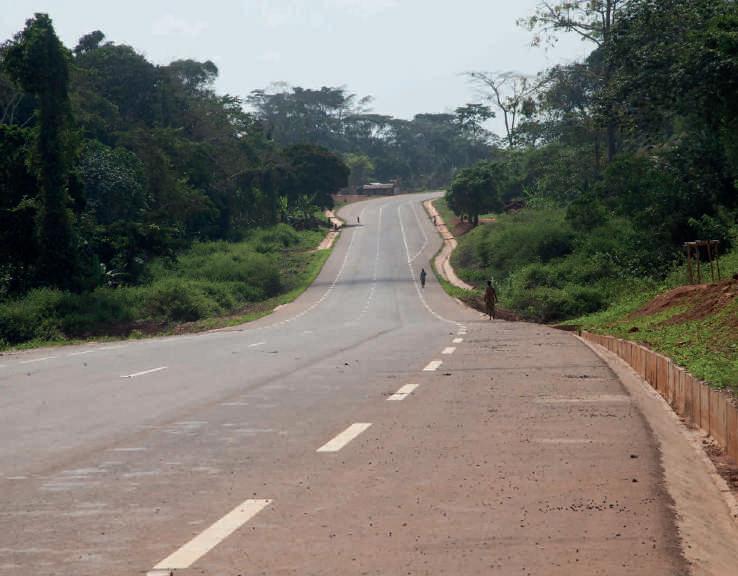
National road No. 1 (Brazzaville-Pointe-Noire), commissioned in 2016, is at the heart of the country’s road network. It pursues a dual objective: to connect the Atlantic coast to the far north and, therefore, to open up all of the country’s departments. Thus, the Congo strengthens its position as a transit crossroads in Central Africa.
The construction of the road linking Congo and Cameroon achieved one of the objectives of the Central Africa Regional Integration Strategy Paper for the period 2019-
2025 (DSIR) which aims to address specific challenges, notably the infrastructure deficit. in the field of transport. Yaoundé is only a 7-hour drive from the Congolese border. This work will allow better movement of people and goods between the two countries, but also the opening up of areas with strong economic potential for agriculture, minerals and timber in the North of Congo and the South-East of Cameroon.
In addition to financing this corridor, the African Development Bank (AfDB) approved, in December 2019, a
23,234 km OF ROADS
3,111 km OF ASPHALT ROADS
601 km
RN 1 FROM POINTE-NOIRE TO BRAZZAVILLE
7 OPERATIONAL TOLLS ON THE RN 1
850 km
RN 2 FROM BRAZZAVILLE TO OUESSO
3,154.8 millions
TONS OF FREIGHT PER YEAR AS OF JUNE 1, 2023
loan of $56 million to finance the road axes between the two Congos, in particular the road-rail bridge aimed at connecting Yaoundé , Libreville, Brazzaville and Kinshasa. In March 2019, the management of the country’s main roads was entrusted to the private company La Congolaise des Routes S.A. (LCR), as part of a 30-year concession. These are the Brazzaville – Pointe-Noire (535 km), Brazzaville – Ouesso (835 km) and Brazzaville – Mindouli (150 km) corridors.
In 2023, the question of road maintenance will be the subject of real reflection after the damage observed after the torrential rains which fell in December 2022 on the Congolese capital. The work of the ministry will also consist of the overhaul and digitalization of administrative acts as well as the classification of driving licenses. Other major objectives: the construction and maintenance of the Ndéndé-Doussala-Dolisie-Pointe-Noire-Brazzaville corridors; Pointe-Noire-Brazzaville-Bangui-N’Djamena; Brazzaville-Oyo-Okoyo-Léketi-Frontière Gabon and Ouesso-Sangmélima-Yaoundé-Douala.

The only deep-water port in the sub-region, the Autonomous Port of PointeNoire, accessible day and night, offers particularly attractive navigation and anchorage facilities. This multi-purpose port has established itself as the hub of Central Africa.
1,800 meters
DOCK LINEARS
16 meters
DEPTH
800,000 CONTAINERS/YEAR
8,500 CONTAINERS/SHIP
With a coastline stretching approximately 170 km along the Atlantic Ocean, Congo is home to a deep-water port and provides access to the sea for two landlocked countries in Central Africa, Chad and the Central African Republic. The Port of Pointe-Noire, the only port in the Republic of Congo with a hinterland of more than 100 million inhabitants, plays a major economic role for the development of the sub-region.
The 84 hectares of the PAPN basin open onto the bay via a 180 meters wide entrance pass, extended by a 1,200 meters access channel. Two private shipchandler companies established in the port provide refueling for the ships. Drinking water and hydrocarbons are supplied to ships either at the dock (oil pipeline, tank trucks, etc.) or offshore by tugboats. Stevedoring, handling, consignment and transit activities are contracted to private companies.
The Autonomous Port of Pointe-Noire has a slipway for the careening of 700-ton ships, and private shipyards for maintenance and small naval repairs, as well as a large fleet of naval equipment and port tools. The PAPN welcomed the first ship carrying 15,000 twenty-foot equivalent unit (TEU)
containers on February 27, 2023. It is the largest container ship built by MSC Virgo in 2020 that has ever docked on the coast of Central Africa.
The docking of the large container ship also marks the first connection between Asia and Pointe-Noire, on the Africa Express service offered by MSC which offers the best crossing time on the market, between Asia and Central Africa . At the same time, it reinforces the position of the PAPN as the main gateway to the Congo Basin.
A multimodal wharf will be financed in a public-private partnership to the tune of $500 million with AD Ports Group, the exclusive developer and regulator of Abu Dhabi’s ports and related infrastructure.
The government will also create an international register of commercial and fishing vessels, in order to make Congo a flag state. It also intends to work to protect maritime areas against pollution, piracy and crime at sea.


The Republic of Congo has three international airports, Brazzaville, PointeNoire and Ollombo, and eight secondary aerodromes (Nkayi, Sibiti, Mossendjo, Makoua, Dolisie, Impfondo, Djambala and Ouesso).

3 INTERNATIONAL AIRPORTS
8 SECONDARY AERODROMES
4 INTERNATIONAL AIRLINES
The management of the three international airports has been entrusted to the company Aerco, whose shareholders are EGIS, the Congolese State as well as a South African investment fund AIIM (African Infrastructure Investment Managers). Air transport has advantages that could open up certain areas
of the country, but few airlines serve the hinterland and the flow of goods is still too low, the type of aircraft used by the two current domestic airlines (TAC and Canadian) not allowing it.
Priority is given to the operation of secondary airports, the resumption of the activities of the ECAir company and the Nouvel Air Congo company, the creation of terminals intended for flights at the request of specific customers as well as the completion of the international airport certification process.
The rate of compliance with the standards of Annex 17 of the International Civil Aviation Convention in the West and Central Africa zone has been revised downwards with a percentage of 54.2% in 2023 compared to that of 62 .29% in 2022. Also, the work of the third ordinary session of the National Civil Aviation Safety Committee (CNSA) allowed the adoption of a 2023 budget of around 2.5 billion FCFA, intended to finance reforms to the civil aviation security management system.
The railway (French acronym CFCO) is essential in transport and logistics in Congo. However, rail transport has outdated infrastructure. The State will rehabilitate the railway, the structures as well as the station buildings located along the railway network.
316 miles OF RAIL NETWORK
PLANNED TO CONNECT THE DEPARTMENT OF SANGHA TO THAT OF POINTE-NOIRE
10 billion OF DOLLARS FOR THE CONSTRUCTION OF THIS RAILWAY LINE
Most of the goods that arrive or leave the country use these infrastructures. This corridor offers the country an exceptional asset. It constitutes one of the best opportunities to diversify an economy still focused on oil exploitation. However, the dilapidated state of the railway infrastructure is worrying: out of a total fleet of 43 line locomotives available to CFCO, the company operating the railway network, only 12 are in service. CFCO’s activities are limited to the transport of small volumes of goods. Four Belgian-made locomotives were delivered in January 2023 to CFCO. The acquired locomotives constitute a start to the recovery of the company’s activities. They will be used to tow passenger trains or medium-tonnage services for the transport of fuel, cement or other essential goods. Passenger traffic between Pointe-Noire and Brazzaville resumed on April 27, 2023. With several hundred million tonnes, the Mbalam (Cameroon) and Nabeba (Congo) iron deposits are a major asset in the development of the mining sector of the two countries. Also, Cameroon and the Republic of Congo have decided to increase the length of the railway to be used to transport iron ore from the Mbalam-Nabeba project common to the two countries. Called Nabeba-

Mbalam-Kribi, this railway line will now be 610 km long, compared to 540 km previously. The infrastructure will be developed in 2023 in both countries by Bestway Finance. The Mbalam-Nabeba project hosts mineral resources of approximately 800 million tonnes and can be exploited over several decades.
Congo is considering the construction of a railway line to serve the north and the south with a view to facilitating the export of mining and hydrocarbon products. 1000 km long, this railway linking the Sangha department to that of Pointe-Noire, the emerging mineral port, should require an investment of 10 billion dollars. five challenges will be met, in particular the rehabilitation of the railway track, engineering structures and station buildings located along the railway network. The ministry will also have to ensure the repair of the long tunnel, the strengthening of the rolling stock, the construction of a rolling stock upkeep and maintenance workshop in Brazzaville but also the reopening of training schools for railway professions.

Interview with Guy Georges Mbaka, Minister of River Economy and Waterways, since September 24, 2022. This sector faced with financial and infrastructural problems should be cleaned up to support the economic development of the country.
What are the main challenges to face regarding river transport in Congo?
Water navigation in Central Africa, generally speaking, is the preferred mode of transport. Indeed, the Congo Basin has an important hydrographic network through which populations and a varied range of products pass.
Second in the world after the Amazon in terms of flow, the Congo River constitutes one of the essential elements of the country’s river transport network and, moreover, forms, with the Oubangui, the transequatorial axis of the international river network. With its numerous tributaries, it represents a historic axis of transport and economic exchange for the entire sub-region, through the ports of Kinshasa in the Democratic Republic of Congo, Bangui in the Central African Republic, on the one hand, Brazzaville, the ports secondary rivers of Ouesso, Mossaka, Impfondo, Ngombe and the docking points of Liranga, Bétou, Boyélé and Makotimpoko in the Republic of Congo, on the other hand.
The river network in the Republic of Congo is very important: nearly 5,500 kilometers of waterways including 2,467 kilometers of inter-state river network, made up of the Congo River and the Sangha and Oubangui rivers. This network allows the traffic of passengers and goods between, on the one hand, Brazzaville and Bangui, in the Central African Republic, Brazzaville and Kinshasa, in the Democratic Republic of Congo and, Brazzaville and the Republic of Cameroon, through the port of Ouesso , on the other hand.
To revitalize the river navigation system, there are numerous challenges to overcome. Indeed, relaunching river transport in Congo is one of the main missions

assigned to the Ministry of River Economy and Waterways that I am responsible for leading.
To achieve this, a certain number of actions must first be undertaken, including:
- ensure the maintenance of waterways through dredging, marking and removal of watercourses, with a view to ensuring their navigability in all seasons;
- carry out the rehabilitation of existing port platforms and the construction and equipment of new ones;
- acquire new floating units, in order to increase the river transport offer;
- create a new river transport company in public-private partnership;
- build a modern shipyard. These actions constitute constraints that call for the need to initiate partnerships with investors with proven know-how.

It is with this in mind that promising contacts have been established with several partners who have expressed their desire to support the Congo in its efforts to revitalize the river economy and waterways sector, by investing in these projects deemed to be priorities. .
These are, succinctly presented, the challenges that the Government, through the Ministry of River Economy, is called upon to take up.
Where is the project between the Republic of Congo and the Central African Republic intended to improve navigation on the Oubangui River?
The Republic of Congo and the Central African Republic created, in 2007, a sub-regional integration body called the Economic Interest Group for the Common Waterways Maintenance Service, French acronym GIE-SCEVN. This inter-State structure has the mission of marking, dredging, desnagging, hydrographic and geodetic studies. The objective pursued is to ensure the safety of river navigation.
The GIE-SCEVN is, unfortunately, struggling to maintain its technical and operational capacity, due to the difficulties encountered in financing its activities. Furthermore, it benefits from funding from the World
Bank intended to strengthen its capacities, through the Regional Project for the Improvement of Road and River Transport Corridors in Central Africa (French acronym PRACAC).
Is the line connecting Brazzaville and Port Oyo operational?
This line will soon be operational. Indeed, a concession agreement was signed with an investor for the operation of the port of Oyo. The latter has included in its program of activities the maintenance of the Alima River, with a view to ensuring its navigability in all seasons. There is talk of cooperation between China and Congo in the context of the development of the Congo River. Where are the talks? And have you initiated other cooperation of this type with other countries?
To date, there is no active cooperation with China in the context of the development of the Congo River. However, a memorandum of understanding and a memorandum were signed in this context with Chinese private partners, in April and September 2019 respectively.
As the challenges are numerous, foreign partners willing to support the Congolese State in meeting them are all welcome.
The Brazzaville Autonomous Port and Secondary Ports (French acronym PABPS) is the country’s main river port which concentrates 95% of national river traffic. The authorities have taken up the modernization of the river network.

The Congo River constitutes one of the essential elements of the country’s river transport network and forms with the Oubangui the transequatorial axis of the international river network. These rivers are navigable up to the border with the CAR. The Congo River is the 2nd in the world after the Amazon in terms of flow. The navigable river network is 7,276 km including 5,200 km for the international network and 2,076 km for the domestic network. The inland river network includes the following waterways: the Léfini, the Likouala Mossaka, the Likouala aux herbes, the Alima, the Kouyou, the Ibenga and the Motaba. Despite this important network of waterways, river transport remains a weak link in the multimodal transport chain.
PABS, a structure responsible for managing traffic and use of the country’s river and secondary ports (Ouesso, Ngombé, Mossaka, Impfondo, Oyo, Makoua, Boundji, Etoumbi and Owando), is experiencing a difficult financial situation caused in particular by the decline traffic on the Congo River due to the continued silting of ports and competition from uncontrolled ports upstream of the port of Brazzaville. Due to its shallow draft, particularly at the Port of Brazzaville and especially in the dry season, the Congo River is only navigable six to seven months per year. The Economic Interest Group responsible for the joint service for maintaining the waterways of Congo-Brazzaville and the Central African Republic (French acronym GIE-
7,276 km
NAVIGABLE RIVER NETWORK
5,200 km FOR THE INTERNATIONAL NETWORK
2,076 km FOR THE INDOOR NETWORK

SCEVN), created in 2007, is struggling to fully accomplish its mission. After years of poor performance, the river port of the Congolese capital returned to sustained activity in 2022, with a positive balance sheet, and hopes to boost its traffic.
The resumption of traffic on the Congo and Oubangui rivers will not only facilitate the movement of people and goods, but will boost river tourism.
A shipyard will be built in the Ignié district, in the same area as the location chosen for the Brazzaville/Kinshasa bridge-road-rail project. The construction of the shipyard will allow Congo to acquire a public shipowner for maintenance and repair of boats, in support of the Autonomous Port of Brazzaville and secondary ports. The shipyard was sold for 100 billion FCFA by the Congolese state to a private investor.
Another large-scale initiative, essential for the river transport chain, is the shipyard which is relocated
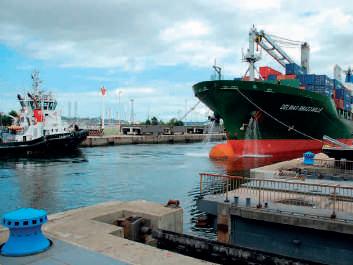

from the old site located in downtown Brazzaville. The new technical installations will have the advantage of extending over a large area and being equipped with more modern equipment.
The development of the river economy depends in part on the establishment of structures dedicated to the construction, repair and maintenance of shipping units. The Project to Support the Regulation, Facilitation and Securing and Sustainability of River Transport in the Congo Basin (PARFSED) aims to contribute to the improvement of river transport infrastructure in the Cicos area for make it a corridor for opening up and integrating the Central African sub-region.
The launch of the Digital Transformation Acceleration Project (French acronym PATN) constitutes a crucial step in the World Bank’s continued involvement in digital transformation in Congo.
Franz R. Drees-Gross, Regional Director of the Infrastructure Program at the World Bank, on January 24, 2023, during the launch of the PATN in Congo.
To meet the challenge of internet access for all at reduced prices, Congo will carry out the Digital Transformation Acceleration Project (French acronym PATN) until 2028. The challenge of digital development in Congo is very real through a very favorable internal dynamic and the emergence of numerous start-ups.


Léon Juste Ibombo has been Minister of Posts, Telecommunications and Digital Economy since April 30, 2016. He is in charge of the implementation of the national strategy for the development of the digital economy, Congo vision Digital 2025.
Born on November 30, 1968 in Brazzaville, Léon Juste Ibombo studied political science at the School of Advanced Studies in Social Sciences in Paris.
Carrying out his professional career from 1997 in France, his multiple internships in the field of the fight against corruption and other investigative mechanisms and methodologies will be important assets in the accomplishment of his functions successively in the positions of Chief of Staff of the Vice-President and Head of Department in charge of Communication and Education of the National Commission for the Fight against Corruption, Concussion and Fraud in the Office of the President of the Republic of Congo.
President of the Think Tank the Circle of Espers and Promoter of Sassouism, his interventions and political analyses, quick to enlighten public opinion on the issues of the moment and to come, will reveal it to the national political class and to international opinion like a credible voice.
Thus, on June 6, 2015, his political dedication led him to create, with compatriots sharing the wish to see the birth of a New Republic in Congo, the National Movement for the New Republic (M2NR), an associative platform which participated active in the materialization of this wish, through the Constitutional Referendum of October 25, 2015.
Responding to the very strong expectation of a rupture, expressed by the Congolese during the presidential election of March 20, 2016 and the need for rejuvenation of the Congolese political class, the President of the Republic, Denis Sassou Nguesso, appointed, on April 30

2016, Mr. Léon Juste Ibonbo as Minister of Posts and Telecommunications in the very first government of the New Republic.
On June 8, 2023, alongside the Prime Minister, Head of Government, Anatole Collinet Makosso, Léon Juste Ibonbo officially launched the European component of the Digital Transformation Acceleration Project (French acronym PATN). The project aims in particular to support the diversification of the economy in the Republic of Congo. On the one hand, it is about promoting a qualified workforce capable of thriving in a digital economy through the strengthening of digital skills in accordance with business requirements. On the other hand, by using digitalization to improve governance, the project aims in particular to contribute to the improvement of public services for citizens and businesses, to a more efficient public administration, thus contributing to the improvement of the climate business and investment. The PATN is fully aligned with the National Development Plan 2022-2026 and the “Congo Digital 2025” strategy. It is implemented by a project management unit (French acronym PMU) under the supervision of the Ministry of Posts, Telecommunications and the Digital Economy.
To meet the challenge of internet access for all at reduced prices, the country will carry out the PATN until 2028, financed to the tune of 100 million dollars by the World Bank and 40 million euros by the Union. European Union and the European Investment Bank (EIB).
KEY FIGURES
13.995 billion OF FCFA ($23.3 MILLION) IN 2023 FOR INTERNET ACCESS
3.02 millions
MOBILE INTERNET SUBSCRIBERS (2022)
11.088 billion
FCFA TOTAL REVENUE FROM MOBILE TELEPHONE IN JANUARY 2023
1.743 billion
FCFA MOBILE MONEY INCOME IN JANUARY 2023 (+22.1%)
134% INCREASE IN TOTAL CALL TRAFFIC IN 2022
153
LOCALITIES COVERED BY MOBILE TELEPHONE AND INTERNET BY FASUCE
The general objective of the PATN is to support the modernization of public administration information systems and the development of the digital economy in the country. A national priority, this strategic investment is part of the development of the digital economy through the “Congo Digital 2025” strategy which focuses on e-citizen, e-government and e-commerce. This is an area of the 2022-2026 National Development Plan with strong social and economic impact: development of digital
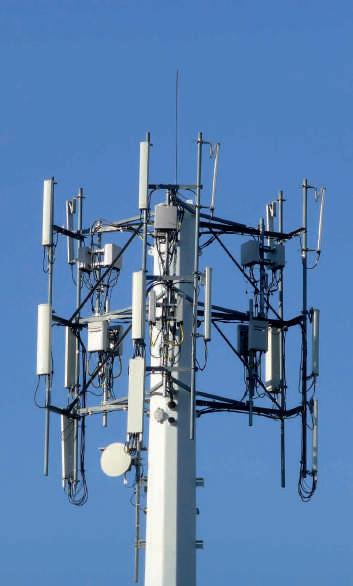
skills, job creation and diversification of the economy. The PATN will increase access to high-speed Internet in areas that are not yet connected.


Three development partners are mobilized for this flagship project of 136.5 million euros (approximately 89.4 billion CFA francs). The project combines a donation of approximately
10 billion CFA francs from the European Union, a loan of 17 billion CFA francs from the European Investment Bank and a loan from the World Bank of 100 million dollars.
The European component was officially launched on June 8, 2023 with a focus on strengthening governance through digitalization, improving employability through strengthening the digital skills of the Congolese population, data protection personal and cyber security and the implementation of priority IT systems, particularly in the higher education and health sectors.
Reducing inequalities and strengthening social inclusion through digitalization while placing emphasis on women and young people is another of the priorities of this project. On the one hand, by developing the digital skills of young people and establishing an environment conducive to innovation and entrepreneurship. On the other hand, by encouraging strong participation of women and girls through dedicated actions in order to contribute as a priority to the economic empowerment of women.

Interview with Louis-Marc Sakala, Director General of the Post and Electronic Communications Regulatory Agency (French acronym ARPCE) since March 2020, who supports the inclusion of digital in all sectors of the country by reducing the digital divide within the population.
You have placed the year 2023 as that of digitalization. Tell us about this initiative?
Digital technology has revolutionized and continues to revolutionize the world, businesses and administrations but also our way of living with notable advances such as Artificial Intelligence and the growth towards the organization of a single networked world. This march being initiated, we either endure it or we build it. ARPCE cannot remain on the sidelines of such technological innovations. One of the criticisms often made of Africa is the concern for governance, so the main objective of this digital transformation is to improve the governance and performance of our institution. The challenges of this digitalization decision for the ARPCE are also human and societal. Human because our employees must embrace digital transformation and improve their skills. Societal because this will focus on the need for proper security of personal data and environmental responsibility.
Faced with environmental issues, do you anticipate the transformation of a sustainable and ecological Internet?
To begin with, according to the IPCC, 70% of greenhouse gas emissions are due to the use of fossil fuels. Globally, the digital sector is responsible for nearly 4% of global greenhouse gas emissions, a figure that could double by 2030. The booming digital sector consumes more and more energy, necessary to power centers data, networks and
terminals used by billions of users around the world. Faced with this observation, the Congo, through its position and its environment as an ecological basin, is mobilizing to direct its economic and social development towards a sustainable trajectory, consistent with national and international environmental protection objectives. “Think global and act local: think globally and act locally”. The transition to sustainable digital technology will not only be achieved through technical or regulatory levers, it will also have to be deeply anchored in culture, awareness and education, and support for change. This is how ARPCE has been setting up the sustainable Internet project for two years already in association with NGOs like Pratic.
How does your digital responsibility materialize? Internally, we lay the foundations for processes in order to integrate a dose of digital sobriety into the use of digital tools and products, and compliance with standards during acquisitions. For the sector, we have put in place, with the support of an experienced firm (SBV), a roadmap which began with an inventory of the sector’s environmental responsibility and the level of awareness of stakeholders as well as their commitment to works aimed at reducing the environmental footprint of digital technology in Congo. At the end of this stage, our teams implemented an action plan to reduce the carbon footprint. It is mainly based on 3 segments: telecommunications networks, construction and management of Datacenters as well as digital uses. This action plan aims to start with awareness raising and not regulations or regulation, until the ecosystem matures. Tools have therefore been put in place such as an observatory visible on https://internet-soutenable.arpce. cg/observatoire/public/ to provide information on progress and indicate processes. A project to label the structures is currently being validated. This system will encourage stakeholders to engage in governance and management that takes responsible digital technology into account. To conclude, I will say that today we are taking a set of measures so that, tomorrow, when telecommunications in Africa are subject to environmental objectives for the good of our planet, Congo is already ready and even in advance.

At the heart of the digital revolution,ADDINN Group, a multinational companyconsulting IT, has traced its path to excellence since its founding in 2012. The group has built a stellar reputation for providing digital transformation solutions to businesses and institutions around the world.
With more than 11 years of expertise, ADDINN Group has established itself as a preferred partner in key sectors such as public, transport, banking and insurance. With a team of more than 100 consultants and engineersdedicated, the group has marked the success of more than200 projectstechnological, generating an impressive turnover of 6 million euros in 2022. The group’s know-how is also demonstrated by thecertification of 40 expert consultants in their respective fields.
Apart from the parent company based in Paris, ADDINN Group is expanding its presence in both the Euro-Mediterranean and African markets, through its subsidiaries in Tunisia and at Congo-Brazzaville (ADDINN AFRICA). The group also maintains privileged links with partners in Gabon, the Democratic Republic of Congo and Belgium

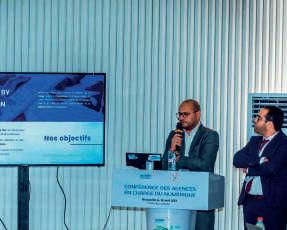
ADDINN Group stands out for its cutting-edge services and solutions that catalyze the digital transformation of companies and institutions:
- Business and Technical Advice: Thanks to its expertise in IT project management, the agility of its development methods and its ability to minimize risks, the group ensures fluid project management, ranging from steering to organizational changes.
- Digital & Software Factory: Thanks to its development, UX/UI design, software quality management, data analysis and DevOps engineering ‘laboratories’, ADDINN Group implements digital solutions optimized for an immersive and optimal user experience.
- Sectoral IT Solutions: Tailor-made solutions have been designed by the group’s R&D department for the banking, insurance, transport and public sectors (e.g. management of customer complaints and recoveries, disaster management, management of public markets, etc.)

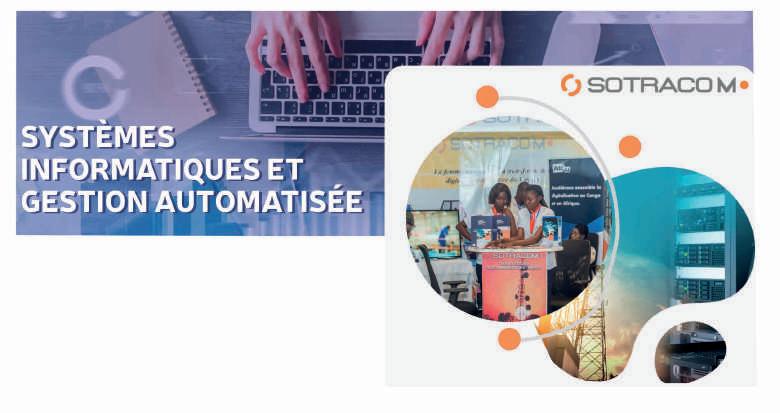
SIGA is at the heart of technological innovation and automation of management systems. Leader in Tunisia in the business applications market, the company provides concrete solutions in terms of objectives and strategies. It provides effective and adapted management and information systems in order to combat complexity, generate new opportunities and make an entire organization work towards achieving the same objective. For more than twenty years. FOLLOW has acquired knowhow, skills and experience allowing it to successfully carry out any IT project with all its aspects. With a studied growth policy and a highly qualified team enriched with extensive experience and strategic partnerships, SIGA operates in a multitude of sectors and offers diversified solutions in several areas.
The FOLLOW systems are homogeneous, scalable and complete. They allow easy, efficient and global management, while ensuring simplified and flexible access to information, traceability of actions and continuity of service.
SIGA offer a range of solutions including ERP, specific business systems such as CRM, Technical Management of Social Funds and Management of Health Insurance while being efficient in management and control via dashboards provided by a Business Intelligence tool.
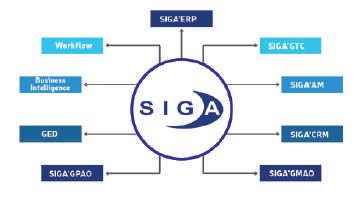
Specialized in IT infrastructures, SOTRACOM is a solidarity economic interest group which operates in the field of data centers; call centers; construction
LAN and WAN network; network security; construction of fiber networks; design, construction and maintenance of electrical networks; as well as digital transformation. Our mission is to create value through innovation, at each stage of your transformation, from strategic thinking to operational implementation and deployment of your projects.
We are present in several African countries including Morocco, Tunisia, Senegal, Ivory Coast, Republic of Congo, DRC, Angola and Kenya.
- Mobile Network Site
- Transmission by Mobile Network
- IP-MSAN fixed network service
- Break out (Infra-Passive) – MSC
- Installation & Wiring Low Current
- Backend and FTTX engineering services
- Cable Works Back Bone & FTTx
- Business and technical advice
- Digital and Software Factory
- Professional services
- Marketing support
The final objective of Congo Digital 2025 is to establish Congo as a true information and knowledge society. An essential tool for the materialization of the will of the President of the Republic, as defined in his social project.
The national strategy for the development of Congo’s digital economy called «Vision Congo Digital 2025» was approved by the Council of Ministers in May 2019. The legal and regulatory framework for the development of the sector is already in place with the recently adopted laws and relating to the protection of personal data, which aims at private life and public freedoms; the law on cybersecurity for the protection and integrity of networks; the law relating to electronic transactions which will govern electronic commerce, electronic signature, electronic certification; the law relating to the fight against cybercrime which defines all the offenses likely to be committed on a network or a digital terminal. The government has divided three main pillars of which governance and management would have an accelerating effect on development. They focus on the offer of services and digital content respectively for the general public (e-citizen), for digital administration (e-government) and for the development mechanisms of private businesses, linked to ICT (e -business).
The challenge of digital development in Congo is very real through a very favorable internal dynamic, but which will be increasingly permissive with a qualitative leap in
infrastructure. The challenges being known and recorded in the national strategy for the development of the digital economy, require updating according to the rapid developments experienced by the sector.

The United Nations Economic Commission for Africa (UNECA) has launched the region’s first artificial intelligence (AI) research center in Brazzaville, capital of the Republic of Congo. This revolutionary center dedicated exclusively to advancing research through AI aims to advance digital technology in Africa in the areas of digital policy, infrastructure, finance, skills, digital platforms and entrepreneurship. The scientific research center is located at Denis Sassou Nguesso University in Kintélé, north of Brazzaville. Its mission is
to improve the current landscape of research in Artificial Intelligence (AI) in Congo and in Africa in general. Its role will also be to explore the potential of AI and the macroeconomic impacts, the transformative effects on societies and economies, particularly in the sectors of banking, health, agriculture, transport and the environment ; guide the use of AI to promote the economic and social development of the continent. Interdisciplinary research will be carried out at the center.
With an ecosystem favorable to the emergence of start-ups, Congo is enriched with tech innovators and entrepreneurs able to support it in its digital transformation, with solutions adapted to its realities.
Law No. 71-2022 of August 16, 2022 granting the recently promulgated digital startup and technological innovation label intends to offer numerous opportunities to Congolese youth by promoting the development of startups. This is a new step taken in the promotion of entrepreneurship in the Republic of Congo.
The 2023 edition of the Central African International Technology and Innovation Exhibition (French acronym Osiane) showed the emergence of start-ups in the digital sector. The mobilization of digital players, Congolese authorities and development partners strengthened the influence of the Osiane show. Placed under the theme, “Let’s innovate to progress”, this platform for networking and exchange on the opportunities and challenges of the digital economy intends to identify all the strategic axes beneficial to reconciling the digital and innovation couple in the service of progress.
In April 2023, Luvick Otoka Eyenget won the first Congo Basin start-up challenge prize. He was distinguished for his innovative project “Kéba na gaz”, a gas leak detection device. The promoter of the Technological Innovation and Artificial Intelligence Laboratory (French acronym Litia) won over the jury with the viability of his project. The start-up Tilia presented at least five gas detector prototypes: the first model of “Kéba na gaz” emits beeping sounds to alert members of the household once the gas is detected. Its inventor has just initiated the procedure to obtain certification from the Congolese Quality and Standardization Agency. Another prototype connected to the internet allows you to receive SMS alerts about a gas leak. A third model, also connected to the internet, helps locate the house and alerts firefighters or parents. The latest model is equipped with robotic technology capable of closing the gas bottle in the event of a leak to prevent a fire.
In December 2022, women dominated the podium of the 4th edition of the Dénis Sassou Nguesso Digital Innovation Prize. The young Congolese Carabine Banzouzi received first prize thanks to its Agri-Boost solution, a device which


makes it possible to automate irrigation, manage the pH of the soil and manage the disinfection of plants against devouring insects. Dajora Mouyombo Mfoutou, second award-winning woman, is the initiator of a newborn monitoring application. Coming third, Chirel Mongo is the creator of a military drone. In its “2021 Africa Tech Venture Capital” report, Partech reveals that Congolese start-ups managed to raise one million dollars from investment funds and other venture capital companies in 2021.
The sub-regional Central African Backbone (CAB) project, born from the desire of heads of state in the CAEMC zone, aims to put digital technology at the service of populations, by opening up departments and promoting digital inclusion.

As a national project, the CAB project’s duty and objective is to strengthen digital equality through the construction of high-speed infrastructure and digital links. The CAB project in its current phase is taking place with the assistance of the African Development Bank (AfDB).
The interconnection between Gabon and Congo, through the CAB 3 (Congo) and CAB 4 (Gabon) fiber optic projects was officially presented and inaugurated in April 2018. The fiber optic network work between Congo and Congo Cameroon were completed in June 2021.
The fiber optic under-river cable, materializing the connection between the telecommunications operators Silicone Connect
(Brazzaville) and its partner United (Kinshasa), arrived in Brazzaville in June 2022 from Kinshasa. This deployment operation is the culmination of a major project which will allow the operator, through this strategic partnership, to position itself internationally.
The interconnection of the two countries opens the way to new opportunities, particularly internationally. The operator Silicone Connect is already a concessionaire for the CAB network on the Congo-Cameroon axis.
The Central African component of the Central African Backbone (CAB-CAR) project entered its operational phase in 2023. Stretching over 935 km, it connects the Central African Republic (CAR) to the Republic of Congo and Cameroon.


Interview with Calixte Tabangoli, General Manager of Banque Postale du Congo (BPC), who, through the 2023-2025 strategic development plan, plans concrete measures for BPC to become the first Congolese banking group with a factoring subsidiary.
You have concluded a €10 million facility with Afreximbank to strengthen your factoring activities. What will this partnership bring to local businesses?
The Banque Postale du Congo (BPC) has chosen factoring to respond to the difficulties of access to financing for SMBs. Note that BPC is currently the leader in this activity on the Congolese market.
SMBs are not only job creators but they are also engines of economic growth and social development. Factoring should enable local businesses to:
- better manage their cash flow;
- eliminate the risk of non-payments;
- concentrate on their business;
- get bills paid faster.
Note that factoring is the only source of financing that grows with the company’s sales. The more sales increase, the more cash the company has, allowing it to constantly meet demand. In addition, this working capital line is unlimited in nature, because it depends on turnover rather than asset capacities. Sufficient working capital enables a company to achieve its operational objective and seize new market opportunities.
Can economic operators also, through the BPC, access leasing?
All economic operators – companies – regardless of their legal status can access leasing, after acceptance of their application files by the lessor.
The lessor credit company (BPC in this case) examines the financial situation of the company and gives its agreement on the financed asset.
The advice that could be given to a future investor is first of all to use an investment platform. Indeed, thanks to ongoing support, the future investor will be able to control their investments and obtain advice on the best investment strategy to adopt from home. It is obviously appropriate to invest in the theme that is close to your heart.
You have to start gradually in order to control risk-taking. Finally, an investor must plan for investment costs and seek useful support from experts.
Congo’s digital transformation project is considered by the government as a response to the problem of the digital divide, poverty and social inequalities. It is part of the National Development Plan 2022-2026.
The implementation of the national digital economy development strategy includes:
- “Congo vision Digital 2025” with its pillars, e-government, e-citizen and e-business;
- existing basic critical infrastructure, such as the National Telecommunications Coverage Project;
- the sub-regional fiber optic connection through the Central African Backone Congo-Gabon, Congo-Cameroon and Congo-Central African Republic project;
- the Access Fund for Universal Electronic Communications Services, the operationalization of which in two years has made it possible to connect more than 150 localities, or nearly 200,000 inhabitants and 18 university and educational establishments;
- The African Center for Research in Artificial Intelligence, with the support of the United Nations Economic Commission for Africa, hosted at Denis Sassou Nguesso University, including training courses for trainers in artificial intelligence and cybersecurity were organized with the help of the Smart Africa Alliance;
- Bodies monitoring, monitoring or promoting the digital economy such as the Postal and Electronic Communications Regulatory Agency, the National Information Systems Security Agency and the Agency of Development of the Digital Economy.
In its latest report, the World Bank recommends measures to improve market entry of new private sector players and ensure a level playing field for private and public operators. It recommends promoting regulation favorable

to competition in key sectors such as telecommunications, essential for the efficient functioning of other industries and crucial for the digital economy, the development of which is considered a priority by the Congo with regard to its objectives economic diversification.
The 2022/2026 national development plan plans to raise 8,000 billion FCFA, for the benefit of six priority development sectors including the digital economy. The government encourages the private sector and international investors to invest in the digital sector.
Whether in urban or rural areas, our populations have the right to good living conditions.
Extract from the speech presenting the government action program by the Prime Minister, Head of Government, Anatole Collinet Makosso.
Real estate is a priority sector of the NDP 2022-2026 with the construction of social housing and offices. In one of the most urbanized countries in Africa, the manufacture of cement and construction materials, and the production of lime, are all opportunities.

A priority sector of the National Development Plan (NDP) 2022-2026, real estate development aims to strengthen the legal framework, increase the supply of decent housing at lower costs and increase the real estate supply in favor of economic activities.

The housing ecosystem in Congo has many weaknesses. More than 90% of housing is built via self-construction. The current housing deficit requires the construction of a minimum of 15,000 homes per year, well beyond current production. As one of the pillars of the development strategy for the five-year period 2022-2026, real estate development responds to the need to involve this sector in the process of diversification of the Congolese economy.
A step had already been taken with Law No. 6-2019 of March 5, 2019, establishing the town planning and construction code, making it possible to regulate a sector often prey to
anarchy. This law, made up of 259 articles, is subdivided into two parts: the first is devoted to town planning and the second to construction. The government launched the social housing project in 2009. Since then, several houses have been built across the country, notably in Brazzaville, Oyo and Owando. However, many Congolese are forced to live in neighborhoods threatened by natural disasters because of the high cost of acquiring said housing, some of which has not yet been made available to the public. Despite the potential and opportunities it offers, real estate remains faced with numerous constraints. Many challenges must be met to make it a lever for strong and
70% OF THE CONGOLESE POPULATION LIVES IN CITY
37% IN BRAZZAVILLE
15,000 Units SOCIAL HOUSING DEFICIT PER YEAR
sustainable growth. Despite the existence of a growing real estate demand and the public real estate development company (SOPRIM), the supply of housing (economic and social) remains below demand. Specifically, this involves strengthening the institutional, legal and organizational framework of real estate; to increase the supply of decent housing at lower costs and to increase the real estate supply in favor of economic activities. To do this, the Government will implement the
development of real estate infrastructure, the promotion of housing and decent housing, and the governance of real estate development.
To facilitate access for as many people as possible to decent housing at a lower cost, projects will be implemented such as the construction and completion of housing in Diosso, the construction of buildings in Pointe-Noire (Camp IGET), the construction of an SS+R+6 building of the real estate development company at the Lumumba roundabout in Pointe-Noire, the construction and completion of housing in Owando, the construction of housing in Camp-Clairon, the construction of housing with the ADH group and the construction of housing with financing from BADEA, MAMBO social housing and Barnier case, construction and equipment of the two second and third industrial wood processing units in the SEZs and industrial parks, the completion of tails of accelerated municipalizations in the departments, the restructuring of precarious neighborhoods (DURQUAP Project, French acronym ), the construction of the departmental directorates of the ministry in charge of construction, the rehabilitation and equipment of the departmental directorates of the ministry

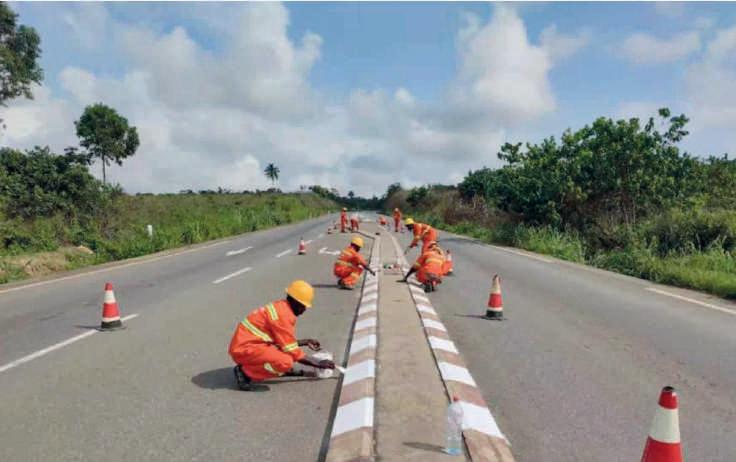
in charge of construction, construction and equipment schools and academies, the creation of a National Housing Fund, the project to improve the supply of and access to real estate credit, and the launch of the national HLM company.
For the real estate infrastructure development program, it involves building and rehabilitating administrative, public and economic infrastructure. Thus, the construction of the headquarters housing the management bodies of
SEZs and free commercial zones; the restructuring of precarious neighborhoods (DURQUAP project, French acronym); the construction of the international business city in Brazzaville; the construction of a shopping center in Mpila; the construction of two second and third industrial wood processing units in SEZs and industrial parks, etc. Building green, inclusive, healthy, resilient and sustainable cities will require intense efforts to coordinate national and local policies.


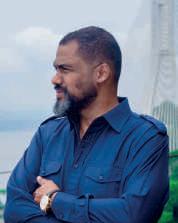
Interview with Serge Pereira, President of the Startstone Group, a real estate group which aims to transform the great potential of Congo and build a sustainable commercial presence in Africa and other targeted international markets.
Where is the construction of the tourism and real estate platform on the Congo River?
Work on the Riverside project was launched a few months ago. As a prelude, we carried out all the necessary studies (geophysics, geotechnical, currentology, bathymetry, higher water levels and environmental impact studies) for its implementation. The first work carried out consisted of purging the banks under which debris had accumulated over the years, then the dredging work began, therefore the addition of sand to the site. This ongoing step is crucial, it consists of creating the seating area and allowing other complementary work at the same time. This process of recovering sand from the river bed also improves navigability in heavily silted areas. We have also created the access road and some machines are working on it. To date, sandbanks are taking shape, and allow the project to be better visualized. The general layout plan and detailed architectural plans are being produced in our offices.
How many jobs are at stake in the Riverside project?
The Riverside project is ultimately expected to create more than a thousand direct and indirect jobs; our strategy is to act as a developer, and thus we create opportunities for several Congolese companies, which in turn also create jobs. We have therefore at this stage carried out internal recruitment for the work in progress. According to the project organization chart, at the end of the construction of the platform, several jobs will be created for the construction phase.
In your real estate projects, do you take environmental issues into account?
Absolutely, we have a Health Safety Environment department dedicated to these important issues, which works in close collaboration with the Ministry of the Environment and Sustainable Development, which prescribes and guides us on environmental requirements. We have an internal Health, Safety and Environment department which ensures the strict application of the rules in this area, we have an internal operations plan, a biodiversity management plan, a waste management plan, a societal plan , a renewable energy plan and an environmental training plan for staff. Taking the Riverside project as an example, after an environmental and social impact study (French acronym EIES), we obtained a Certificate of Environmental Conformity, which allowed us to launch the work, an Environmental Management Plan (French acronym PGES) is attached), which are the measures prescribed by the supervisory Ministry, to manage the impacts of the project. We comply with it. We also participate in initiatives organized by the city and the Government on the protection of biodiversity.
Our hope is that the Riverside project will become not only the showcase of the city of Brazzaville, but also an example of sustainable real estate development. The neighborhoods that will be built will aim to be eco-responsible.
A priority sector of the National Development Plan (NDP) 2022-2026, real estate development aims to strengthen the legal framework, increase the supply of decent housing at lower costs and increase the real estate supply in favor of economic activities.
Thanks to financial support from the World Bank, the Urban Development and Restructuring of Precarious Neighborhoods (French acronym DURQUAP) project, under the supervision of the Ministry of Regional Planning, signed a contract in 2019 with the Urbaplan/Africurba/Cap Consultants group. relating to the development of local urban plans, detailed urban plans and restructuring plans for precarious neighborhoods in the cities of Brazzaville and Pointe-Noire. This allowed the development of the Moukoundzi-Ngouaka and Sukissa districts in Brazzaville, Tchiniambi and Mboukou in Pointe-Noire.
The work to restore the final versions of the local urban plans (French acronym PLU) of the cities of Brazzaville and Pointe-Noire took place in May 2022 in Brazzaville. The old master plan for the cities of Pointe-Noire and Brazzaville dates back to 1986. Brazzaville, PointeNoire and Kintélé, which benefits from its proximity to the capital, now have operational and regulatory urban planning documents. These tools will allow these localities to control their urban development through a concerted territorial project. In order to respond to the challenges of social cohesion, economic competitiveness and sustainable development, the PLU sets the land use rules and therefore the construction rules according to a zoning method. It makes it possible to locate all public areas, according to the parameters of demographic and

economic growth and density objectives. The PLU also makes it possible to precisely define what the growth of a city will be in the coming years.
The Group also delivered the final results of Lidar, which is a high-precision georeferenced background capable of serving as a cartographic support. Lidar represents significant added value for administrations with a view to developing a tool for managing land use and examining subdivision permits for construction purposes, and creating a fund cadastral register on which land titles will be registered. Added to this is the construction of a very precise topographical base to carry out hydraulic studies making it possible to more precisely calibrate the drainage works in the neighborhoods.
Villas, commercial or residential buildings and hotels are springing up almost everywhere in the country’s major cities. Local companies in the Building sector are doing well because the range of opportunities offered is very wide. The demand concerns the major needs of the State and businesses, up to the desire for access to property among even the most modest households.
The expected launch of the universal health insurance scheme should constitute the backbone of the 2023 social security agenda in our country, while increasing the attention due to other benefits in force.
Extract from the message from President Denis Sassou Nguesso on the State of the Nation to Parliament meeting in congress on November 28, 2022.
Access to basic reproductive, maternal and child health services remains a major challenge. Universal Health Coverage (French acronym CAMU) has been operational since July 1, 2023. The private sector provides more than 56% of healthcare provision.

Operational since July 1, 2023 the CAMU owes the acceleration of its implementation to the Head of State whose aim is to respond effectively to the legitimate expectations of the population in terms of healthcare supply and quality as well as care for insured.
Universal health insurance is a mechanism of solidarity and coverage of financial risks linked to illness which is based on three fundamental principles:
- the prior recovery of contributions: principle by which the insured pays his contribution to the CAMU for his care;
- risk sharing (or pooling): makes it possible to reduce the cost of healthcare by spreading the financial burden of an insured person across all contributors;
- the support guarantee. Through this fundamental principle, the CAMU covers access to care, ensures respect for the quality of the offer through the agreement of health facilities, the application of therapeutic protocols accepted in accordance with the defined basket of care. Its main objective is to provide access to health care for all, without exception or financial constraints. A solidarity contribution is established by the State, deducting 0.05% from the wealthiest, for the benefit of the most vulnerable and those most deprived in the face of illness. Through this, the government mobilizes the necessary resources to contribute to the implementation of the universal health insurance system.
These include, among other things, the requisition of working capital to carry out the operational start-up work; the availability of the national solidarity contribution for the benefit of the CAMU which is an emergency for the execution of its entry into operation plan. The services of the ministries in charge of finance and budget must put in place the mechanism which allows the CAMU to quickly dispose of the funds recovered under the national solidarity contribution.
Created by Law No. 12-2015 of August 31, 2015, the Universal Health Insurance Fund is the management body of the health insurance system in the Republic of Congo.
8 GENERAL HOSPITALS IN 2021
27
127
451 DISPENSARIES
597
51
This entity contributes to the establishment of a better health care system in Congo. It sustainably protects everyone’s health by working with all Congolese residents. This is its reason for being. Concretely, it supports policyholders throughout their lives, taking charge of their care regardless of their categories, resources or situations.


It serves prenatal benefits; allowances and aid for young households or birth bonuses; family allowances ; daily maternity benefits; expenses of childbirth and medical care caused by illness resulting from pregnancy or childbirth; benefits in kind
Coverage of medical care and costs as well as costs incurred by functional rehabilitation and vocational re-education; allocation of a pension in the event of permanent, temporary or partial incapacity for work; allocation of a daily allowance; funeral expenses allowance and survivors’ pension in the event of the death of the insured.
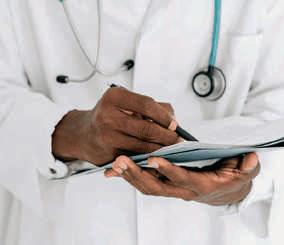

The normal old age pension; the proportional pension; early retirement; survivor’s pension; death grant; survivor’s allowance.
Caisse Nationale de Sécurité Sociale (CNSS)
Boulevard Denis Sassou Nguesso - B.P. 182 - Brazzaville - Congo
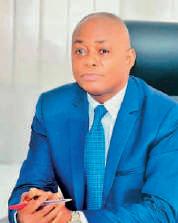
Interview with Evariste Ondongo, Director General of the National Social Security Fund (French acronym CNSS), a public establishment with a social vocation with seven departmental directorates.
What are the missions of the CNSS?
The CNSS is a public establishment of a social nature with legal personality and financial autonomy. Its essential mission is to manage the social security system for workers covered by the labor code in Congo. As such, it collects contributions and provides benefits in cash and in kind from the following three branches:
- The family benefits branch responsible for providing family and maternity benefits;
- The professional risks branch responsible for providing benefits in the event of a work accident or occupational illness;
- The pension branch responsible for providing old age, invalidity and death benefits.
What are the priority areas in your action plan? On January 28, 2023, during its budget session, the board of directors provided the CNSS with an action plan. This very ambitious action plan is focused on the constant modernization of work tools and the diversification of the regime’s sources of financing. It is built around four priority axes: the mobilization of financial resources; the modernization of management tools, working conditions and user reception; cleaning up management; the promotion of social security.
For each axis, precise objectives and specific actions which take into account the ambitions of general management are planned. By way of illustration, with regard to the first axis, the mobilization of financial resources, it is a question of implementing all possibilities to finance the activities of the CNSS in a sustainable manner, by
strengthening the contribution recovery mechanisms and diversifying resources.
Who is subject to the regime managed by the CNSS?
The CNSS manages all workers covered by the labor code without distinction of race, nationality, sex and origin when they are employed on Congolese territory on behalf of one or more employers notwithstanding the nature, form and the validity of the contract, the nature and amount of the remuneration.
The law equates to workers: Apprentices; Interns; SARL managers; General managers of public limited companies etc.
For companies, are declarations digitalized?
Yes, through the sitewww.CNSS.cg and on the E-declaration platform. This site allows employers to register on the platform; to authenticate and access the E-declaration platform; to download a monthly nominative declaration of salaries and contributions in order to make your declarations; to complete a monthly nominative declaration of salaries and contributions; finally print an acknowledgment of receipt; It should be noted that to make a declaration, the employer must have an account and register on the platform using a form.
The e-declaration application and the sitewww.cnss.cg are accessible to all employers regardless of their size. It meets travel constraints.
While pre-pandemic projections anticipated positive growth of around 4.6%, the Congolese economy would have contracted by 7.9% in 2020.

On the budgetary level, the government has adopted measures aimed at reducing the payment of taxes and duties for private companies. In June 2020, it also mobilized $50 million from the World Bank to provide emergency income supplements to households, including a one-off unconditional transfer of 50,000 XAF ($82) to 231,546 urban households.
Despite this support, the COVID-19 High Frequency Telephone Survey reveals that the economic damage suffered by households and businesses has been severe:
- In August 2020, around 82% of households experienced a decrease in their income from work or other incomegenerating activities, compared to the period before the pandemic;
- Half of households with school-aged children did not undertake any educational activity between April and October, when schools were closed;
- Most companies reported a decline in sales revenue from August to December, and compared to the pre-crisis period, 69% of companies across the country reported lower employee turnover ;
- Compared to the first quarter of 2020 when only 5% of companies were not in activity, 23% more closed temporarily or permanently in the second quarter.
With the impact of the pandemic, real GDP per capita fell by 7.9% in 2020. Economic growth rebounded in 2022. The -0.6% contraction in GDP in 2021 turned into growth positive of 4.3% of GDP in 2022, which should further accelerate to reach 4.6% of GDP in 2023 and 7.3% of GDP in 2024 (IMF).
The Congolese government has always given health a high priority. The emphasis is on prevention.
In June 2023, the WHO praised the Government of Congo for the remarkable progress made in the fight against non-communicable diseases, particularly with the establishment of several national health programs including that of the fight against cancer. The Congo has, in fact, adopted a National Strategic Plan to fight cancer 20222026. This disease has devastating economic and social consequences. The big priority is that cancer is no longer a fatality for the Congo, but that it is a controllable disease in order to reduce medical evacuations. Also, said plan will make it possible to inform and raise awareness among populations in general about risk factors; to promote access to medicines including the HPV vaccine and anti-cancer treatments to affected people; to collect, analyze statistical data and validate cancer research programs. The implementation of targeted interventions in this strategy should help improve the health and well-being of the populations of Congo.
The Global Fund in Congo has granted an allocation of more than 45 billion FCFA covering the period from 2024 to 2026, to fight against the three infectious diseases of HIV/ AIDS, tuberculosis and malaria. Tuberculosis is still rife in Congo and the government is moving towards a paradigm shift in order to get closer to the objectives of the strategy of eliminating this disease by 2030 because if tuberculosis is an infectious, contagious disease, it is preventable and curable.
The Global Fund is also involved in Congo in strengthening the cold supply chain with Cameps, strengthening laboratories, health training, community health and human resources. The Regional Steering Committee (French acronym CRP) of the Project to Strengthen Disease Surveillance Systems in Central Africa (French acronym REDISSE IV) aims to ensure control and strategies for strengthening the health sector in the region. Based on the “One Health” Platform, the CRP’s vision makes it possible to coordinate, in a multi-sectoral and multidisciplinary approach, all interventions to prevent, detect and respond to diseases in the ECCAS Zone.

Celebrated at the end of April 2023 in Pointe-Noire, by the Employers’ and Interprofessional Union of Congo (French acronym Unicongo), World Day for Safety and Health at Work focused on the prevention of accidents and occupational illnesses.
The country has 51 traditional medicine centers. The integration of traditional medicine into the health system follows WHO recommendations.
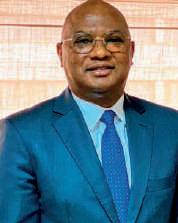
Interview with Charles Kouassi, Director General of the Ivorian National Social Security Fund (French acronym CNPS) since 2013. With a long career as a manager, he projects for the CNPS a monetary and financial portfolio of more than 1,000 billion FCFA in 2025 and 2,000 billion in 2030, while supporting public authorities to build a united Ivory Coast.
We agree that you have revolutionized social security in Ivory Coast. What did your actions consist of?
The economic model of social security funds was based on a principle of distribution and intergenerational solidarity. This approach is only valid if a sufficient number of assets cover retirement benefits. Our country was strongly impacted by social crises between 2000 and 2011. Our institution presented a cumulative deficit of around 200 billion FCFA including a negative net result of 32 billion FCFA in 2011, marking the limits of the basic economic model . Deeming it necessary to radically change the economic model, our action consisted in 2012 of reforming the retirement branch by carrying out parametric reforms, characterized by the revaluation of contribution rates from 8 to 14% and the modification of the retirement age. retirement age 55 to 60. These measures enabled the institution to achieve, in 2012, a positive result of around 9 billion FCFA and ten years later a result peaking at 150 billion FCFA. The President of the Republic, His Excellency Mr. Alassane Ouattara, as an enlightened leader, immediately understood the relevance of the reforms and took the necessary orders for their implementation.
Your strategy was therefore to make your fund an institutional investor. How does this materialize? Our objective is to contribute significantly to the development of our country and the ecosystem of the
sub-region, through targeted and informed investments to both support growth and job creation but also guarantee the provision of services throughout. making sure to revalue them regularly.
The socio-economic transformation initiated is materialized by our commitment to building a stronger economic and financial sector with equity investments and to becoming a player in the fight against the housing crisis. Our contribution to local and sub-regional development can be summed up over the last 10 years cumulatively, at around 285 billion FCFA in subscription to the bonds of the State of Côte d’Ivoire, 26 billion FCFA in state bonds of UEMOA, 126 billion FCFA in listed shares, 122 billion FCFA in unlisted shares, real estate assets of 262 billion FCFA, and the recent entry into the capital of PETROIVOIRE and BICICI. In addition to banking and real estate, other vital areas benefit, namely health, water, energy, transport and hotels.
What are the effects of this revolution for your policyholders and social partners?
In 10 years, we have carried out successive adjustments to the retirement pension of 8% in 2014, 5% in 2016, 5% in 2020 and 5% in 2022, with a commitment to carry out adjustments every two years. Pensions paid in the event of work accidents and occupational illnesses were increased by 8% in 2017, 5% in 2020 and 3% in 2022. Family allowances, which for more than 30 years were frozen at 1,500 CFA francs per month and per child, increased to 2500 then 5000 FCFA between 2015 and 2016. Studies are underway to increase them to 7500 FCFA from 2024. We implemented the Social Scheme for Self-Employed Workers in July 2019. To date, more than 200,000 selfemployed workers are covered. They will be able, like the more than 6 million self-employed workers that we hope to enroll, to benefit from replacement income in the event of maternity, incapacity and a retirement pension for life. We have put digital transformation at the heart of our strategy. In 2019, the launch of the “e-CNPS” platform made it possible to improve interactions with socially insured persons and social partners and facilitated their procedures with the CNPS. Today, the two major projects to materialize concern housing retirement and unemployment insurance.
The price of medicines constitutes a barrier to access to quality care for the majority of Congolese people. The government wants private investment in the field of pharmaceutical production to strengthen.

The signatory countries of the Lomé initiative, including Congo, have decided to criminalize the trafficking of substandard and falsified medical products. Congo-Brazzaville intends to legalize the monopoly on the exercise of the professions of qualified pharmacists and medical biologists and on provisions for the promotion of the national pharmaceutical industry.
In the market for medicines in bags of injectable solution for infusion, with a fleet of latest generation pharmaceutical machines using very sophisticated technologies, the Biocare laboratory was established in Congo in 2012-2013 with the aim of meeting the needs of hospitals in quality and quantity matters.
The pharmaceutical laboratory Biogaran announced in April 2023 the development of its activities in the Dolisie region in order to democratize the use of quality generic medicines and to extend its territorial coverage in the Republic of Congo, three years after its launch in Brazzaville and in Pointe-Noire. Biogaran, leader in generic medicines in France, markets in Congo a wide range of nearly 100 medicines produced 51% in France and 91% in Europe, making it possible to treat some of the most common pathologies in the country, at lower cost. The use of generics would not exceed 30% in CongoBrazzaville, but they constitute a choice alternative. Meeting international standards, generic drugs are as effective as the original drug but, being also much

cheaper, they allow patients to have access to care at a lower cost. The WHO estimates in this regard that the use of generic medicines significantly reduces the cost of medicines both for governments and for patients. A significant and positive example of the impact of generic drugs concerns the evolution of the prices of antiretroviral drugs that treat HIV. According to the WHO, the cost of therapy per patient per year fell from $10,000 to less than $100 following the introduction of generic
drugs, significantly increasing access to treatment: in 2003, only 500,000 people benefited from this care, compared to 15.8 million in 2015. A considerable advance allowing patients to have access to treatment. Regulatory harmonization and improvement of pharmacovigilance processes is an issue addressed by member countries of the Central African Economic and Monetary Community (CAEMC) and the West African Economic and Monetary Union (French acronym UEMOA).
The health sector in Congo offers investment opportunities to donors, technical and financial partners, private and companies, for the provision of services, pharmaceutical manufacturing, training or financing of the health system. health information.
